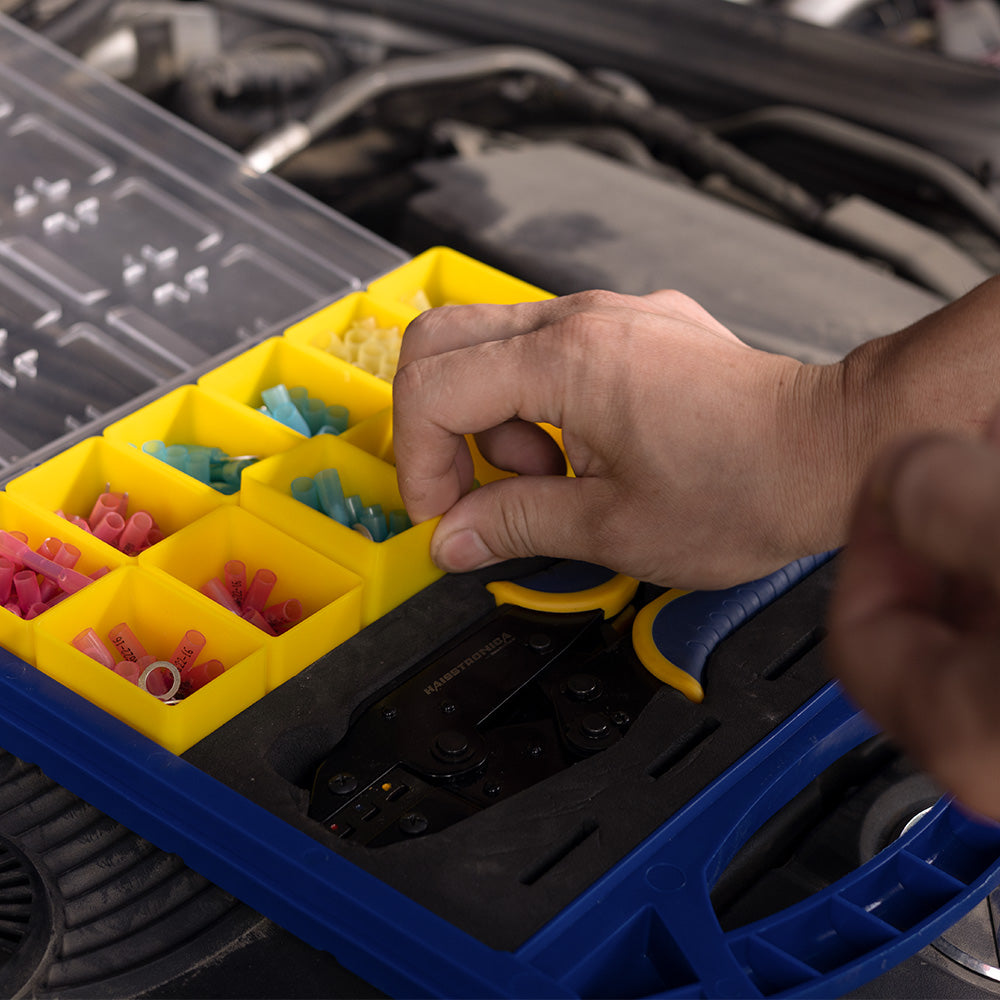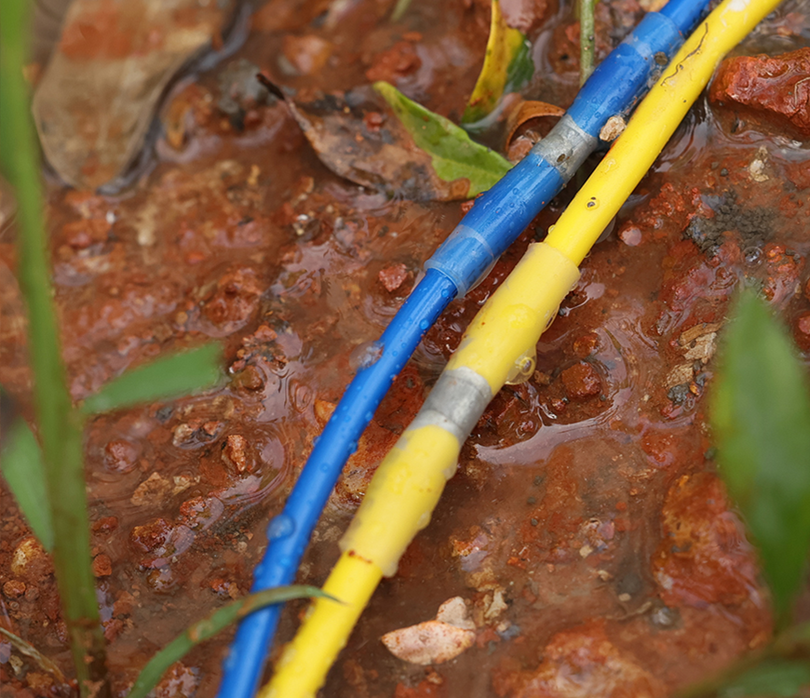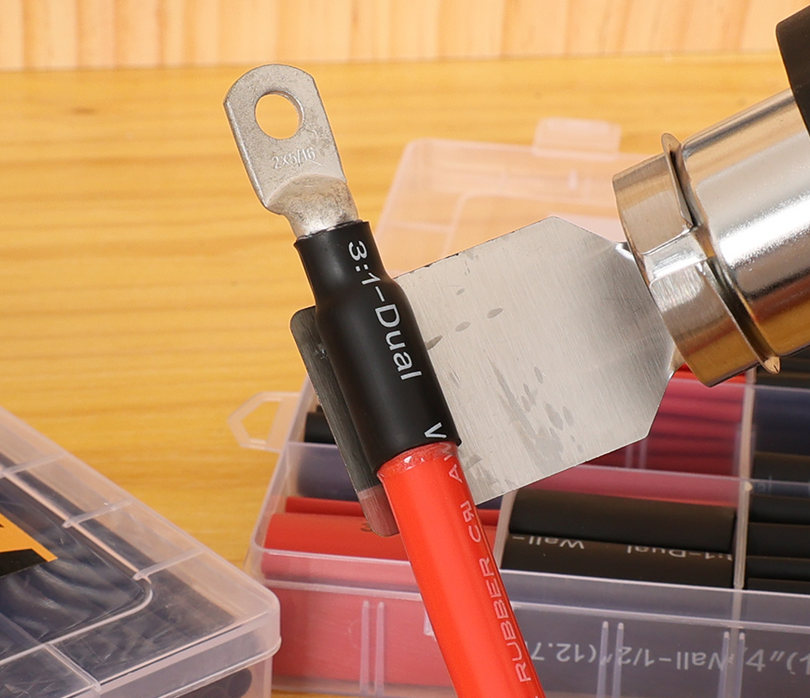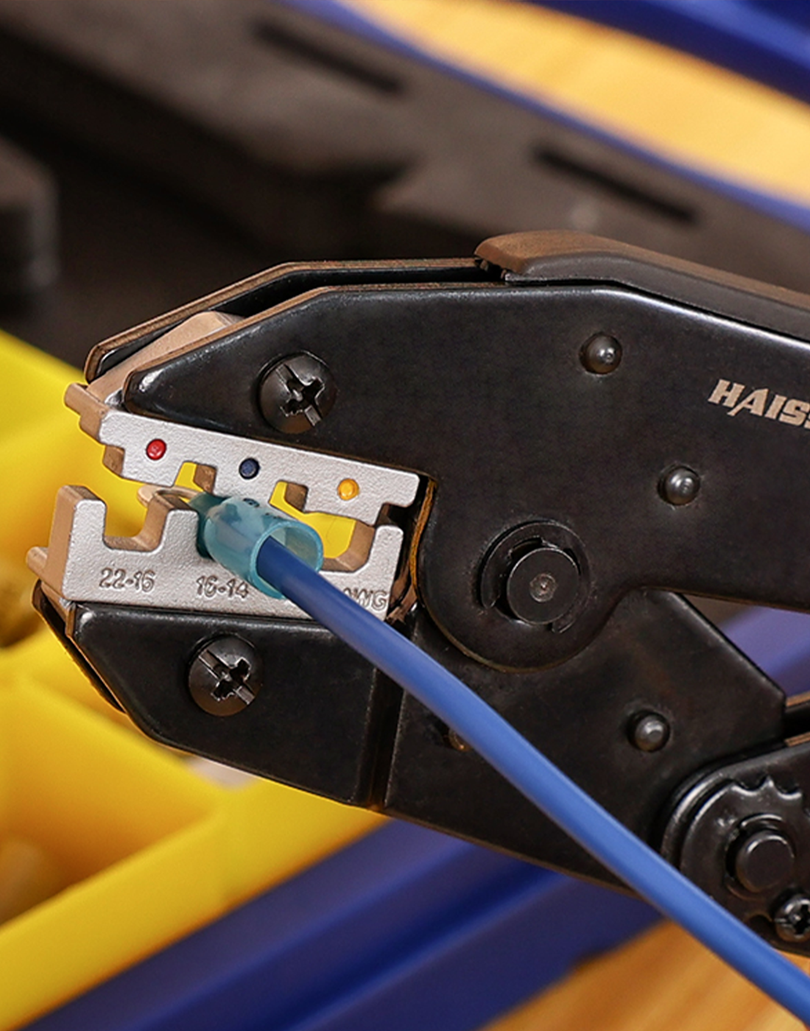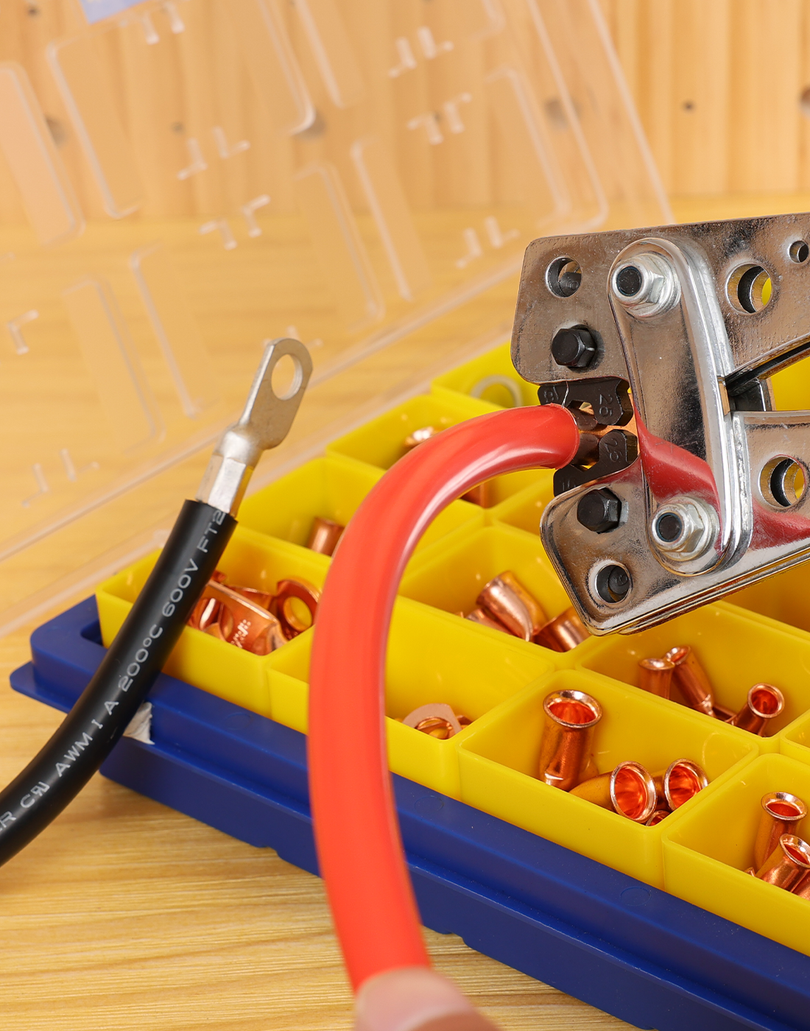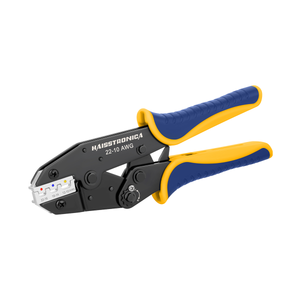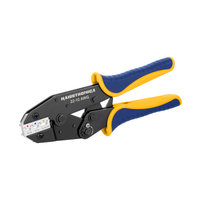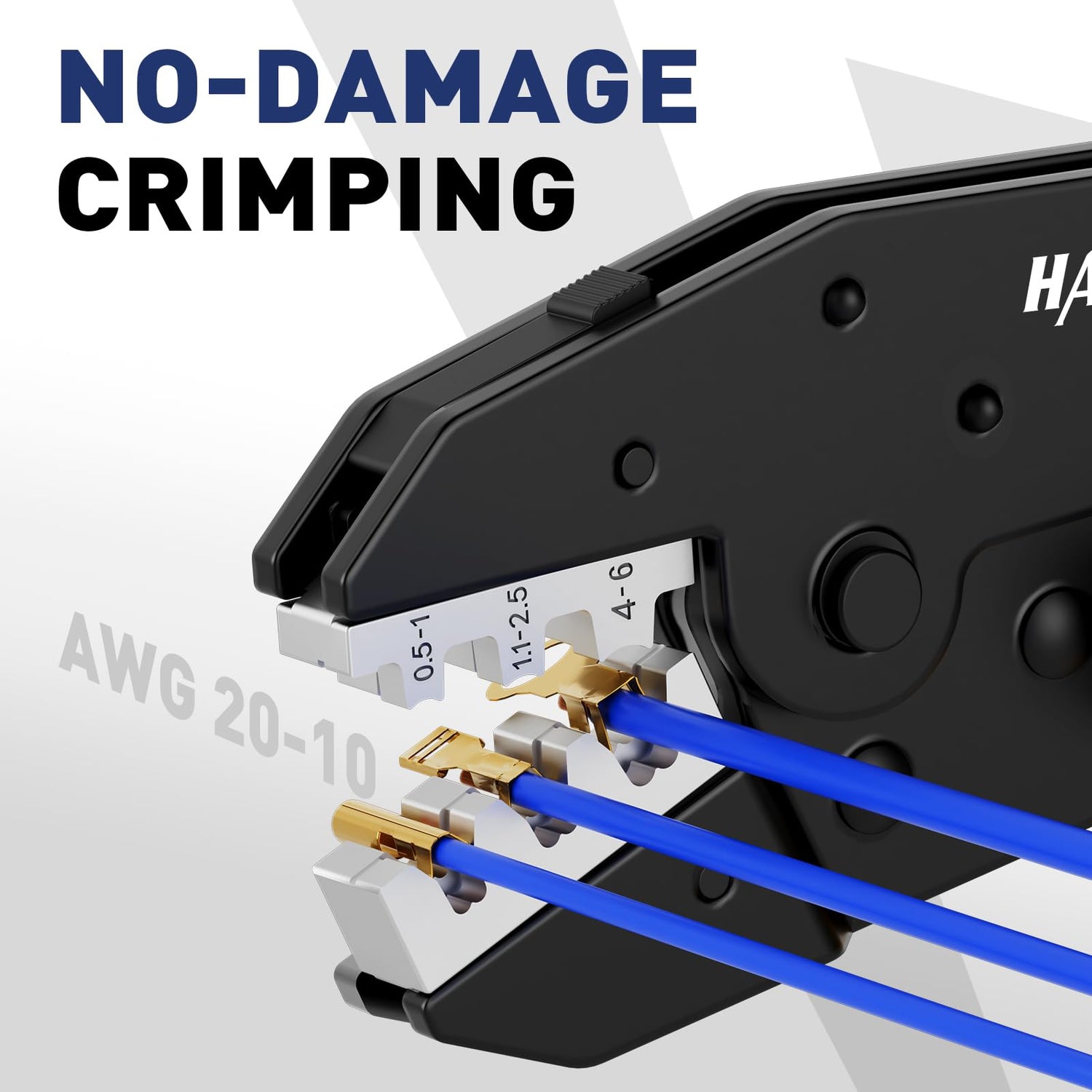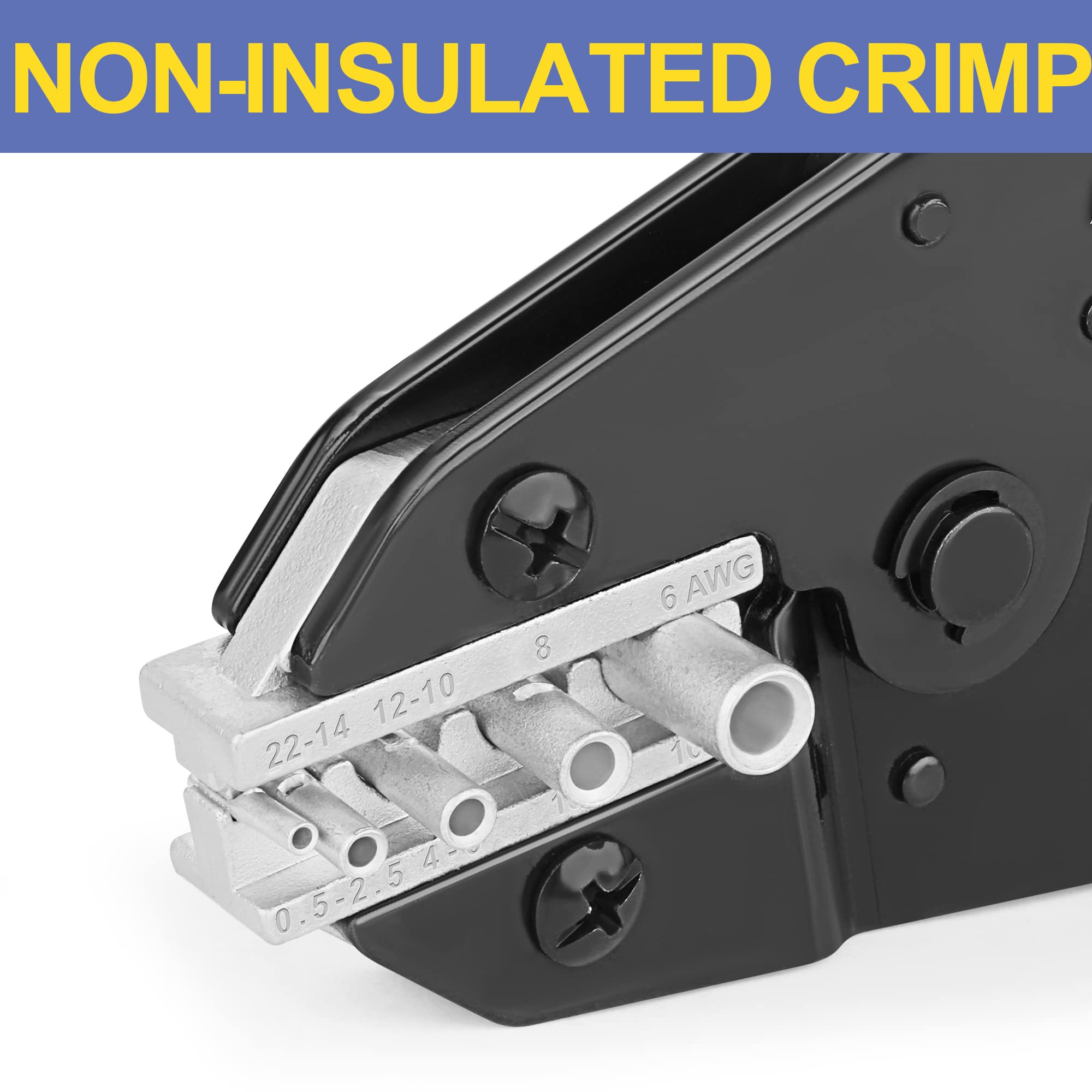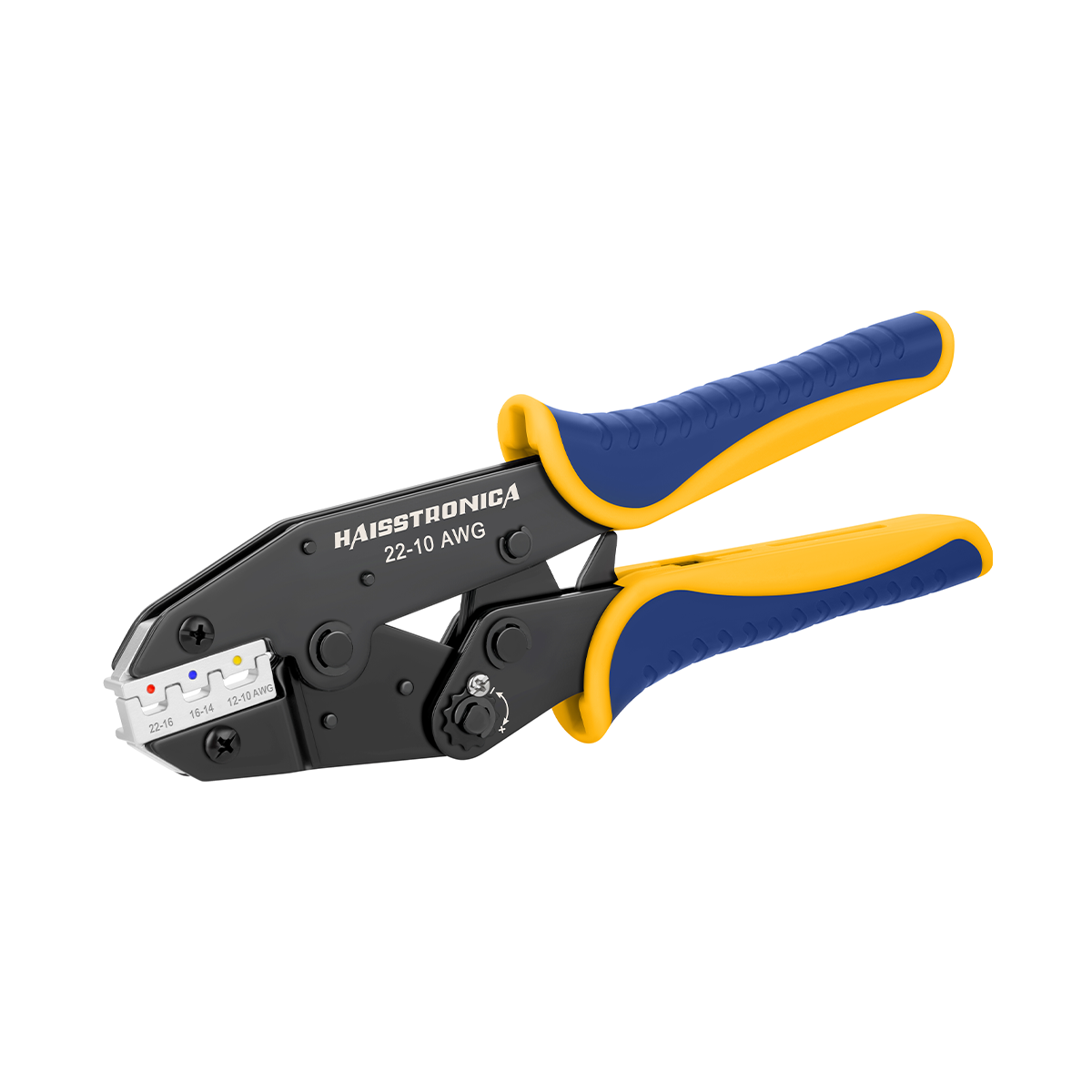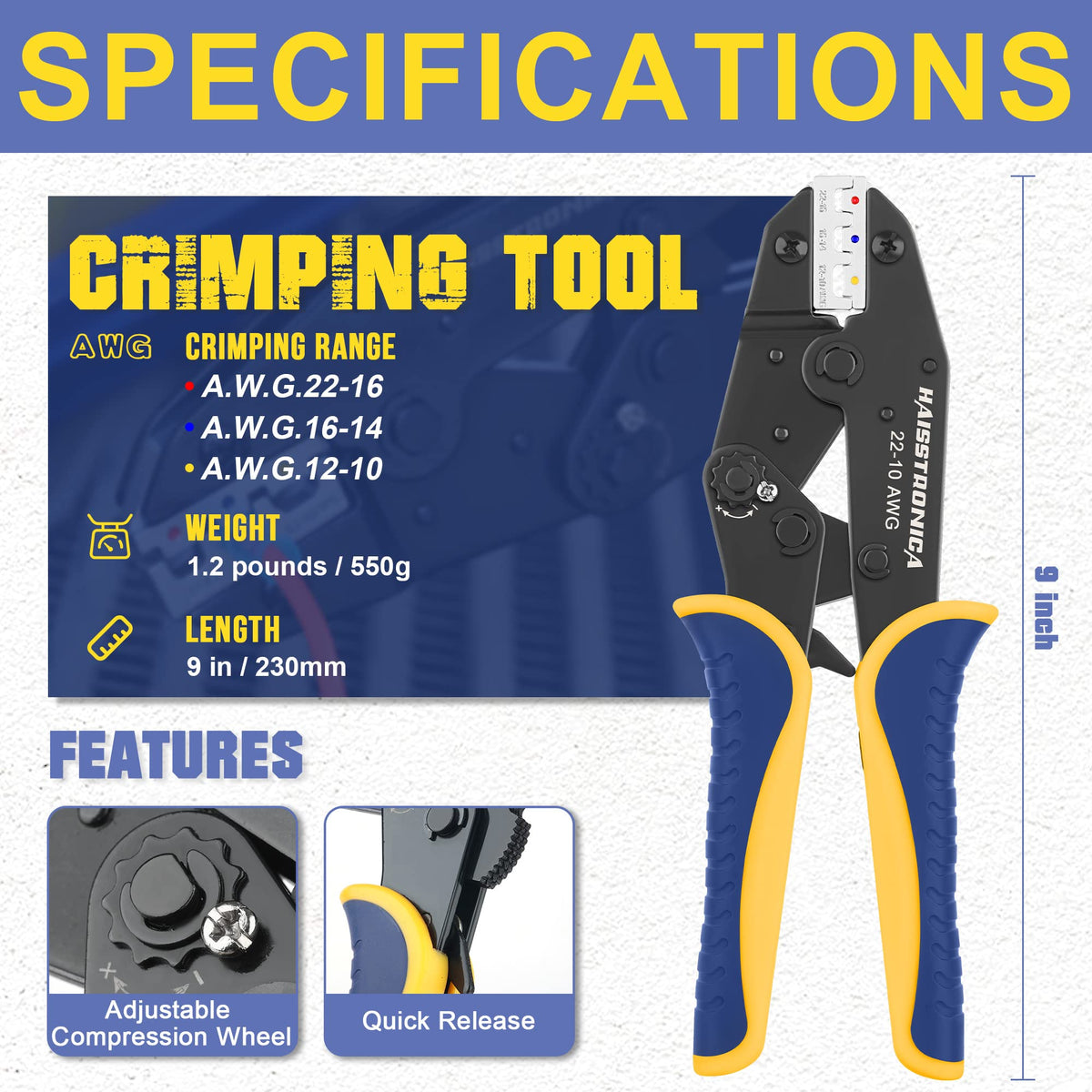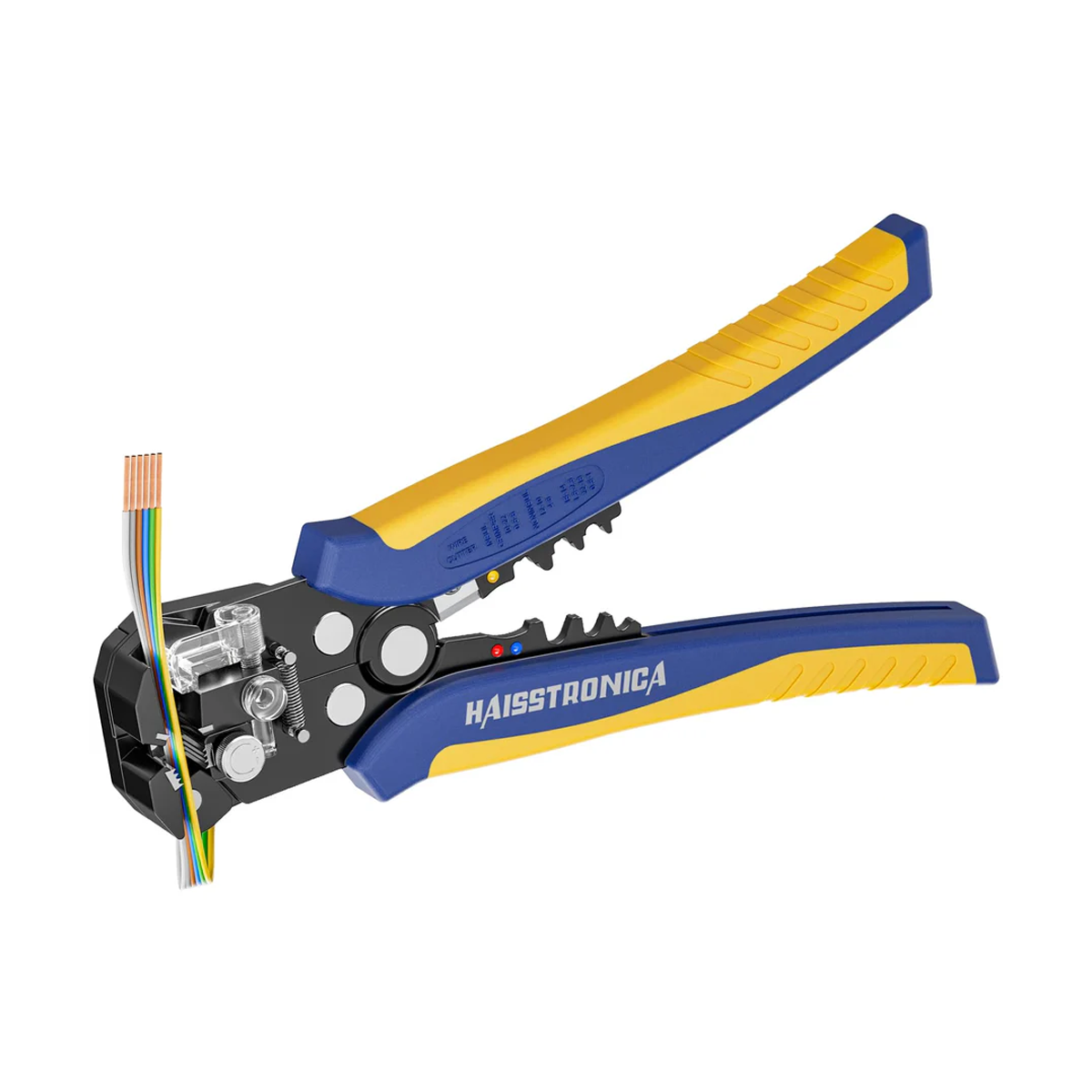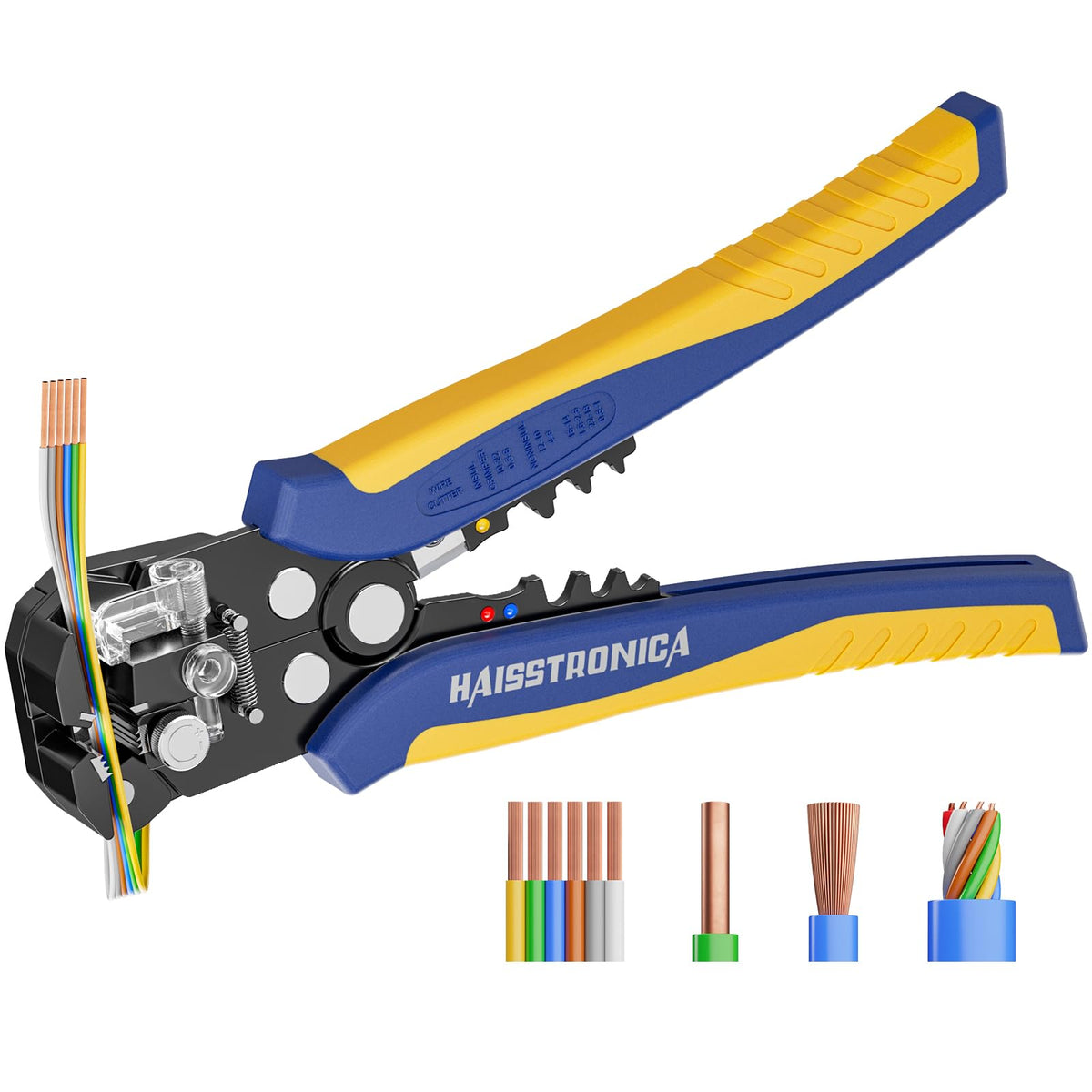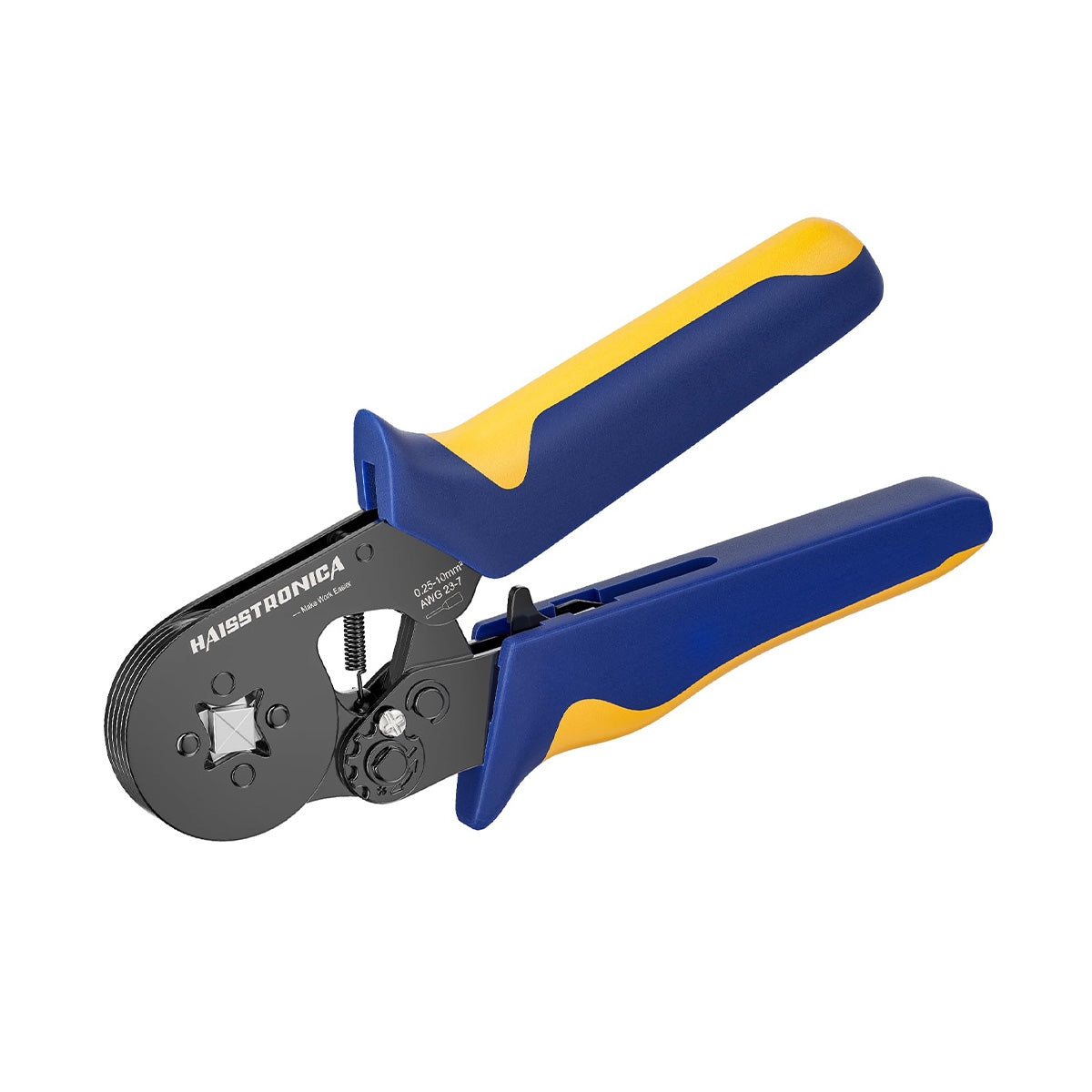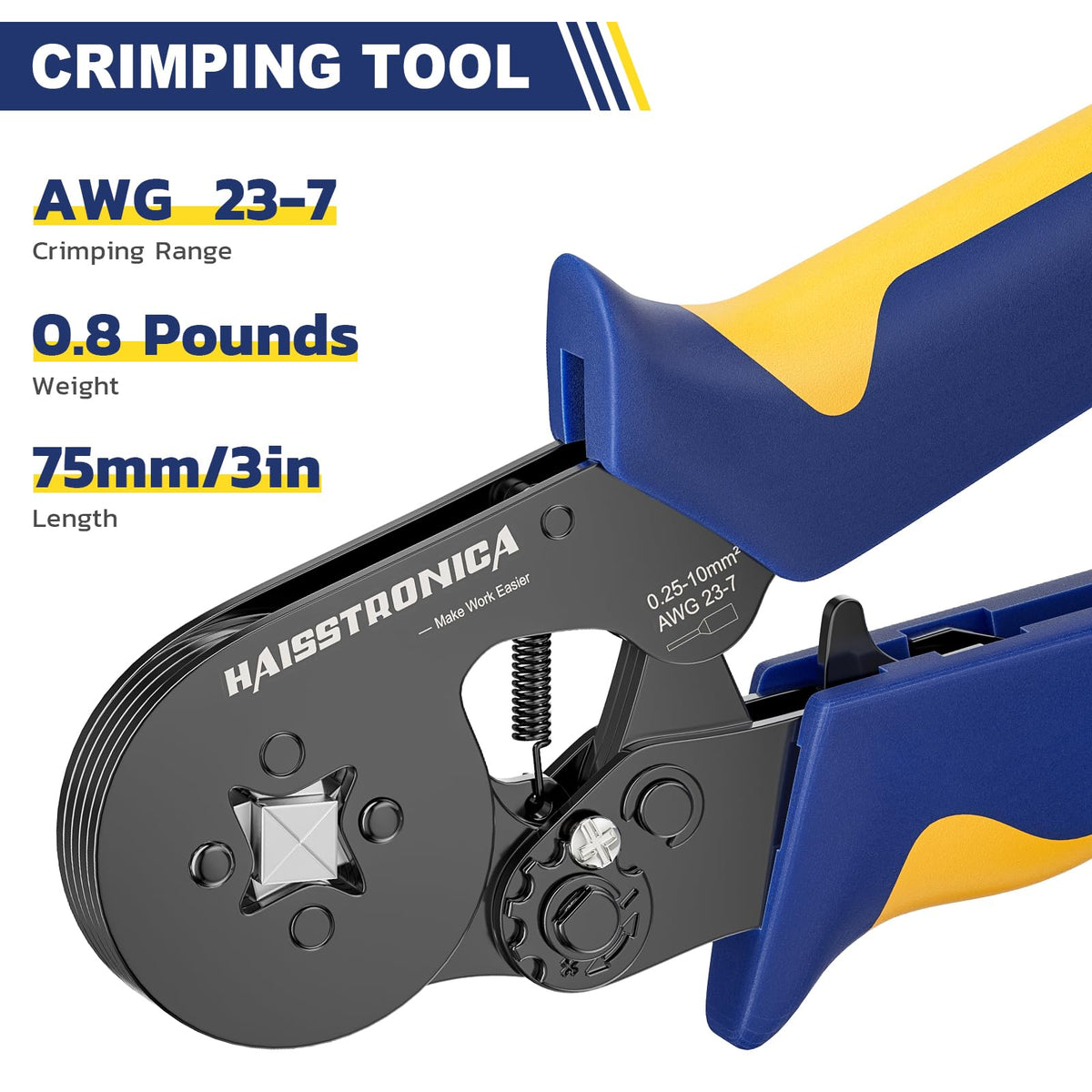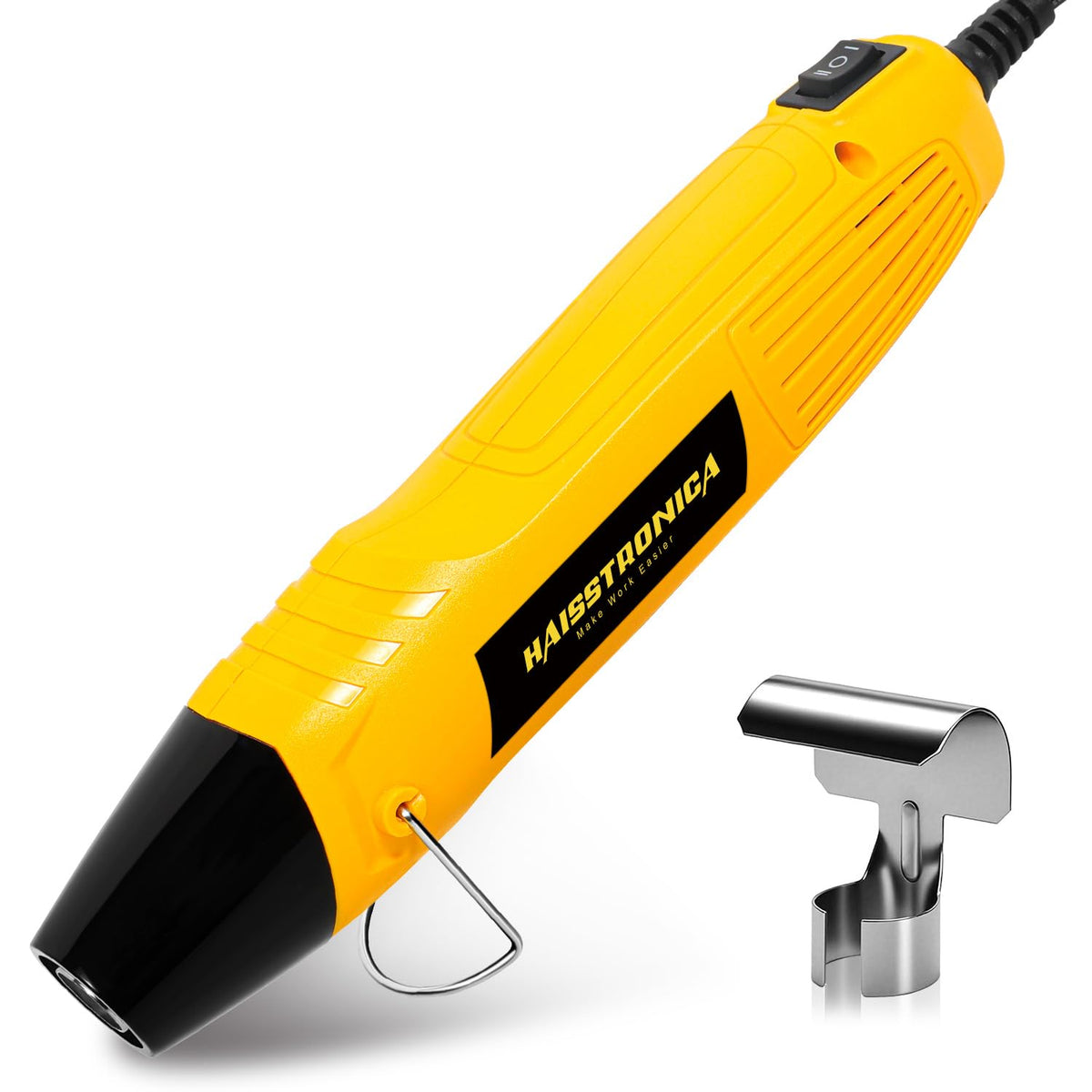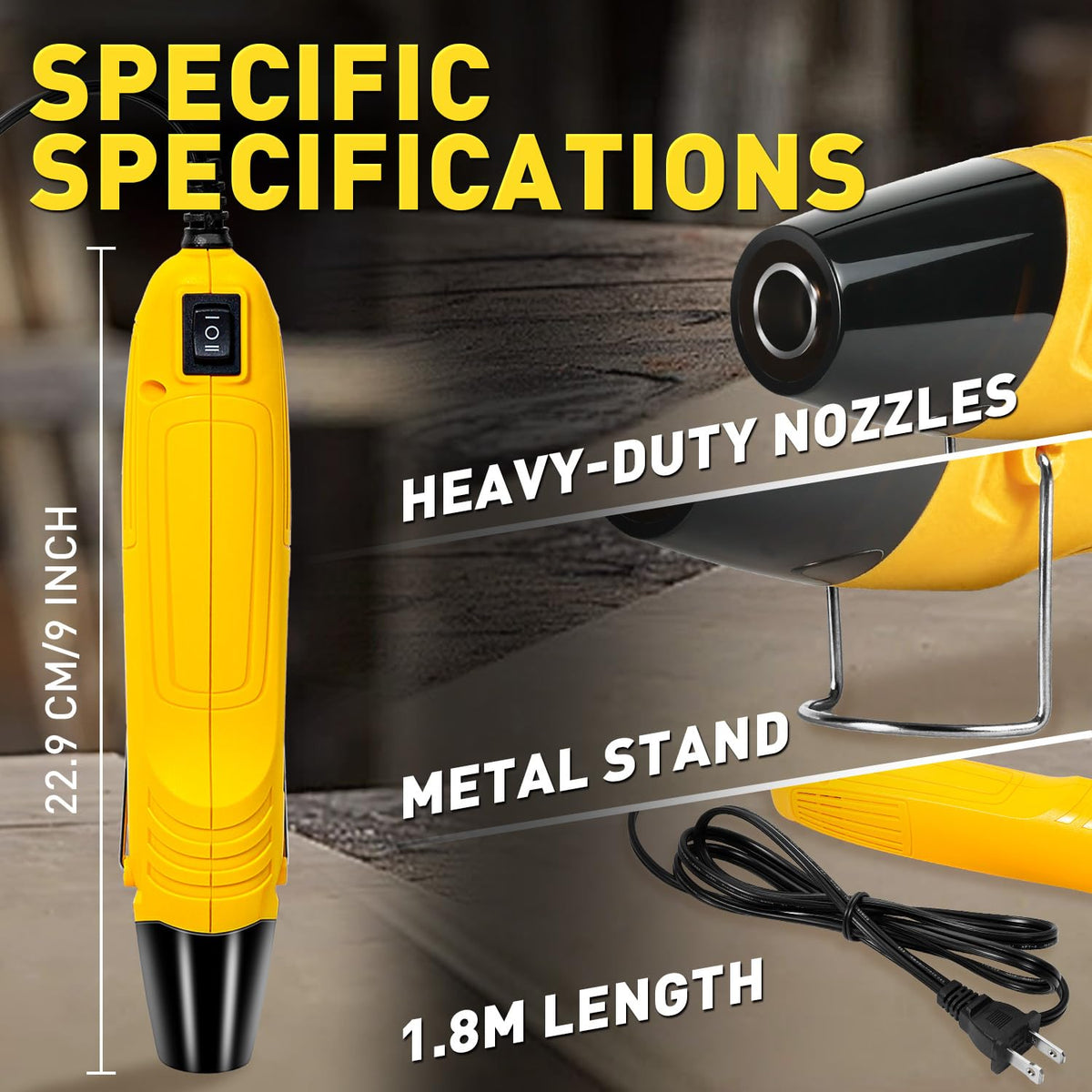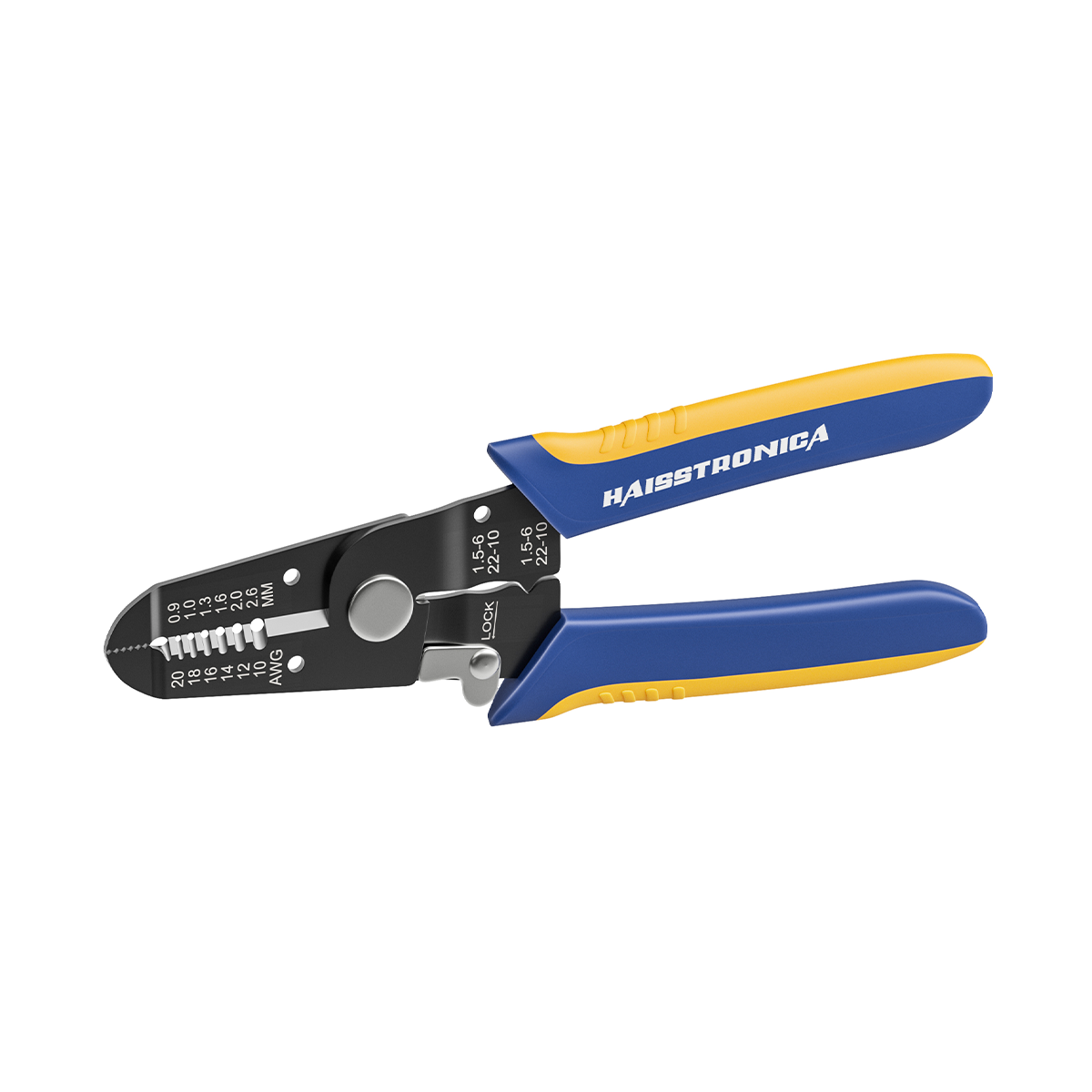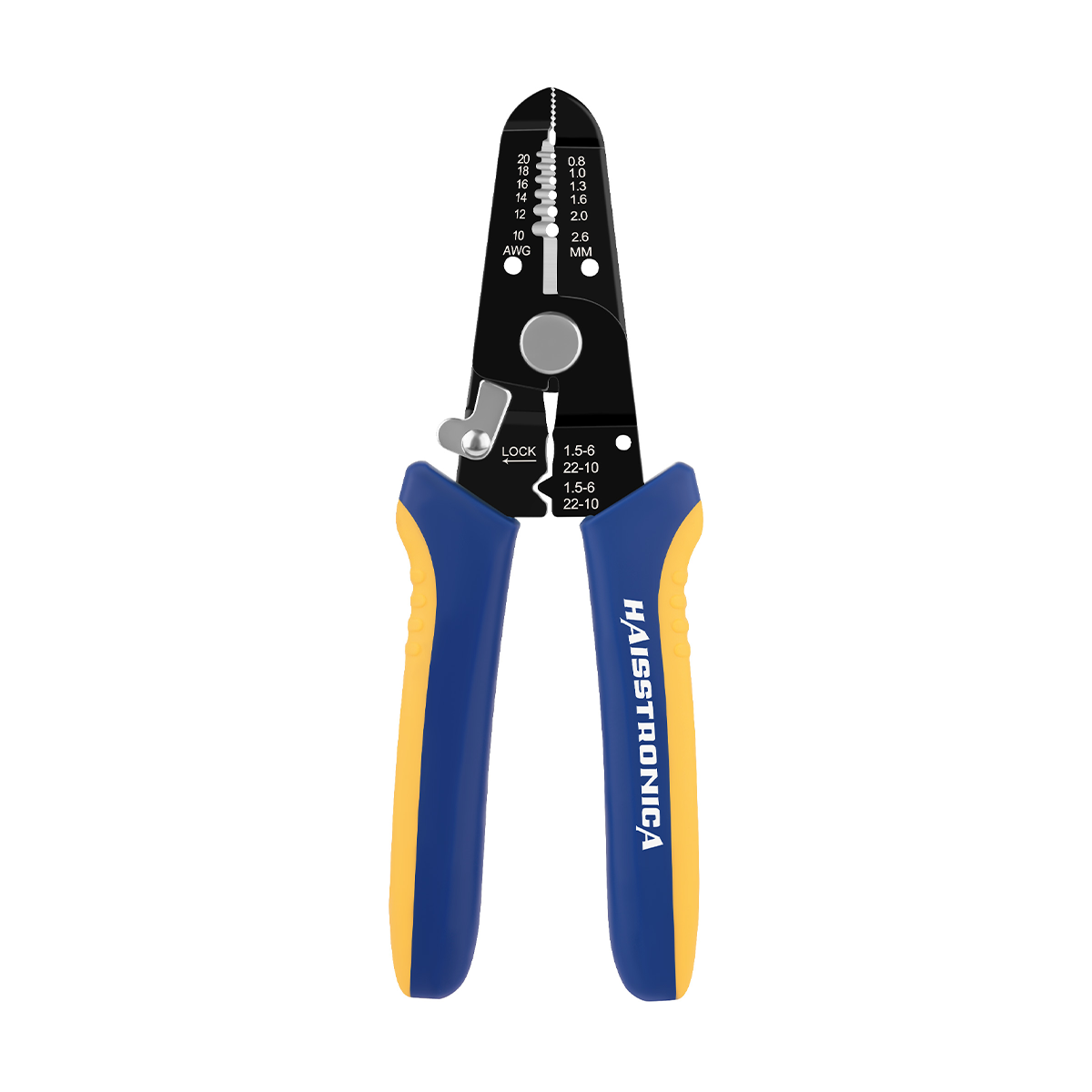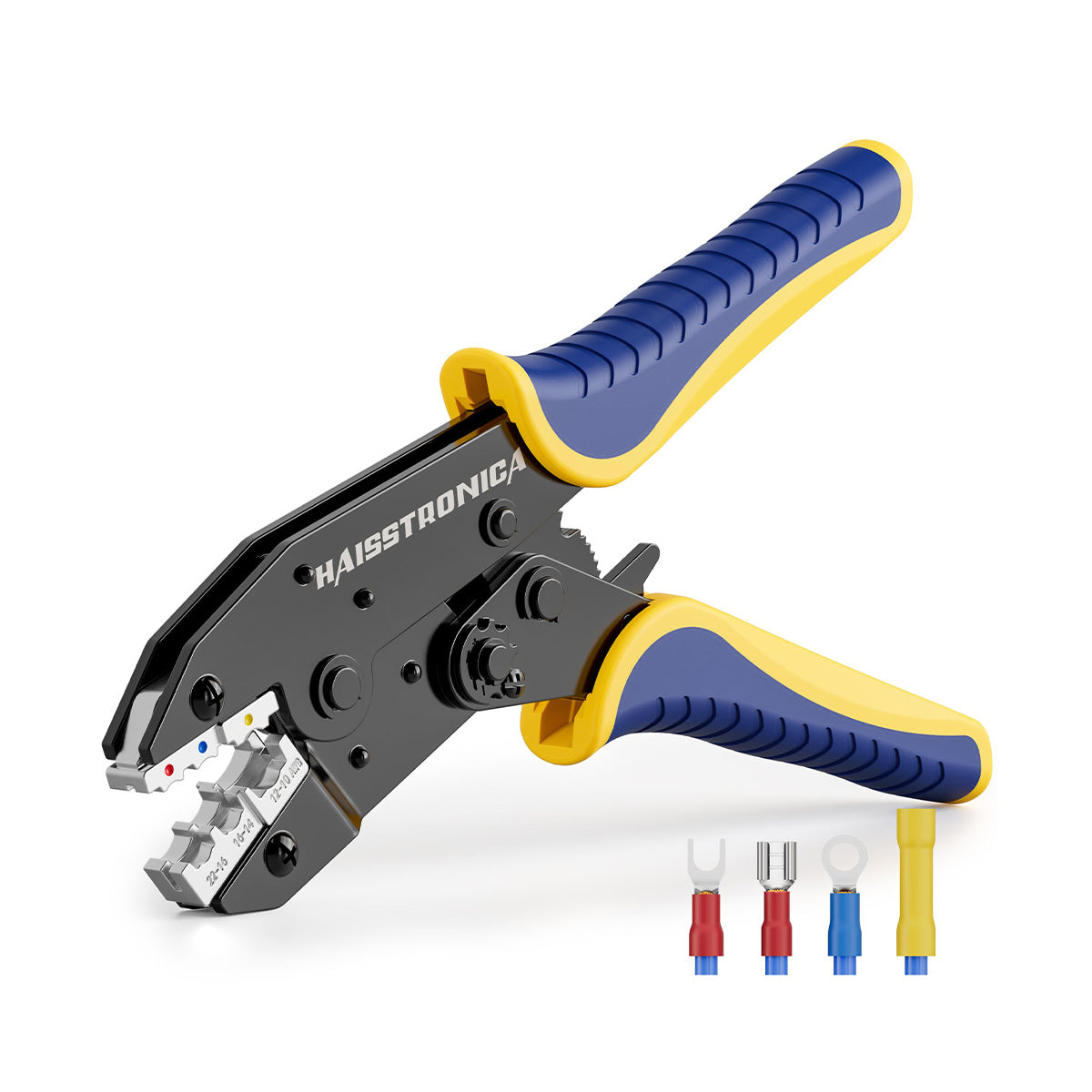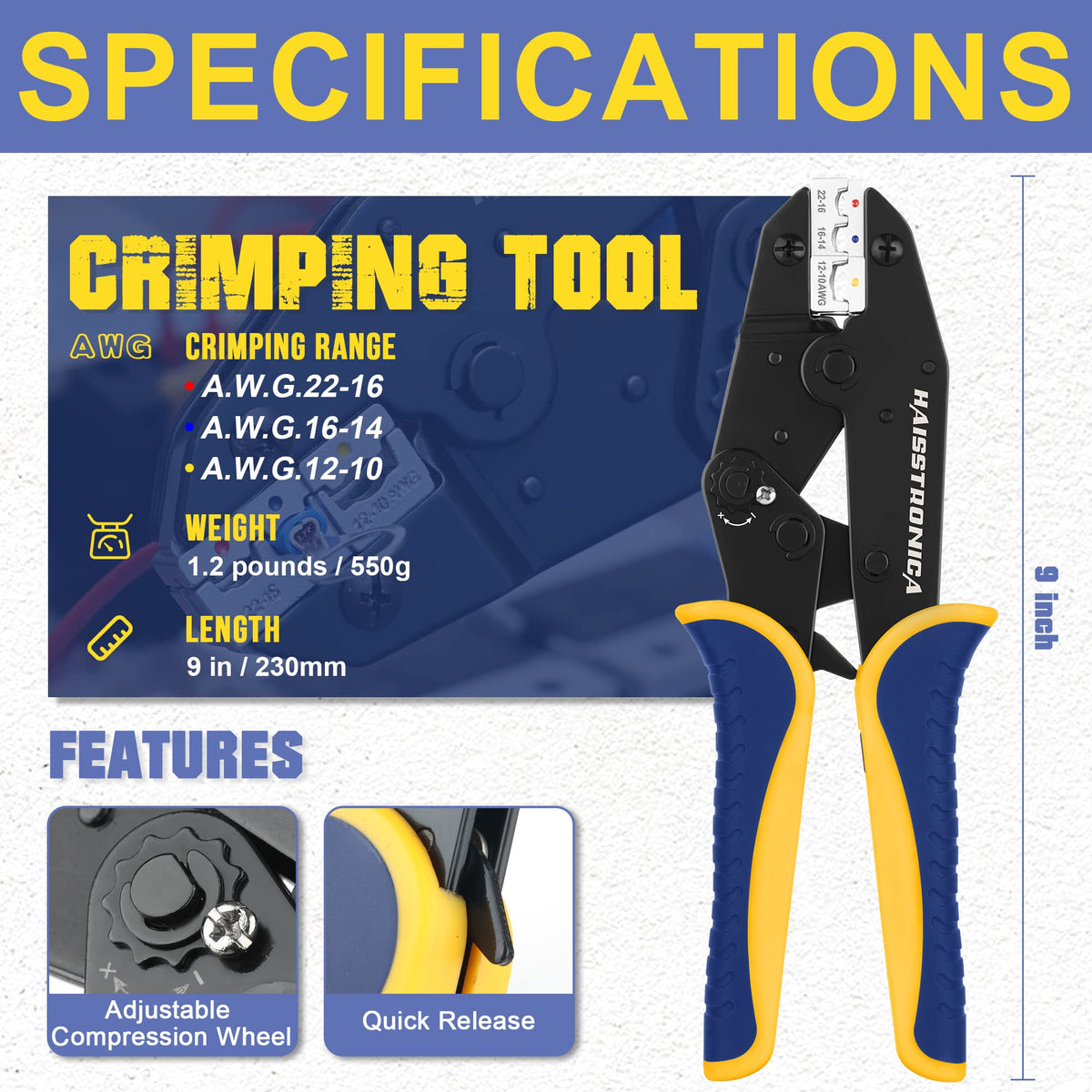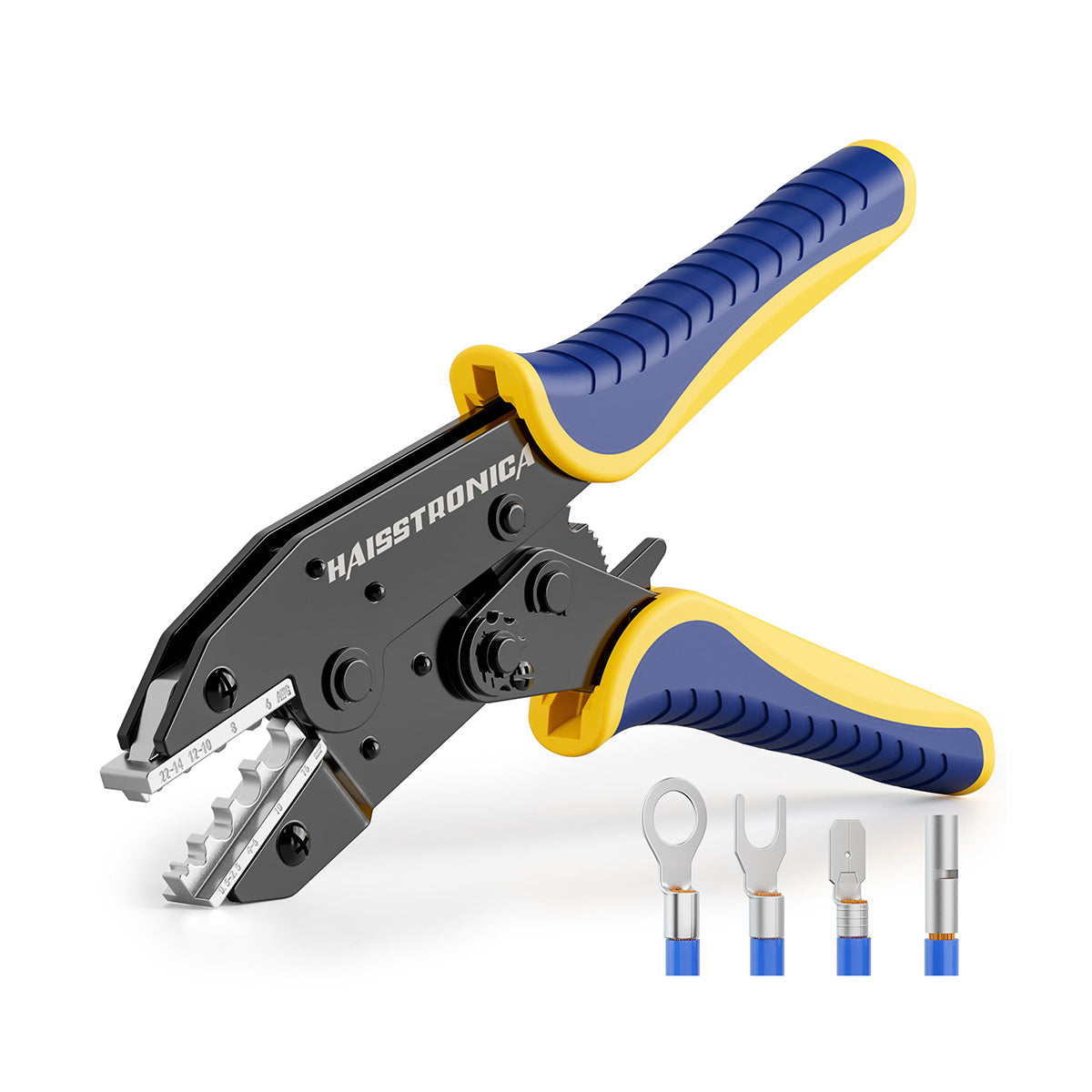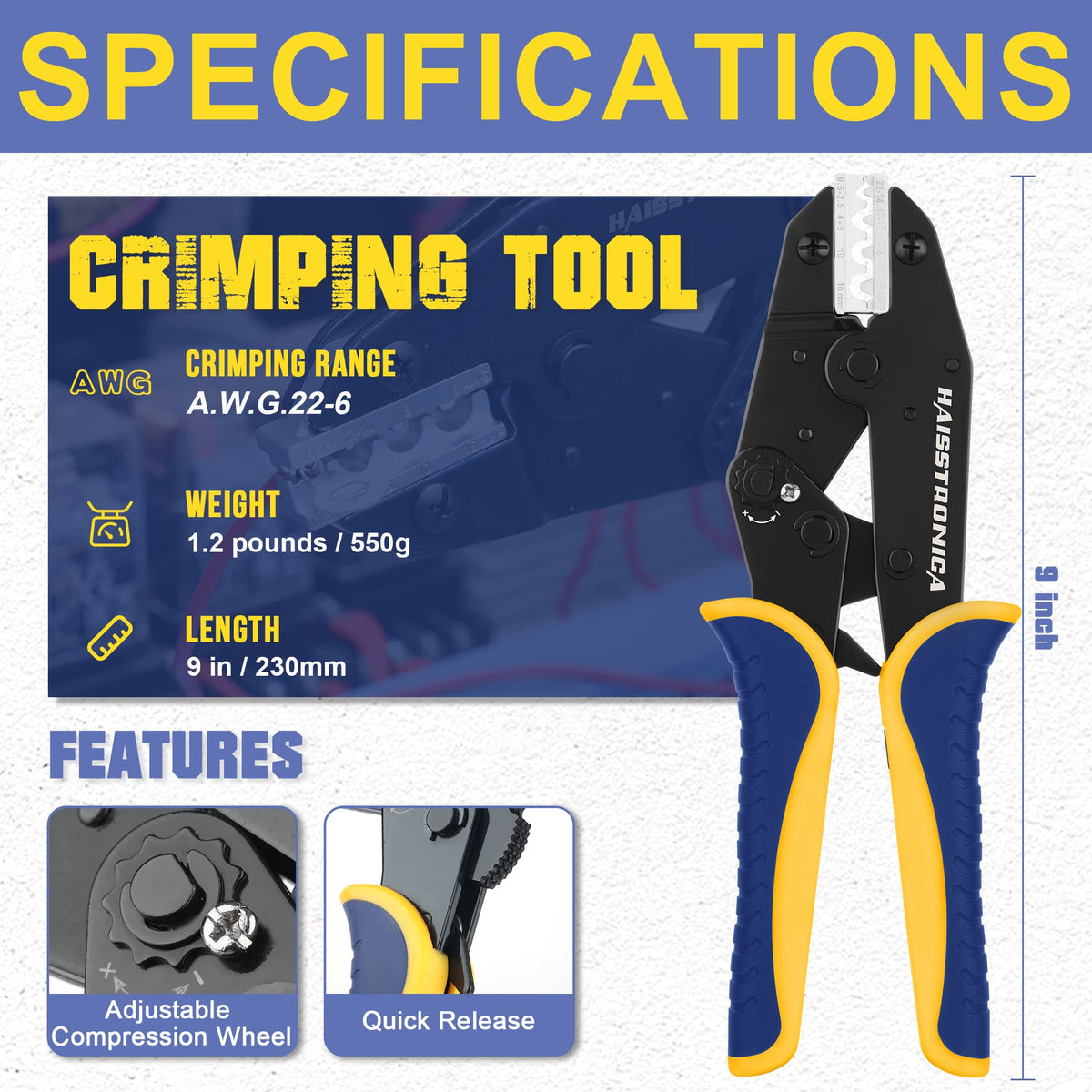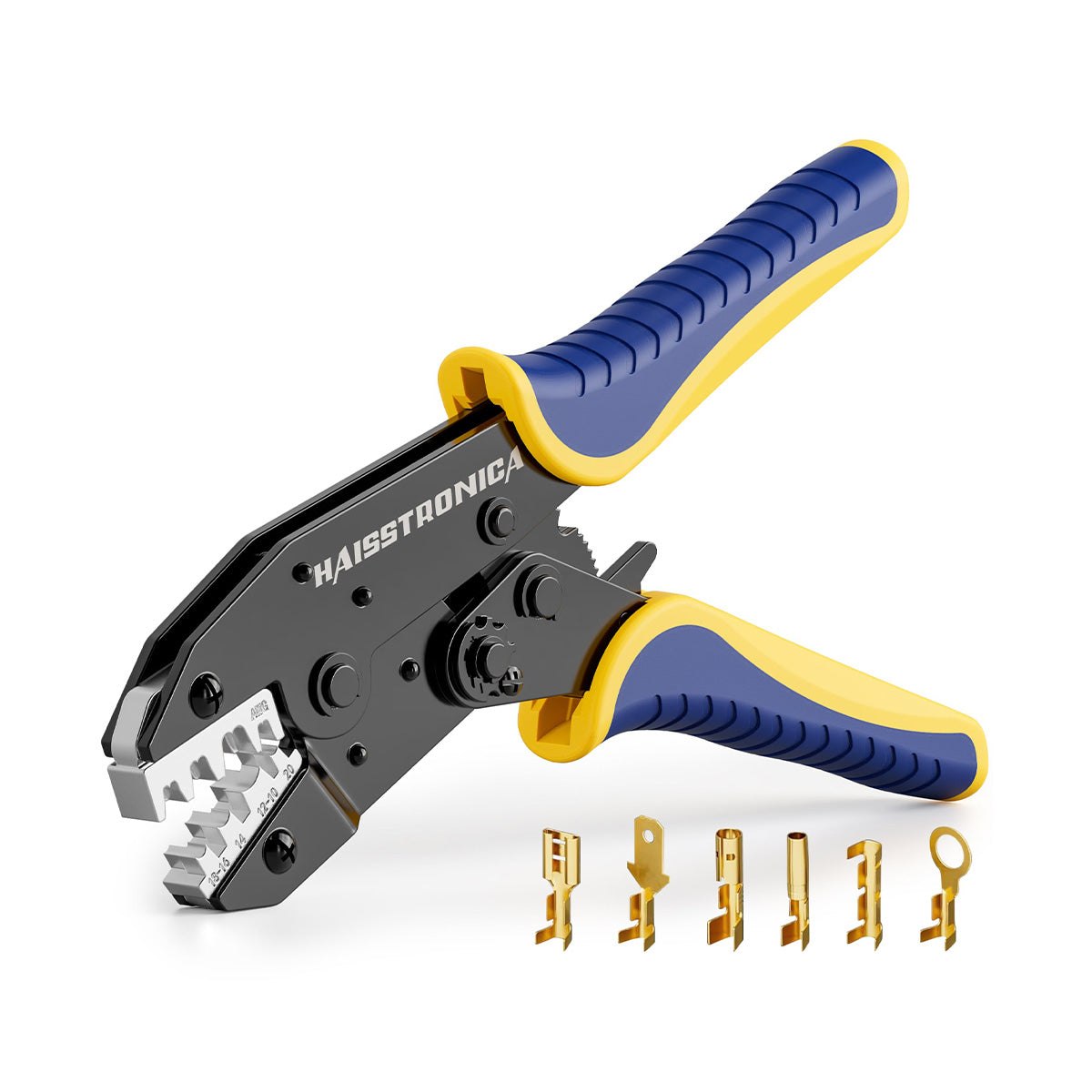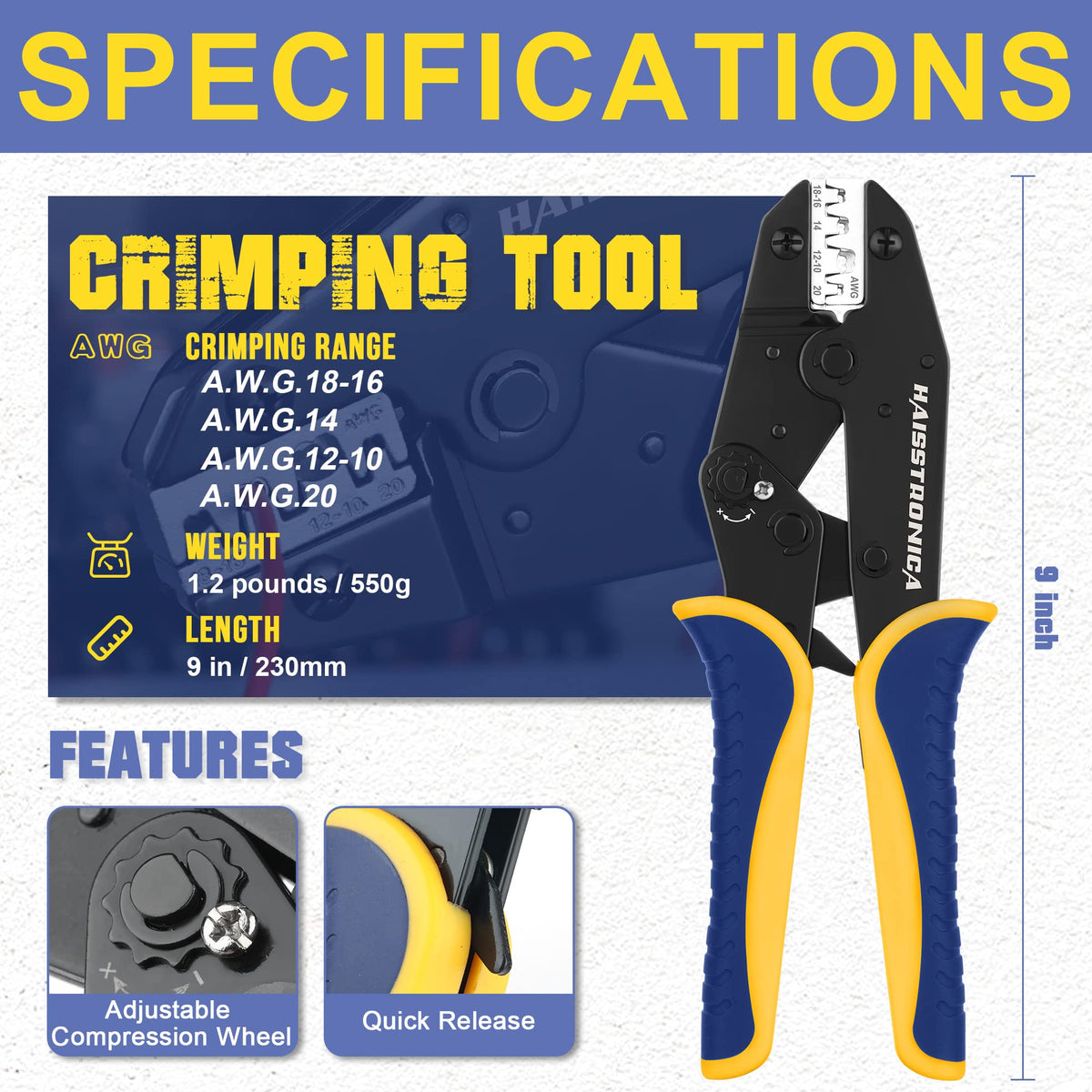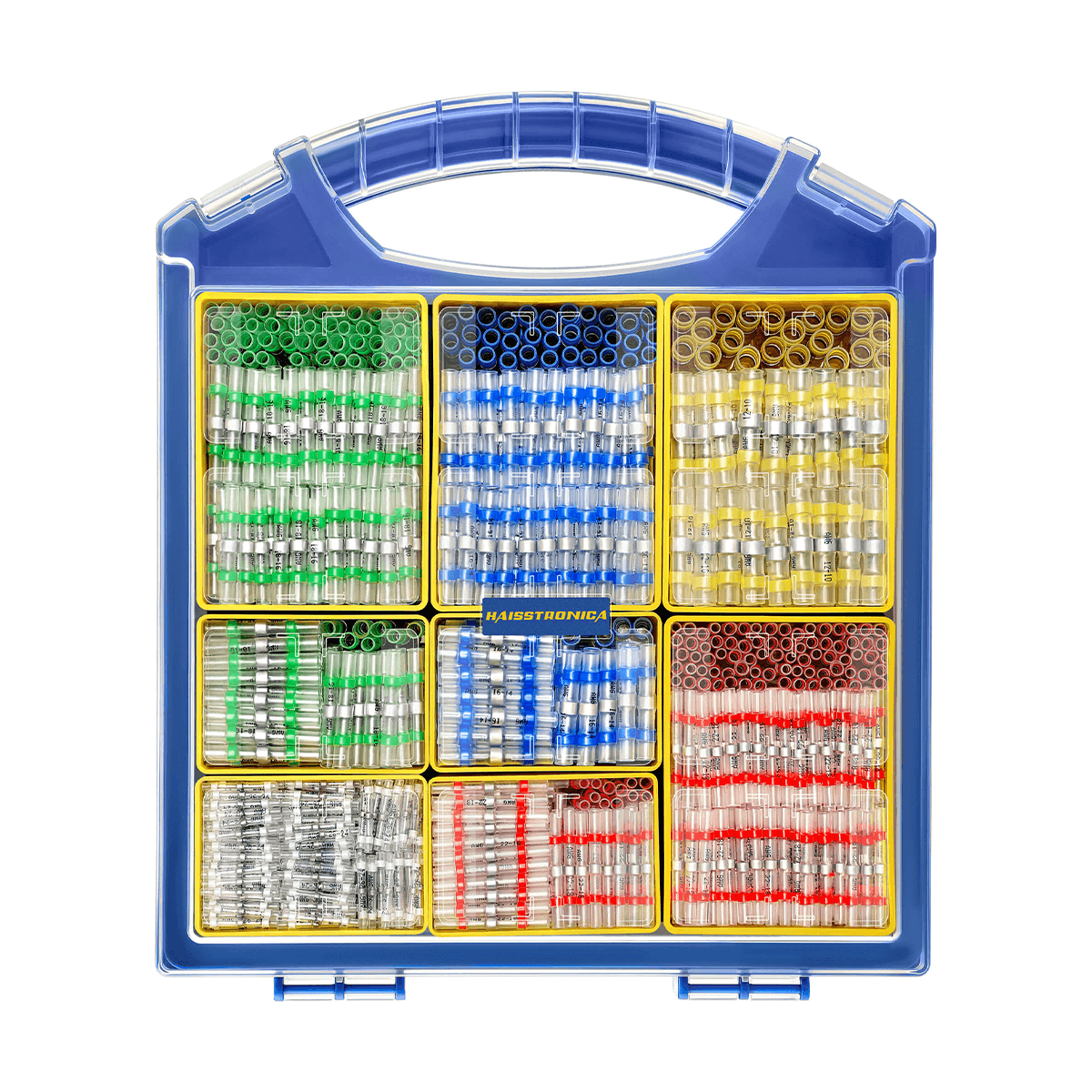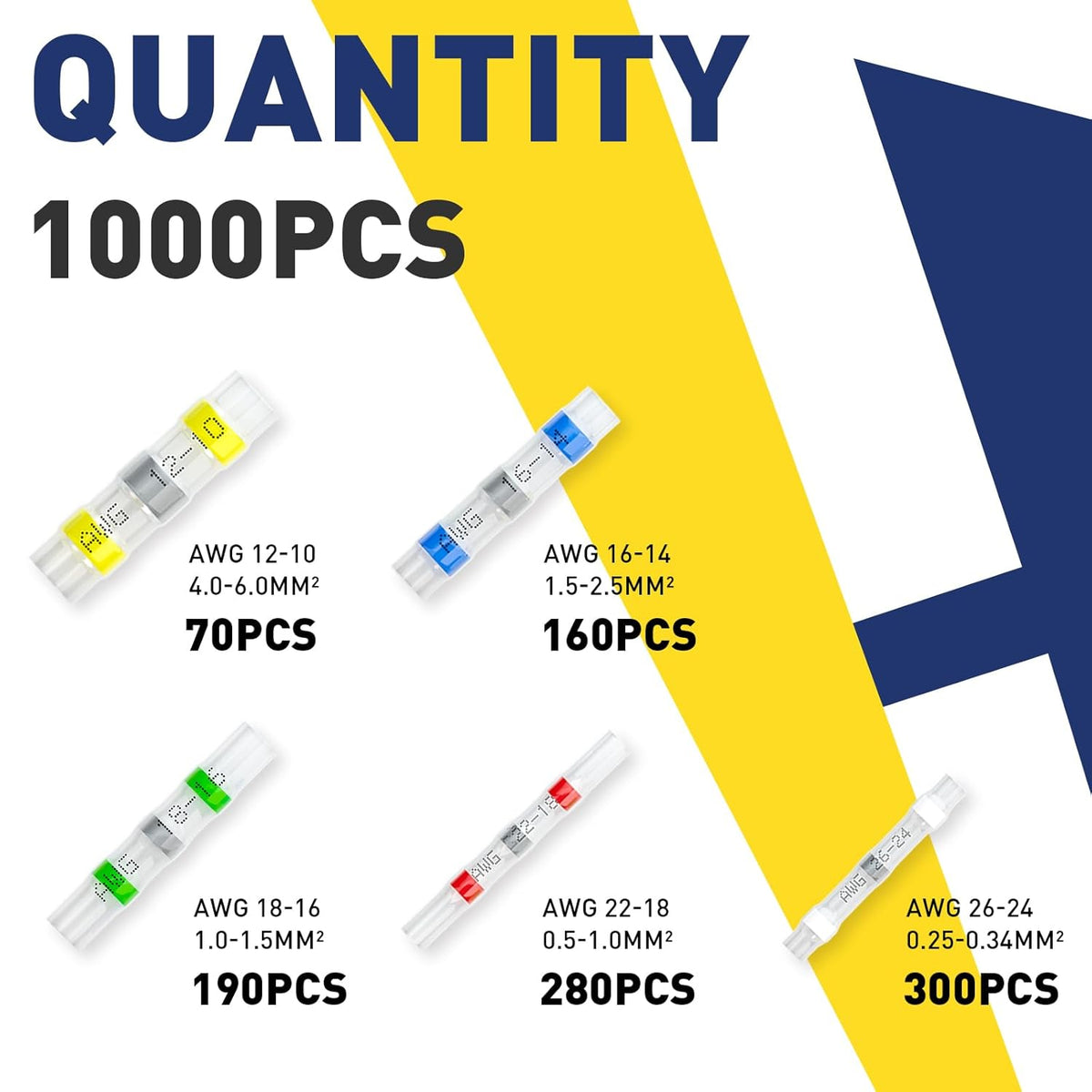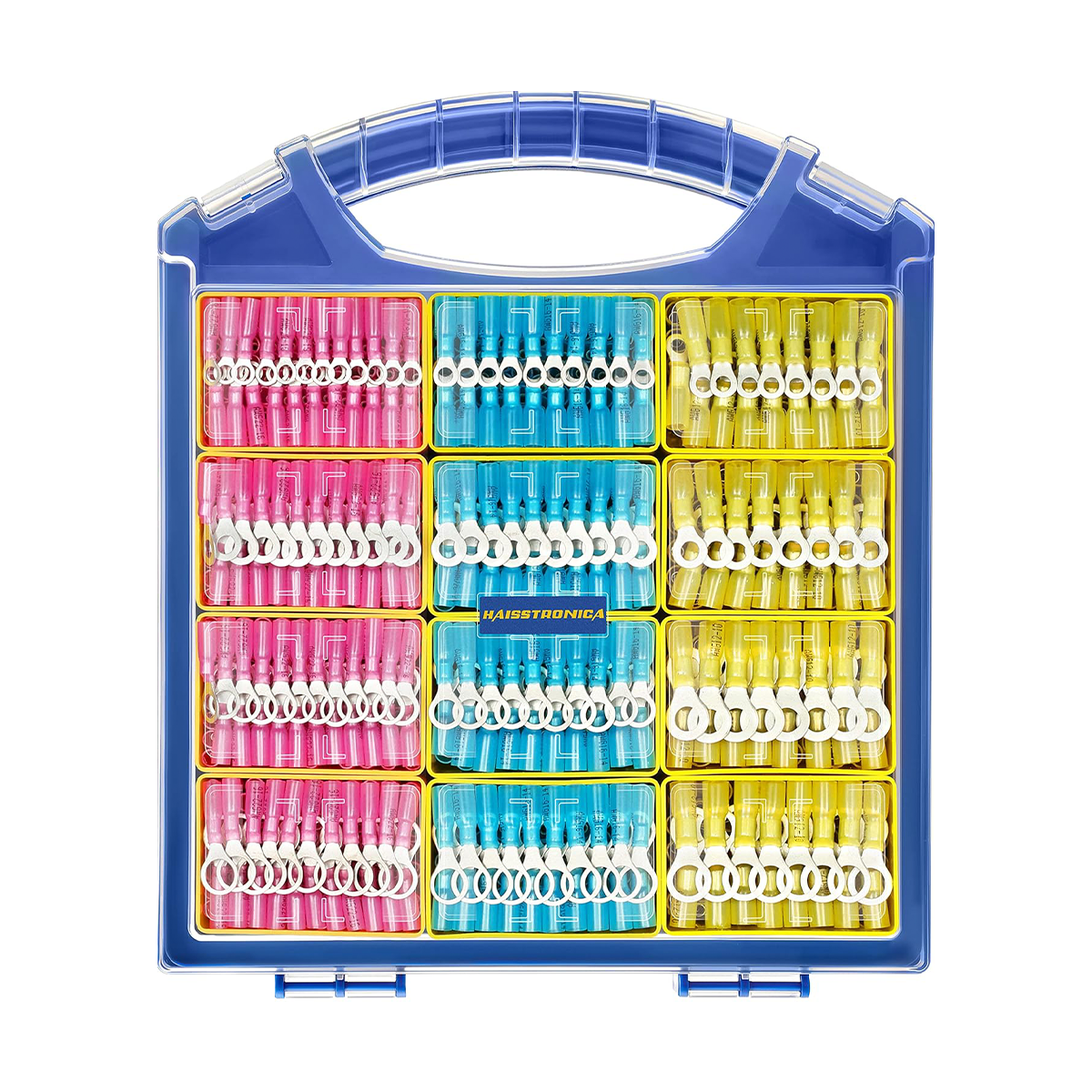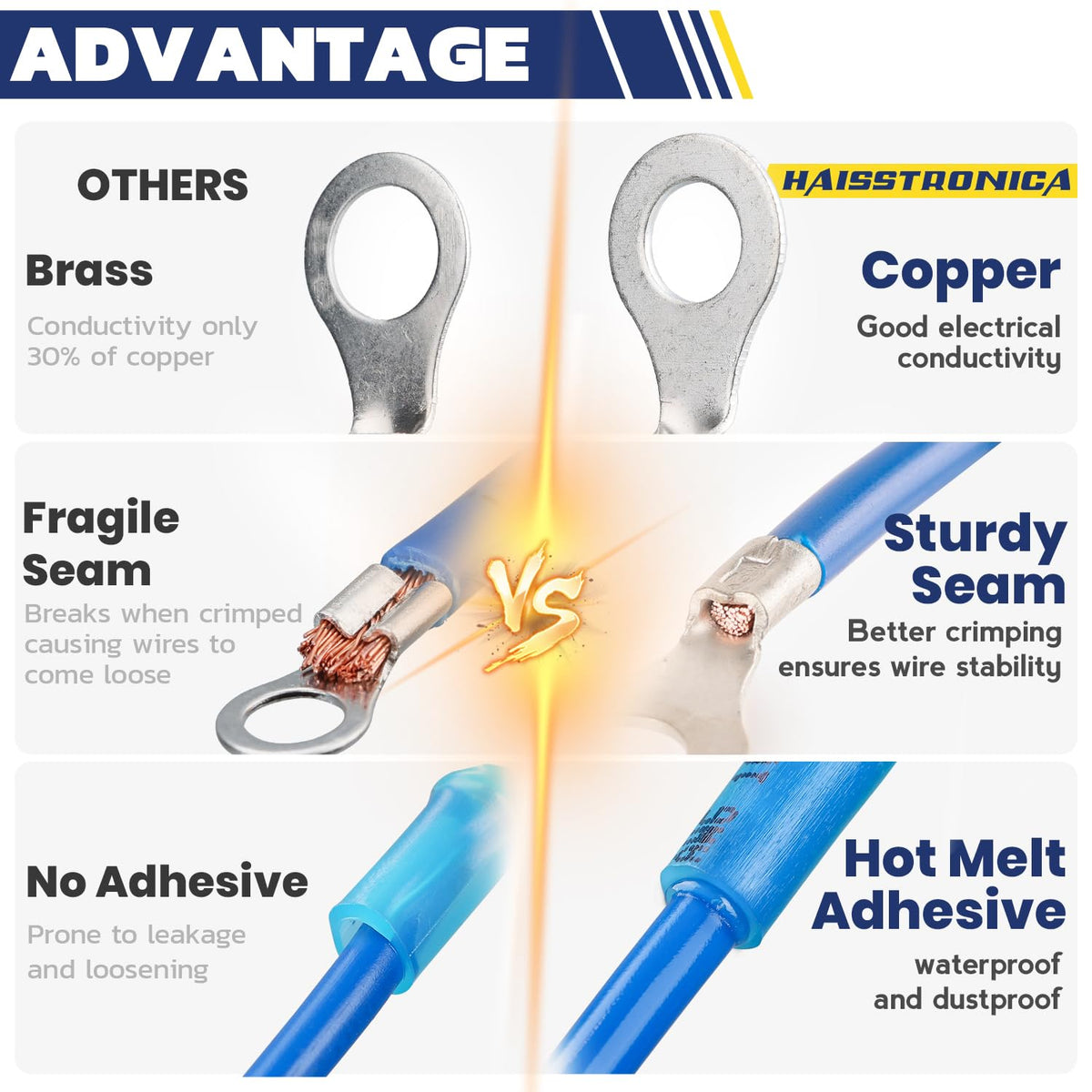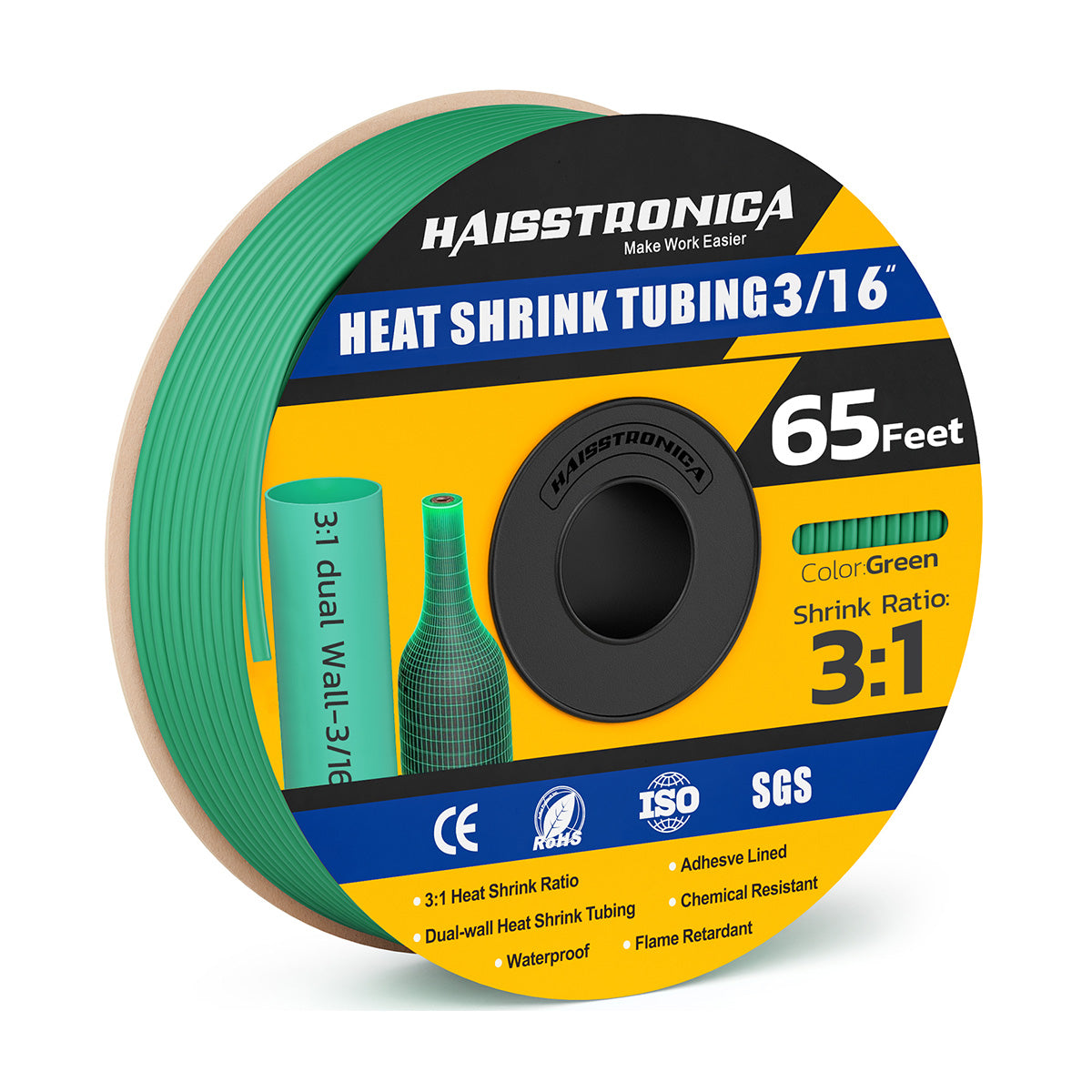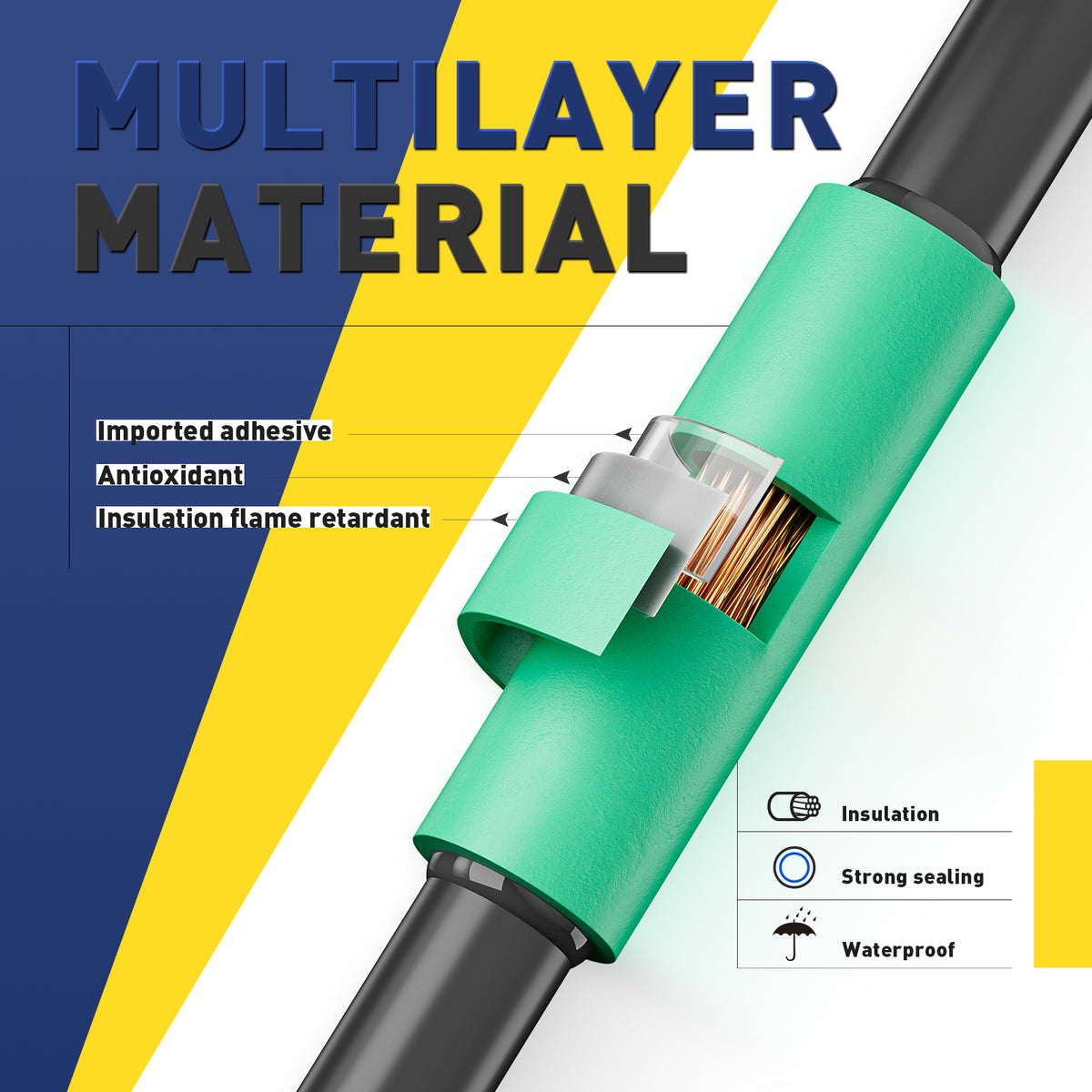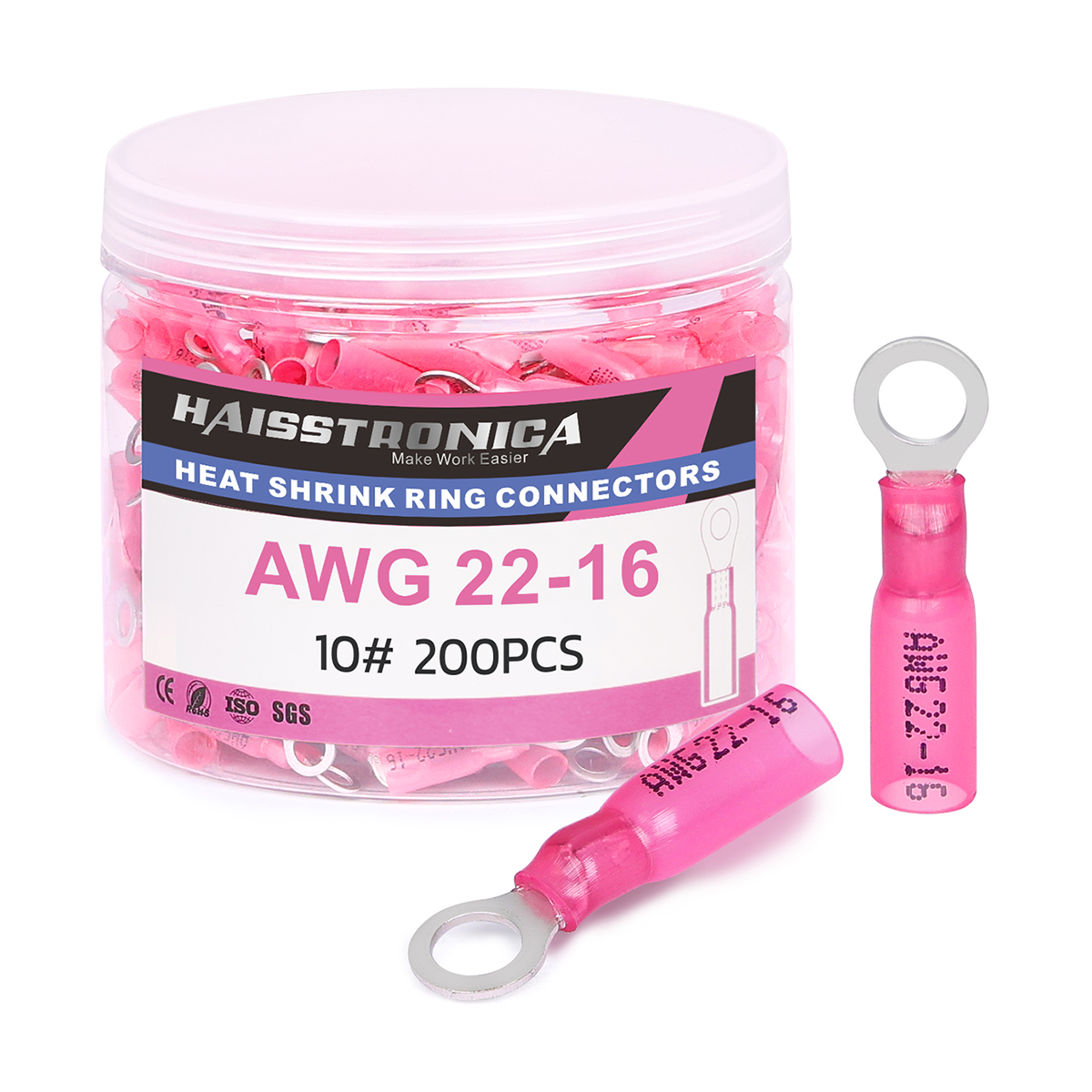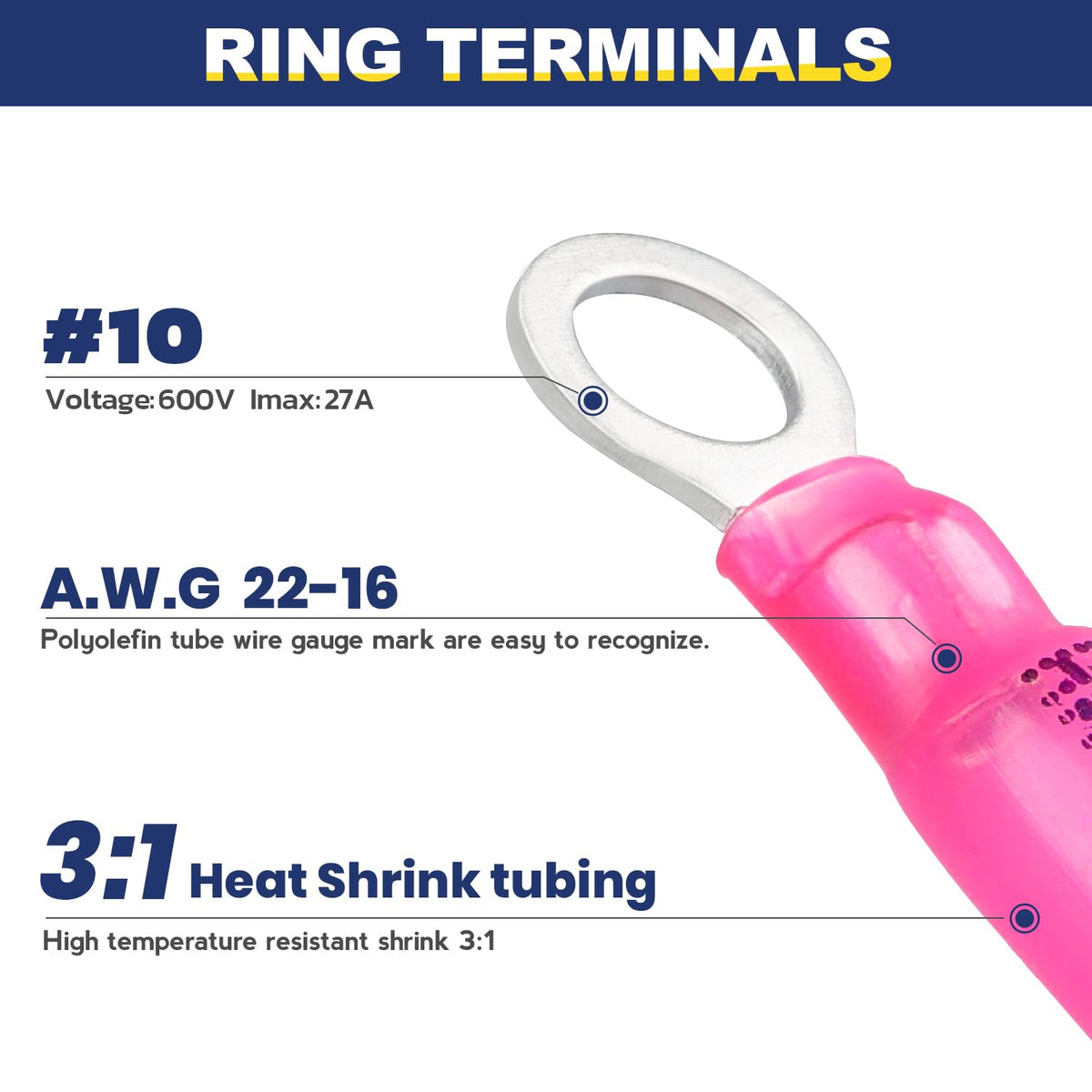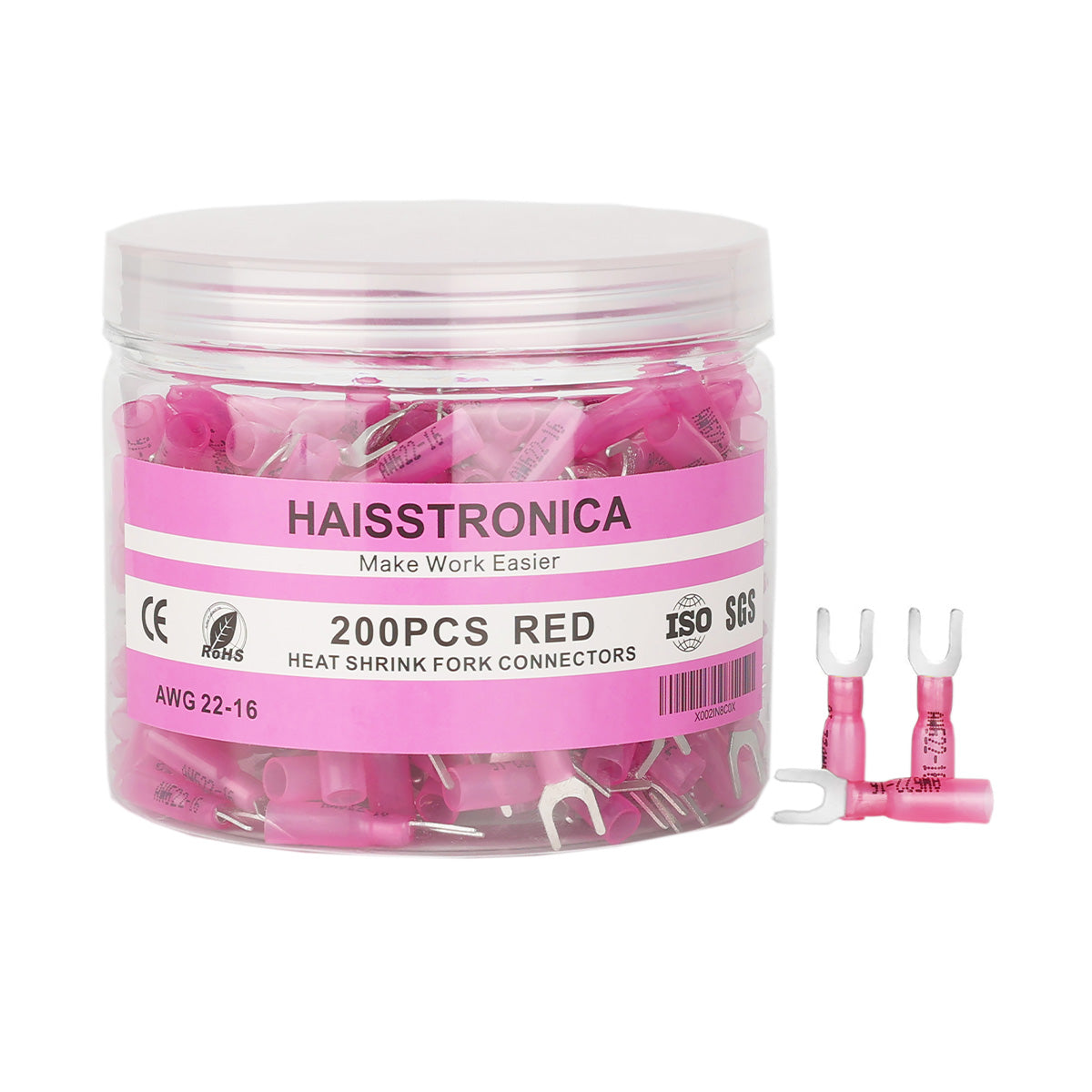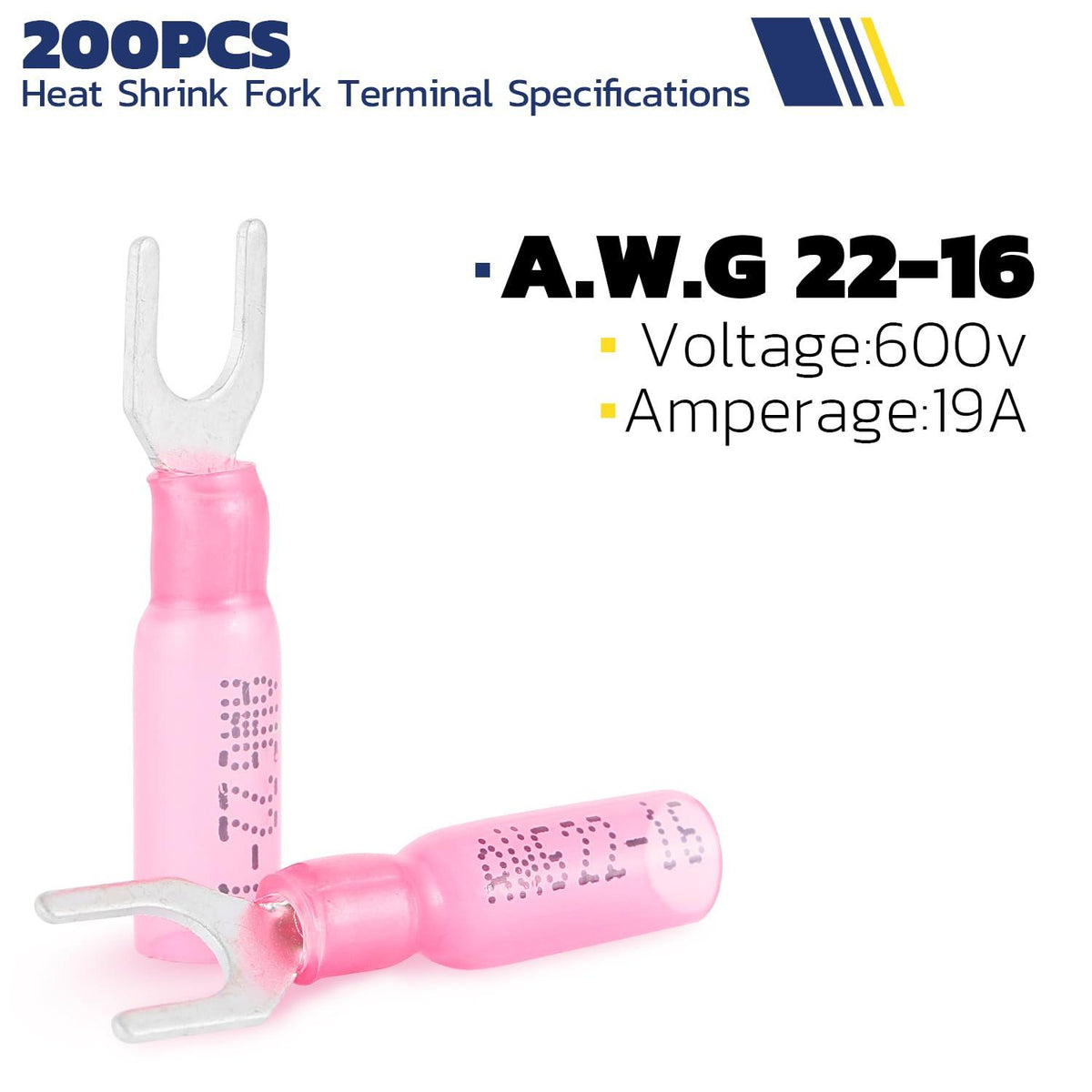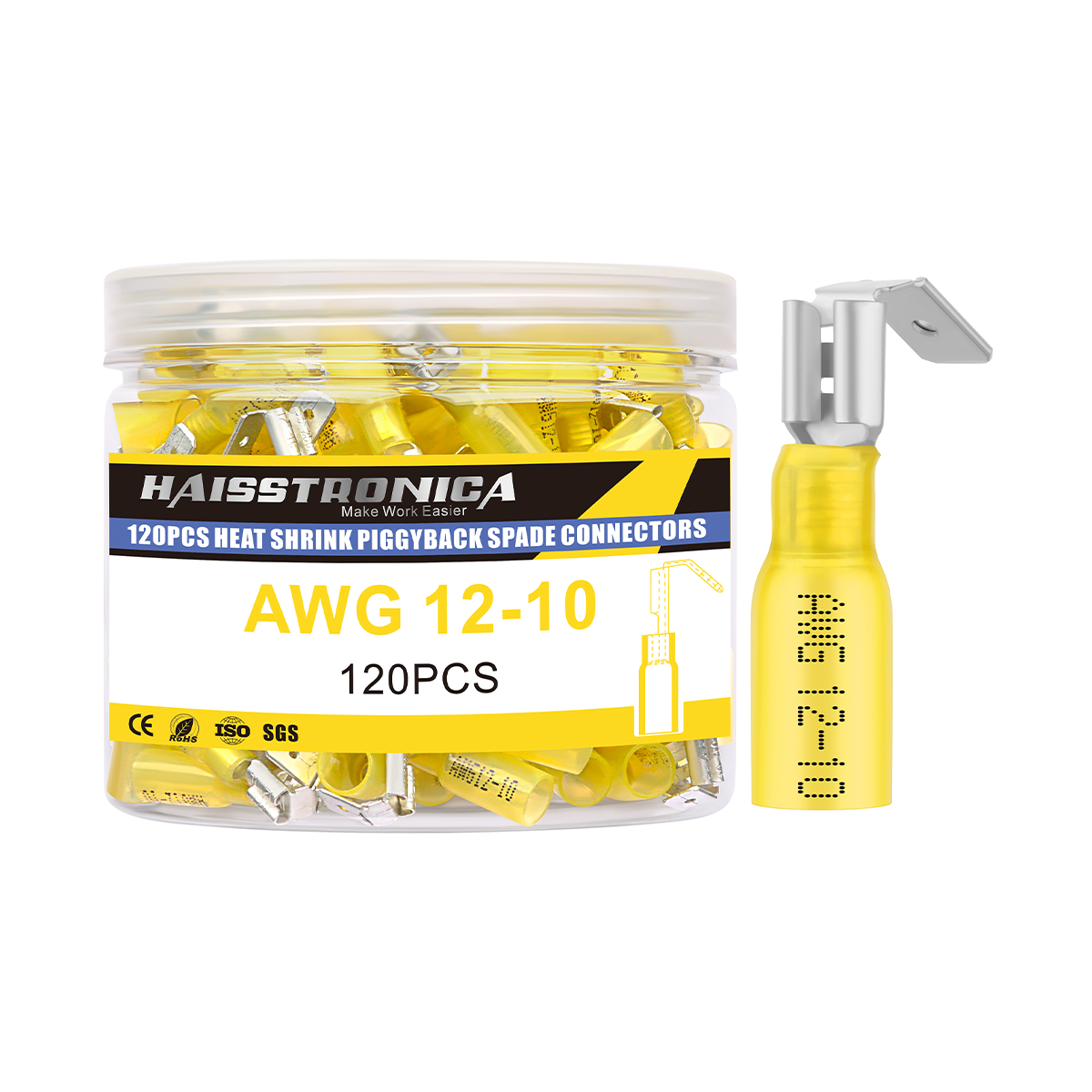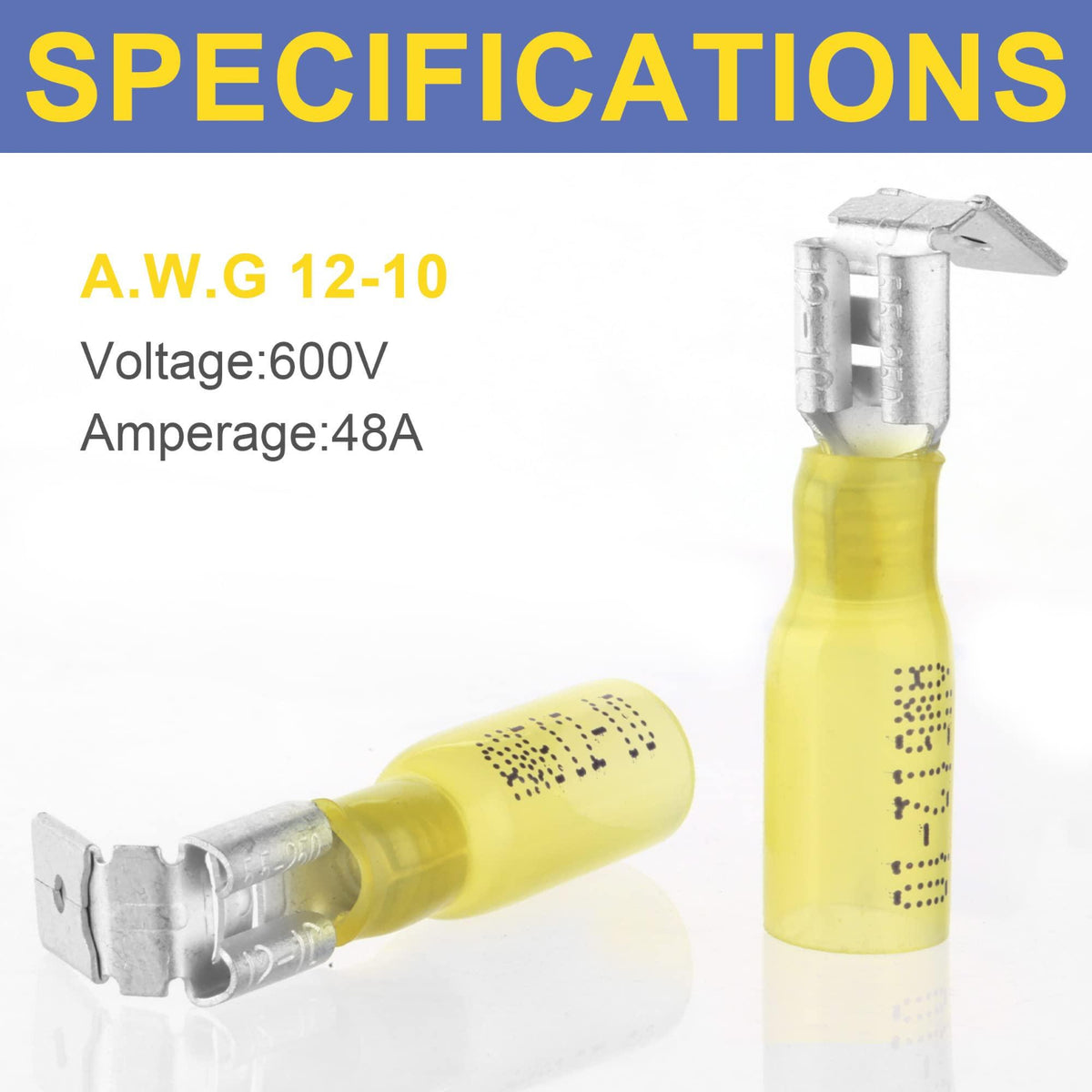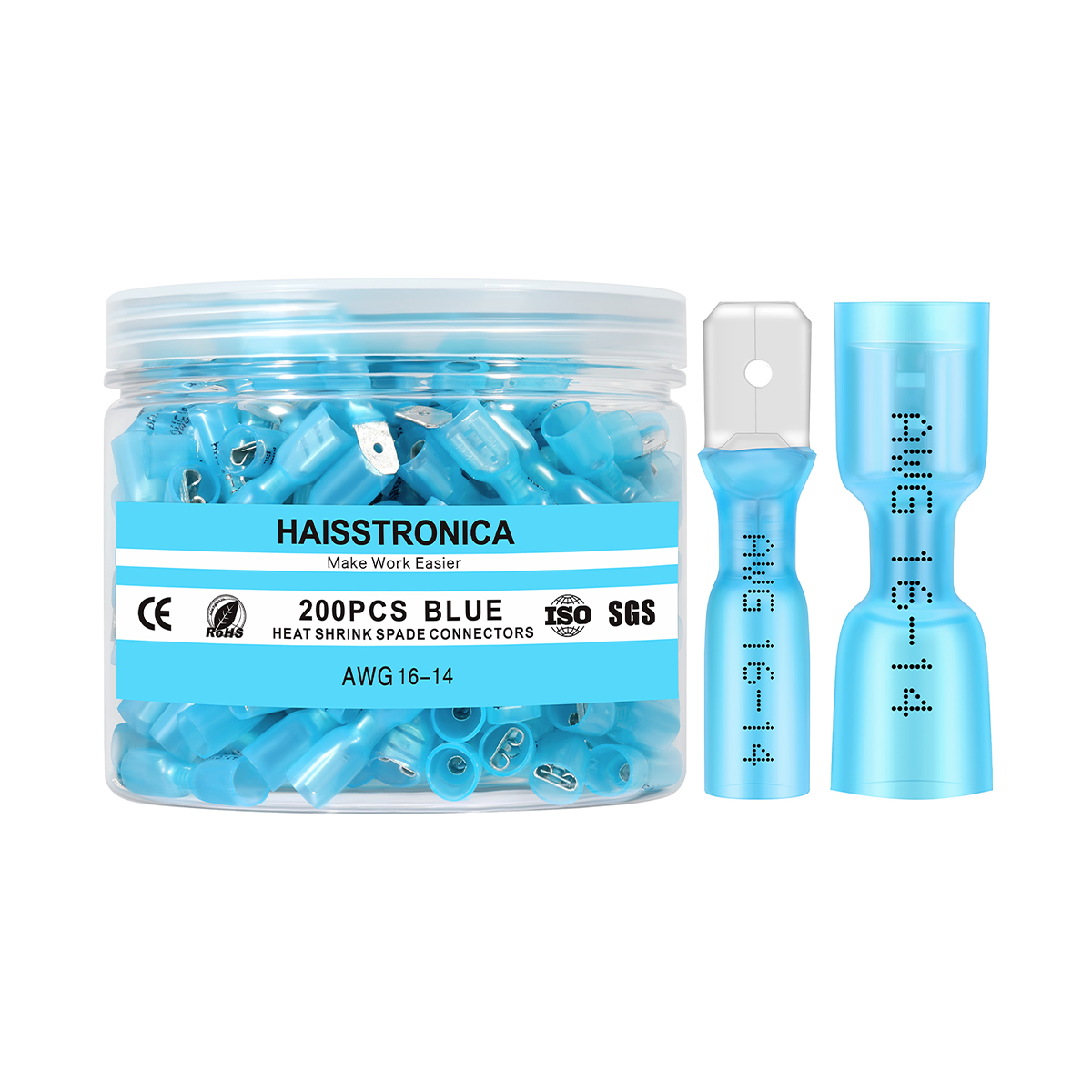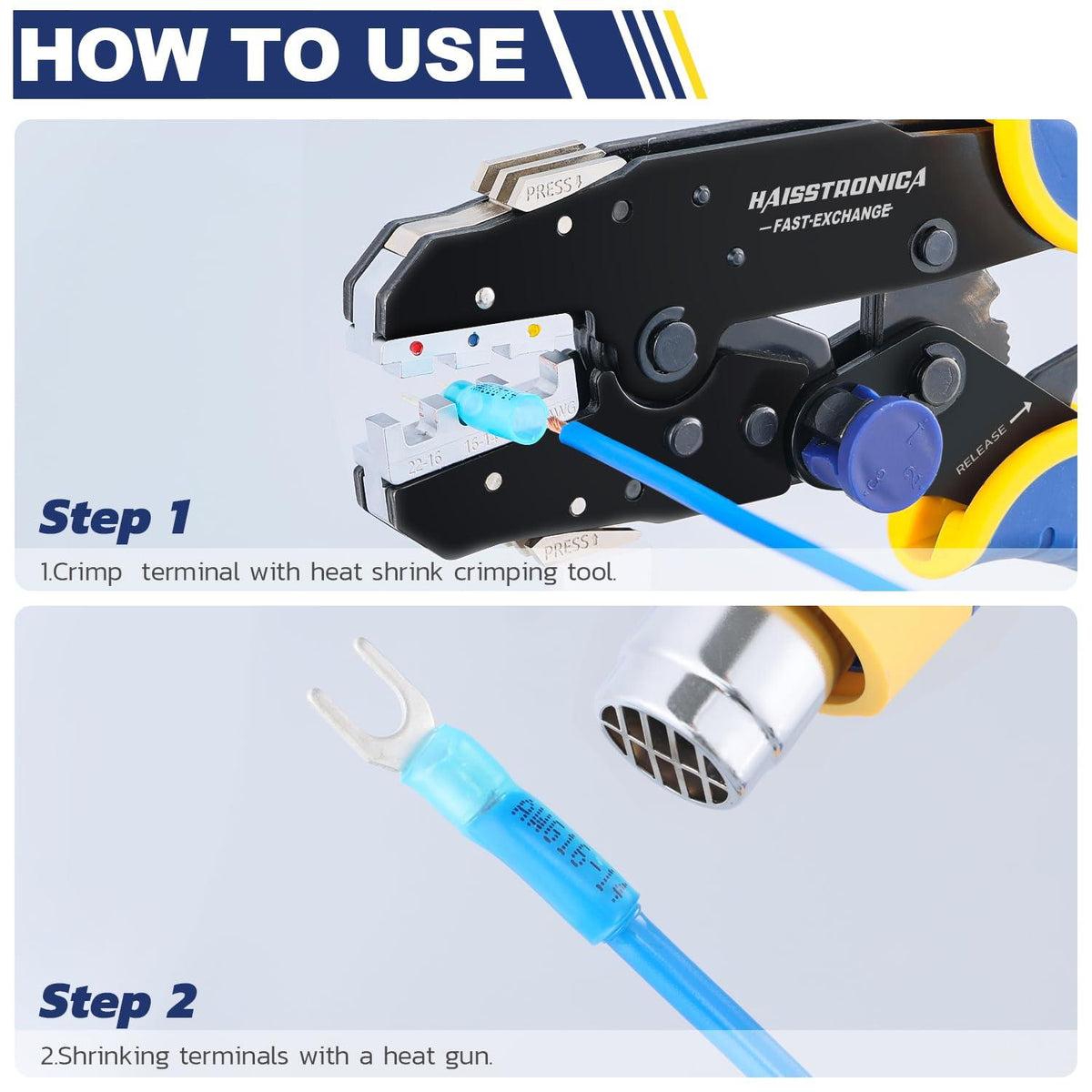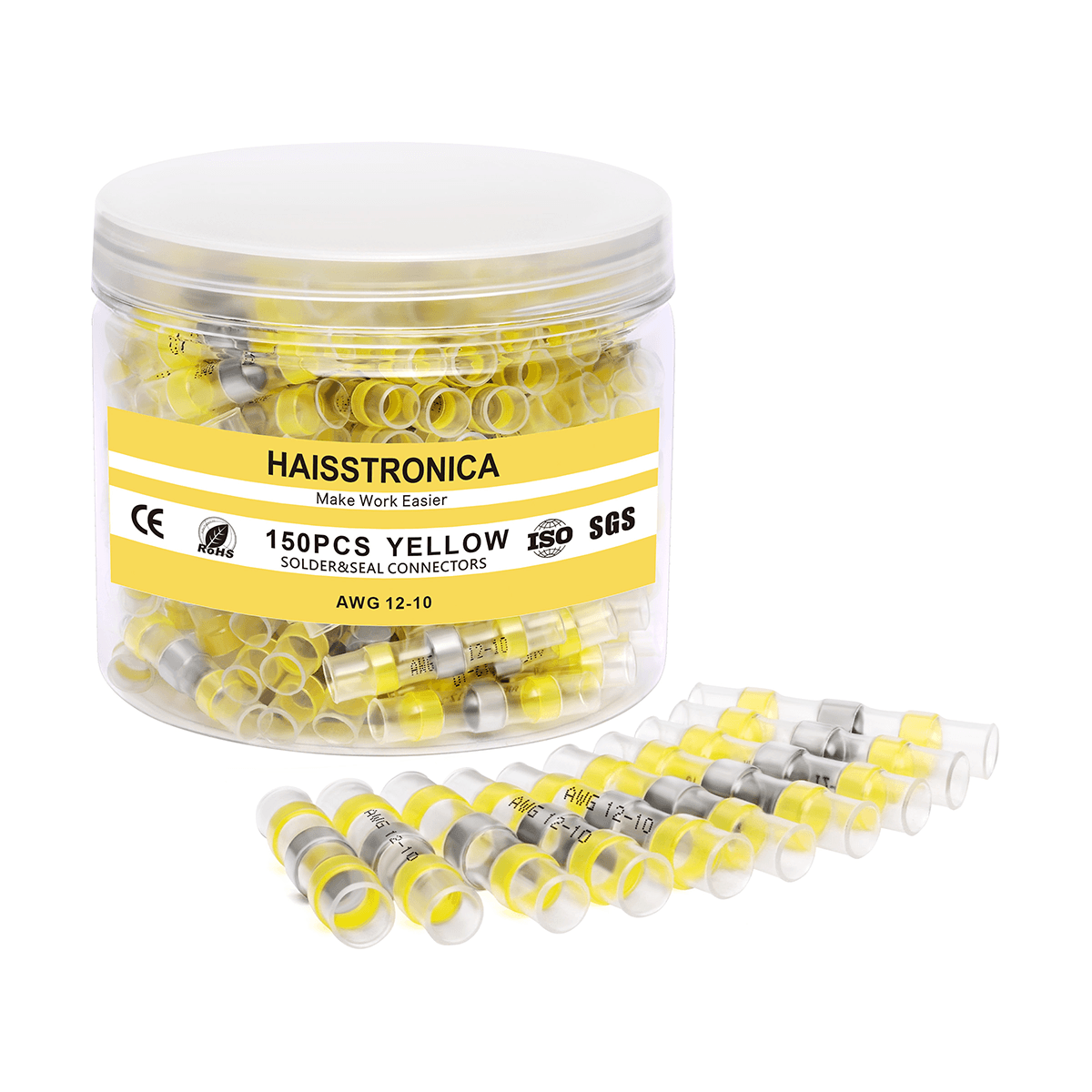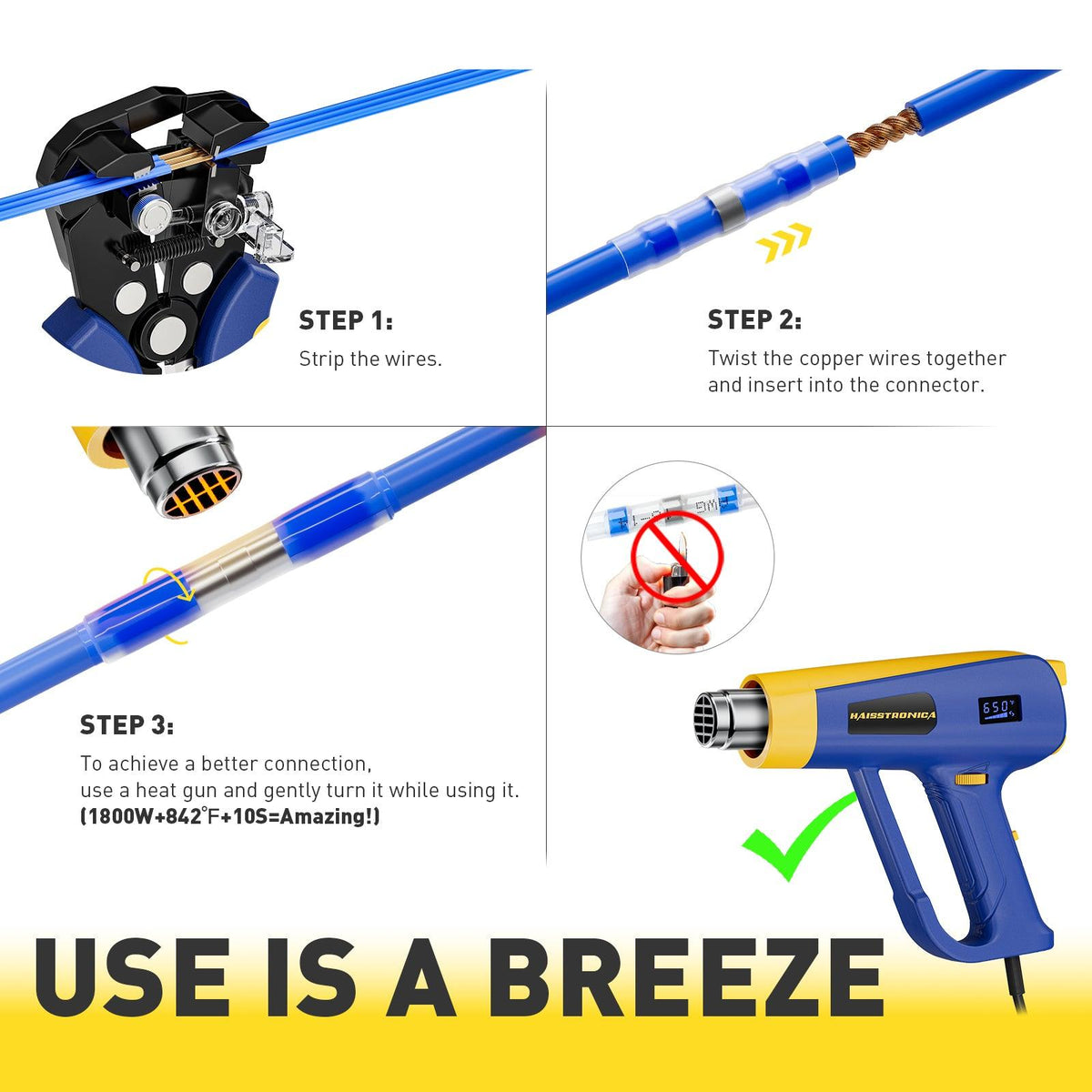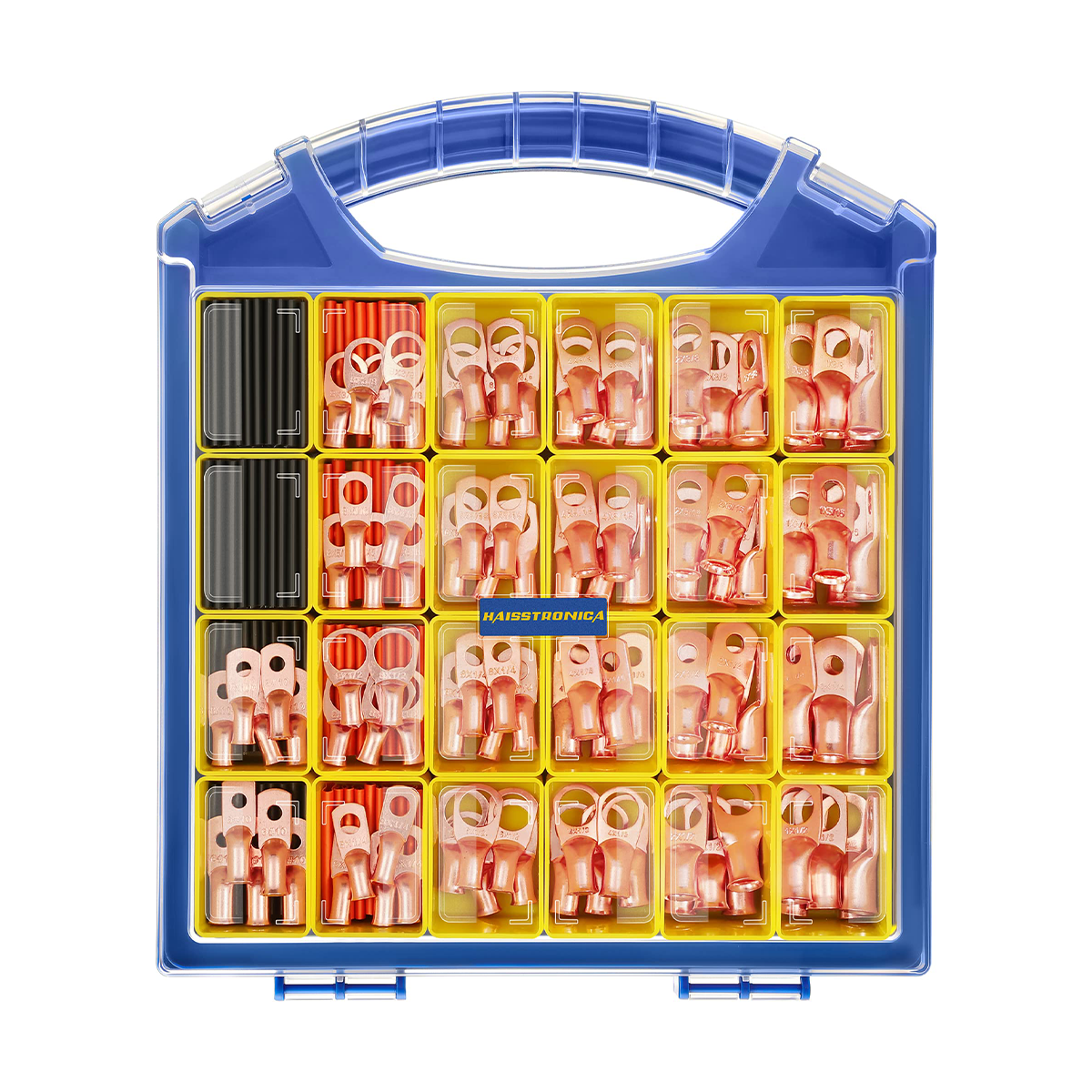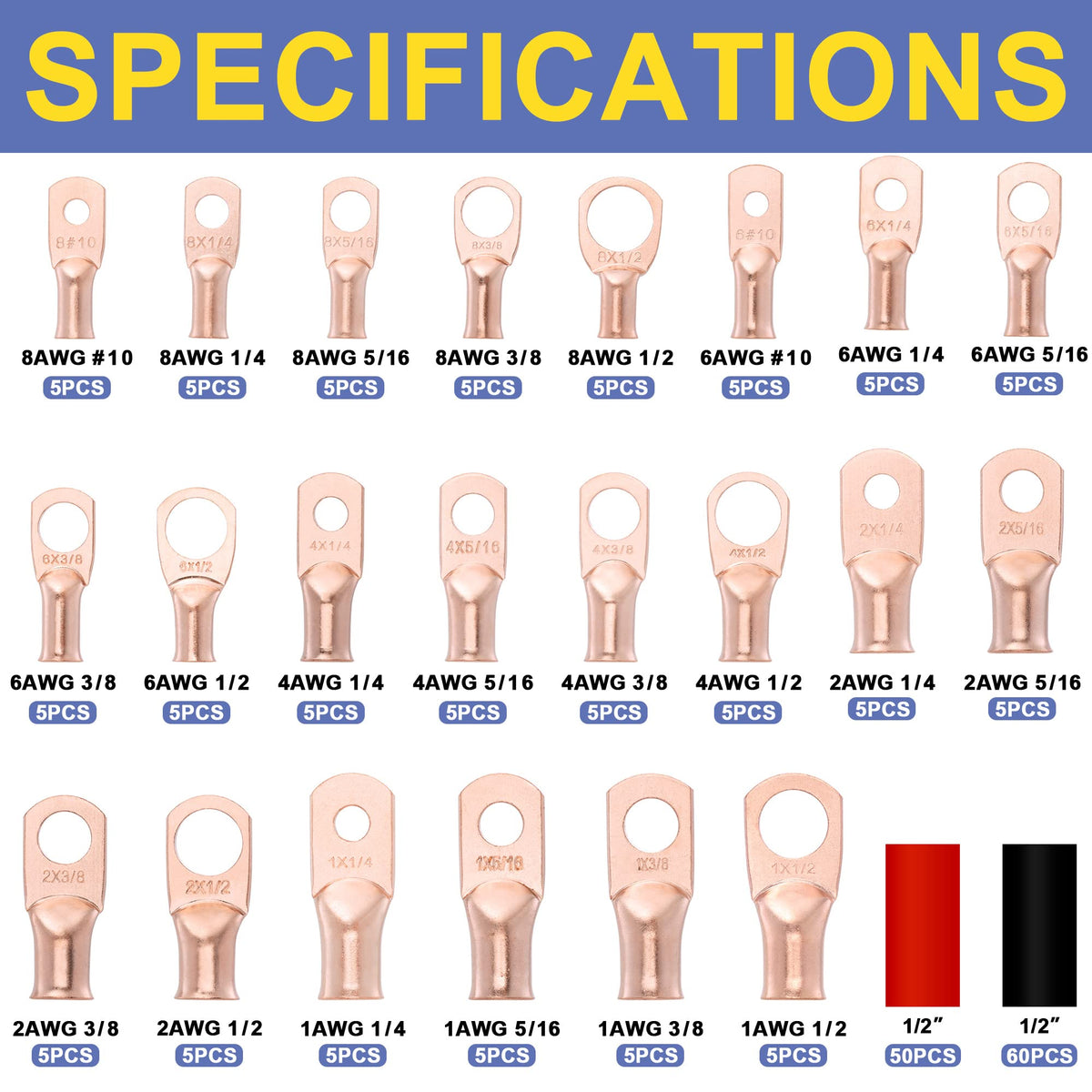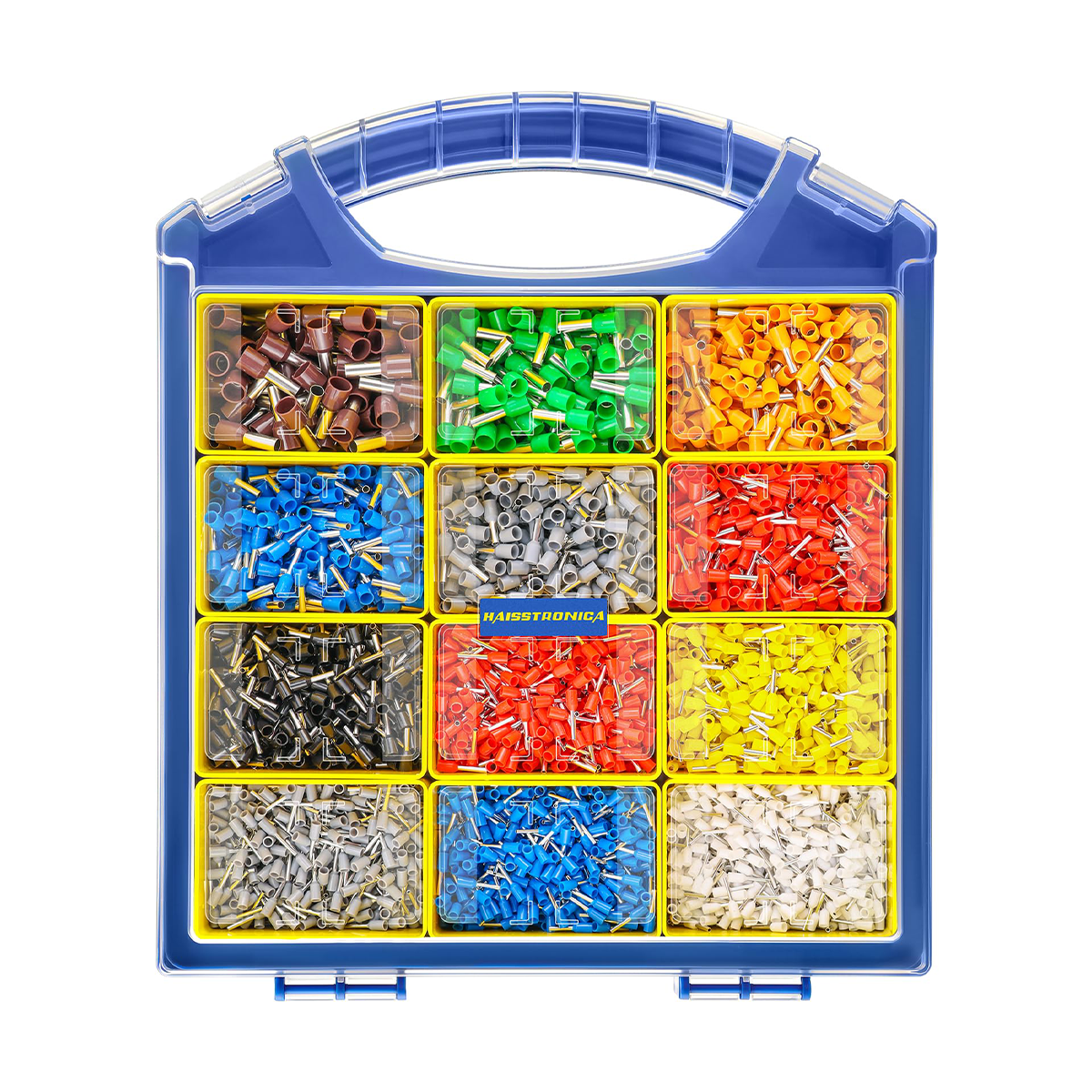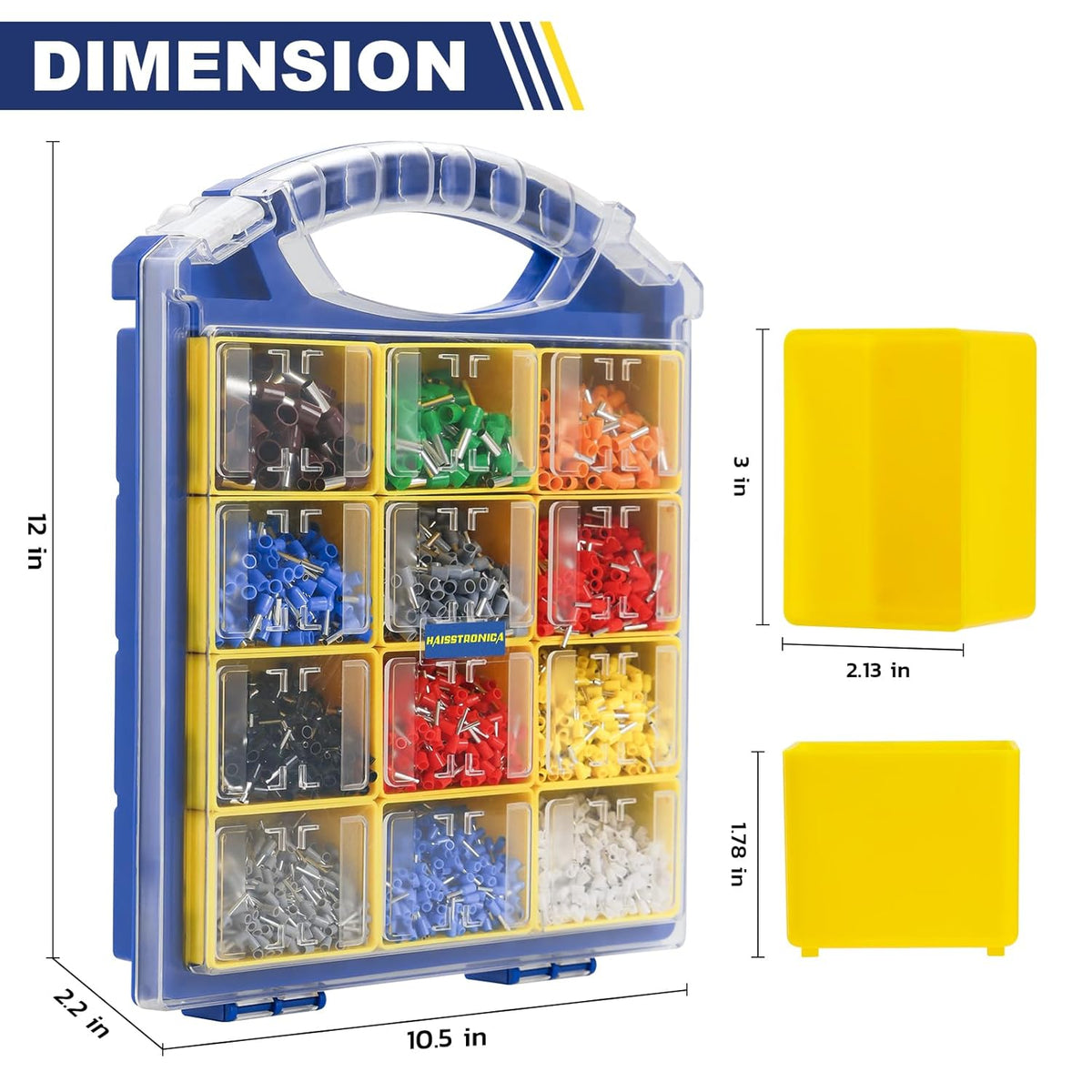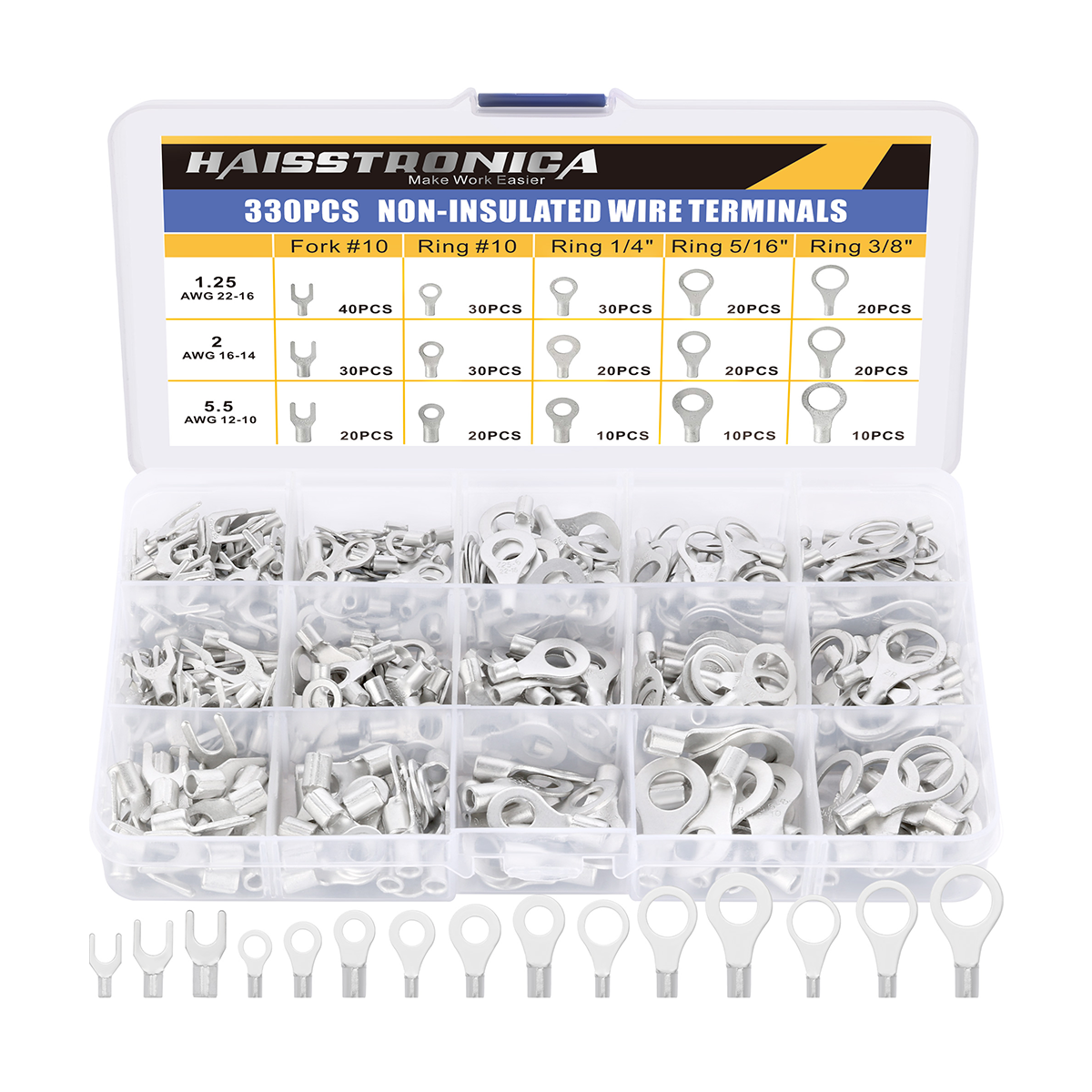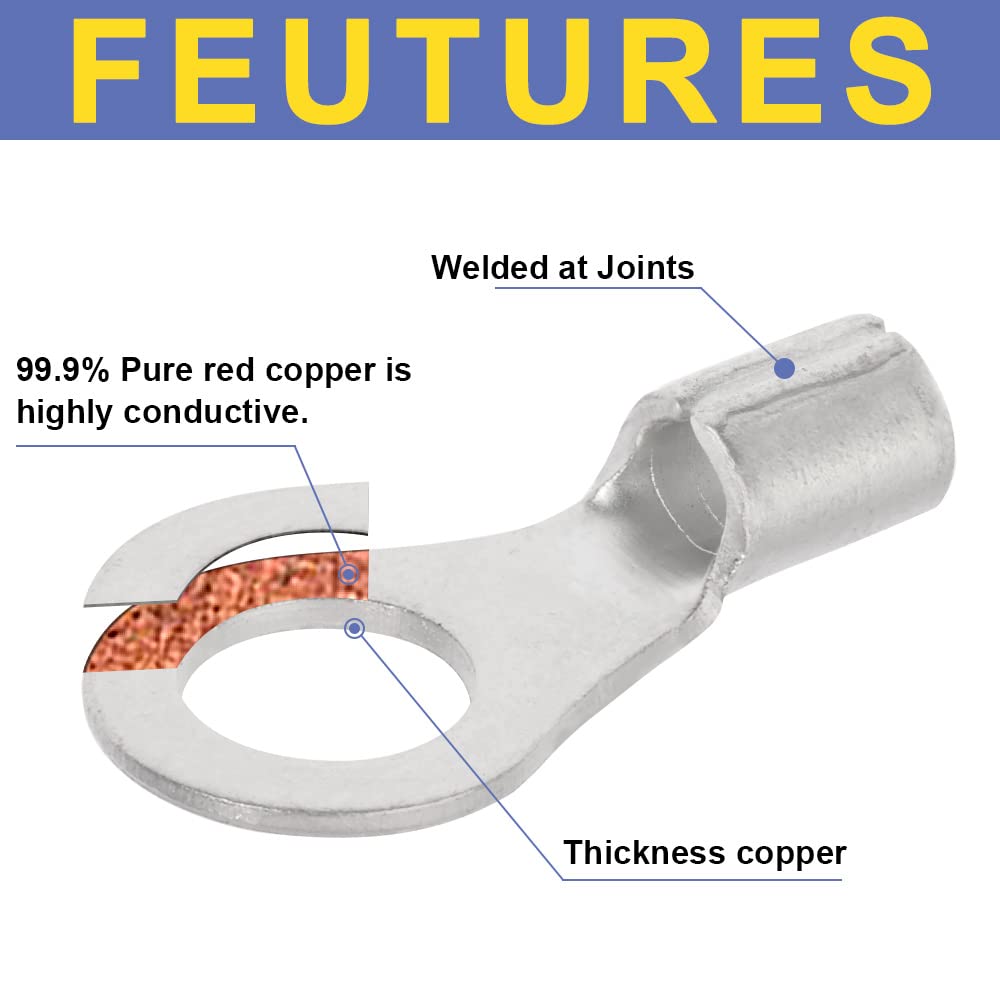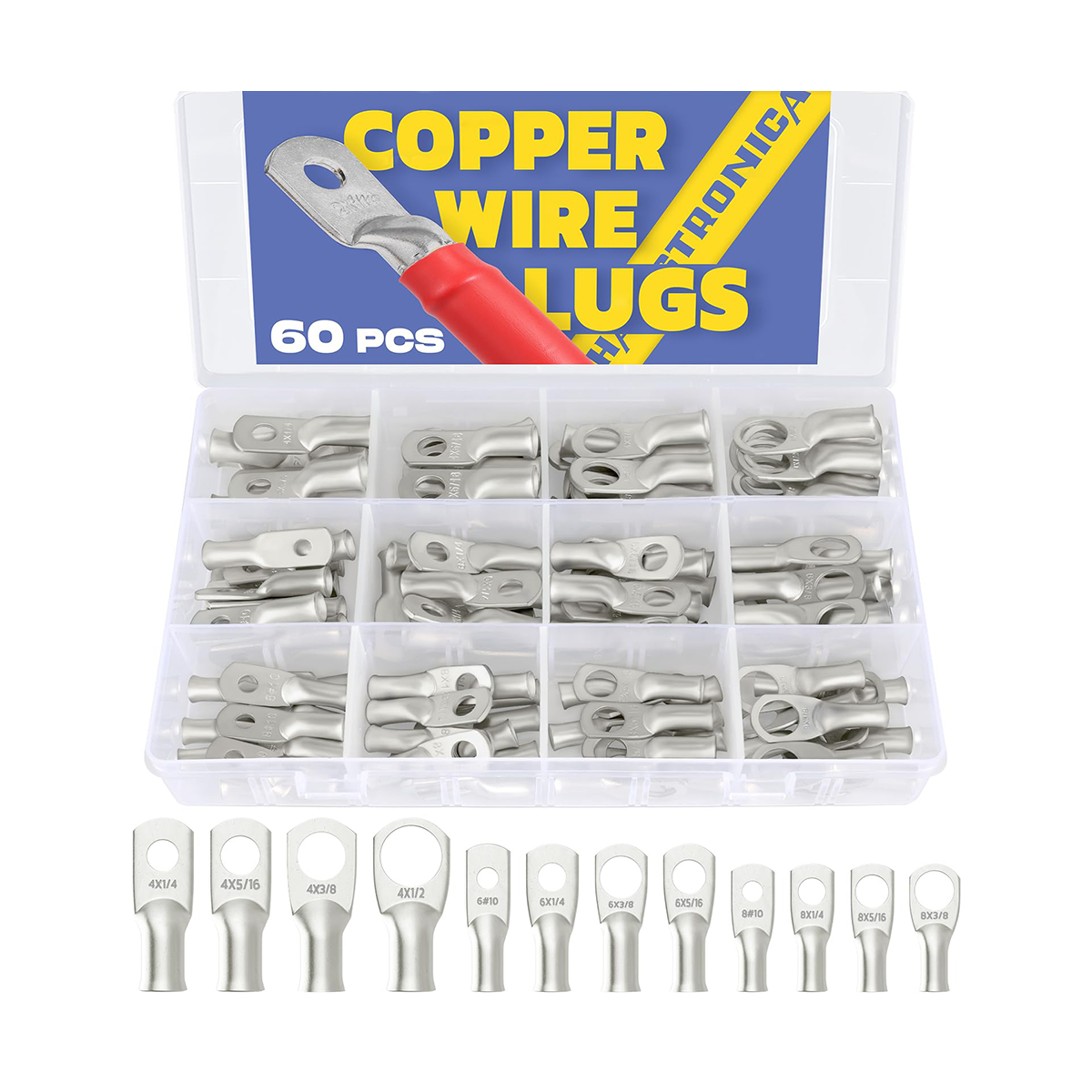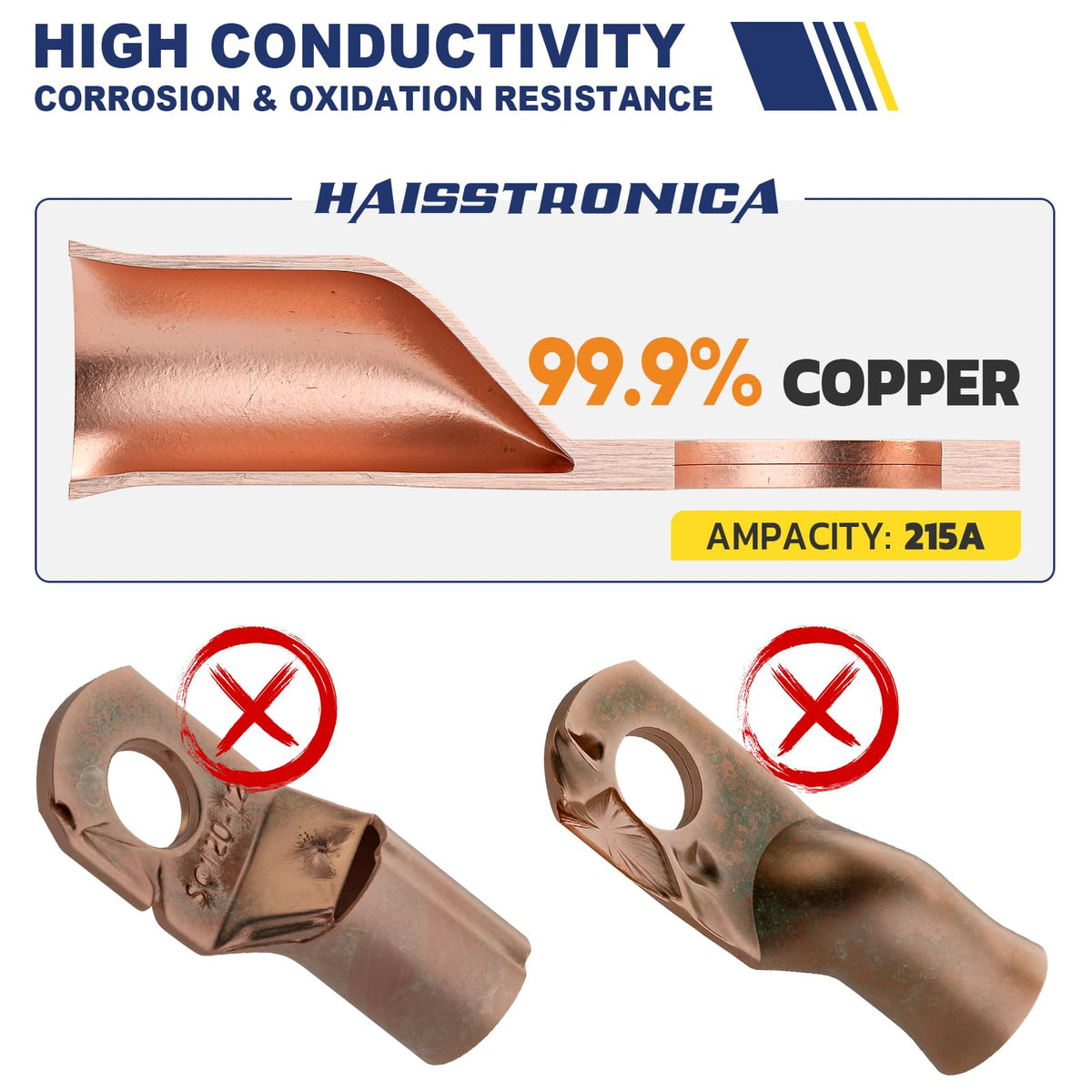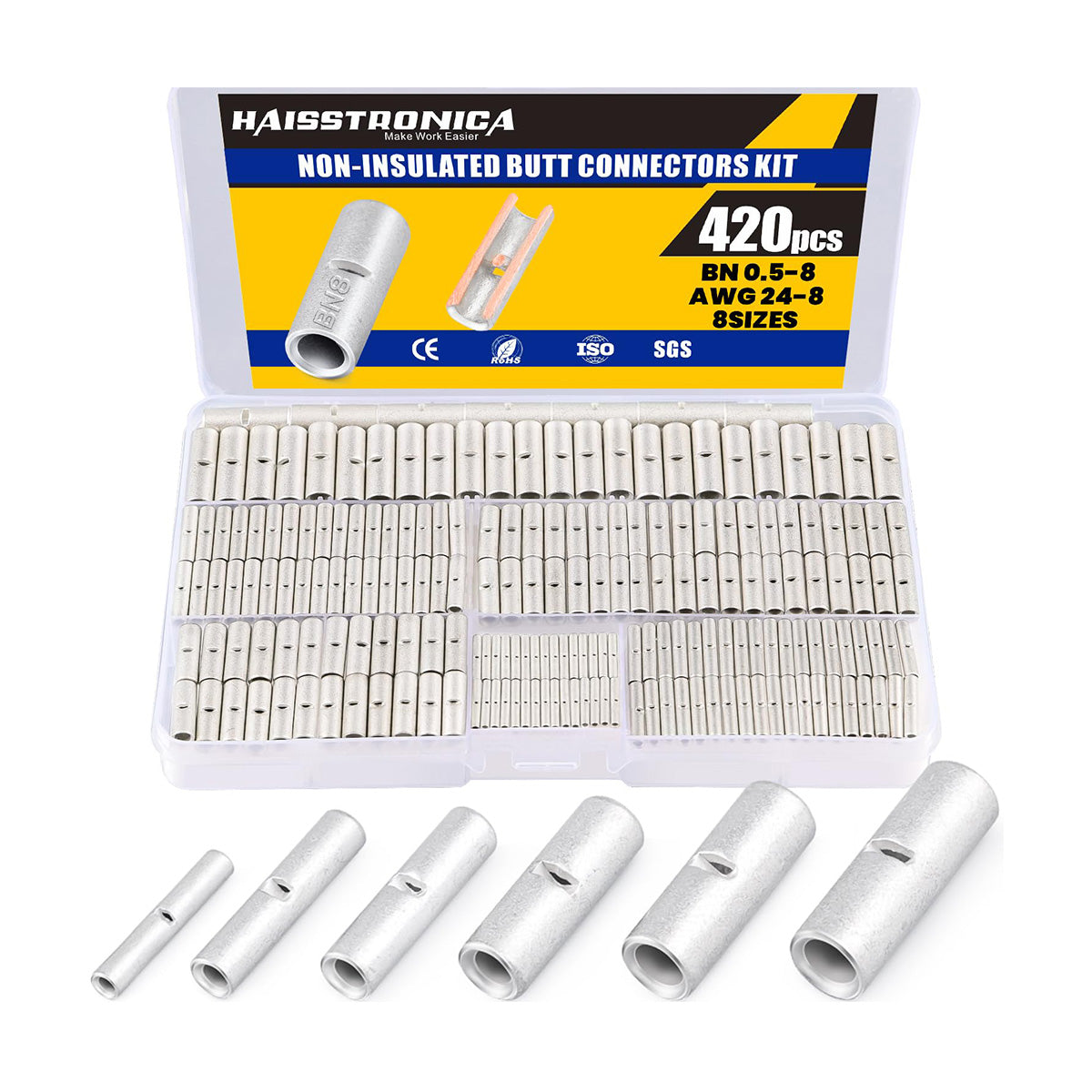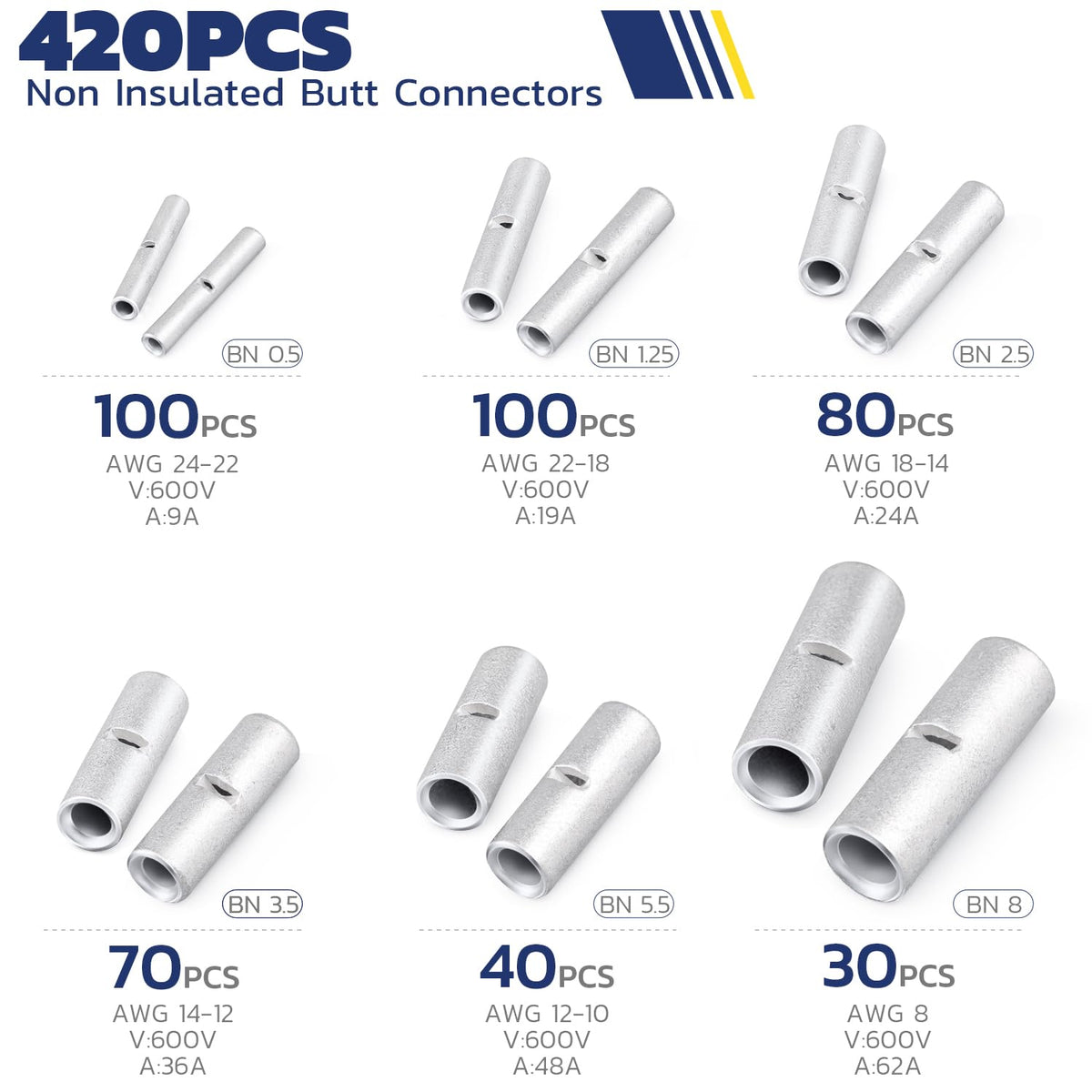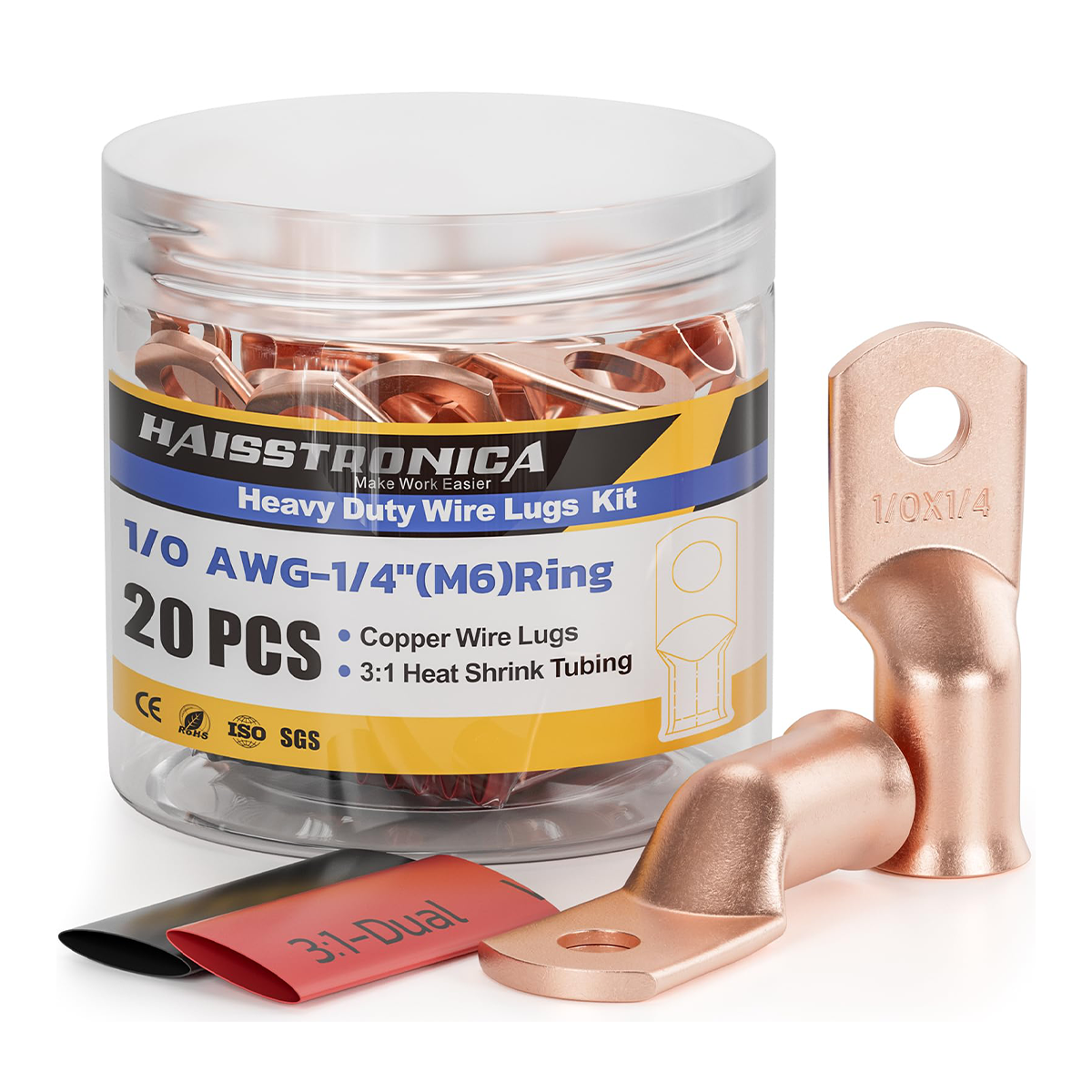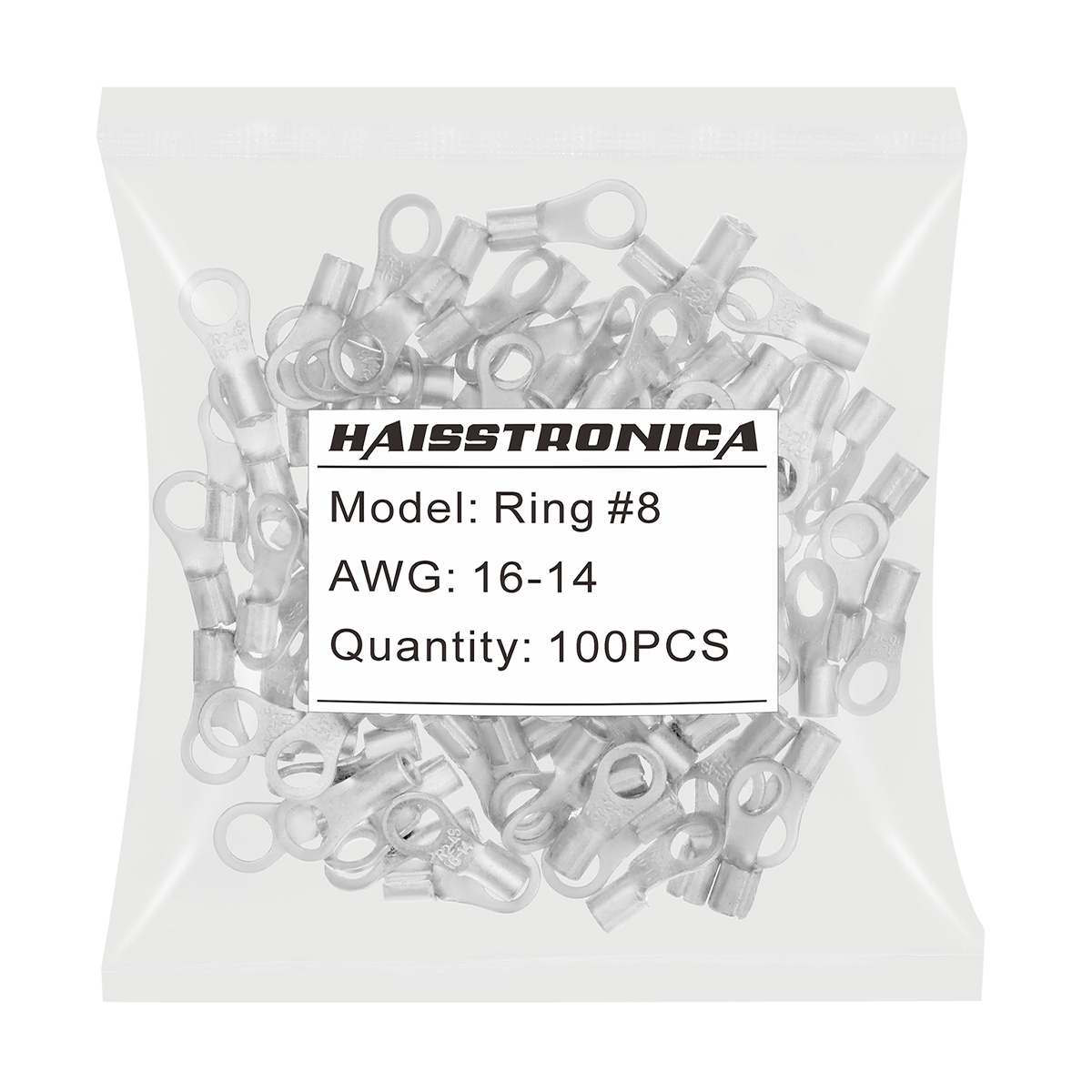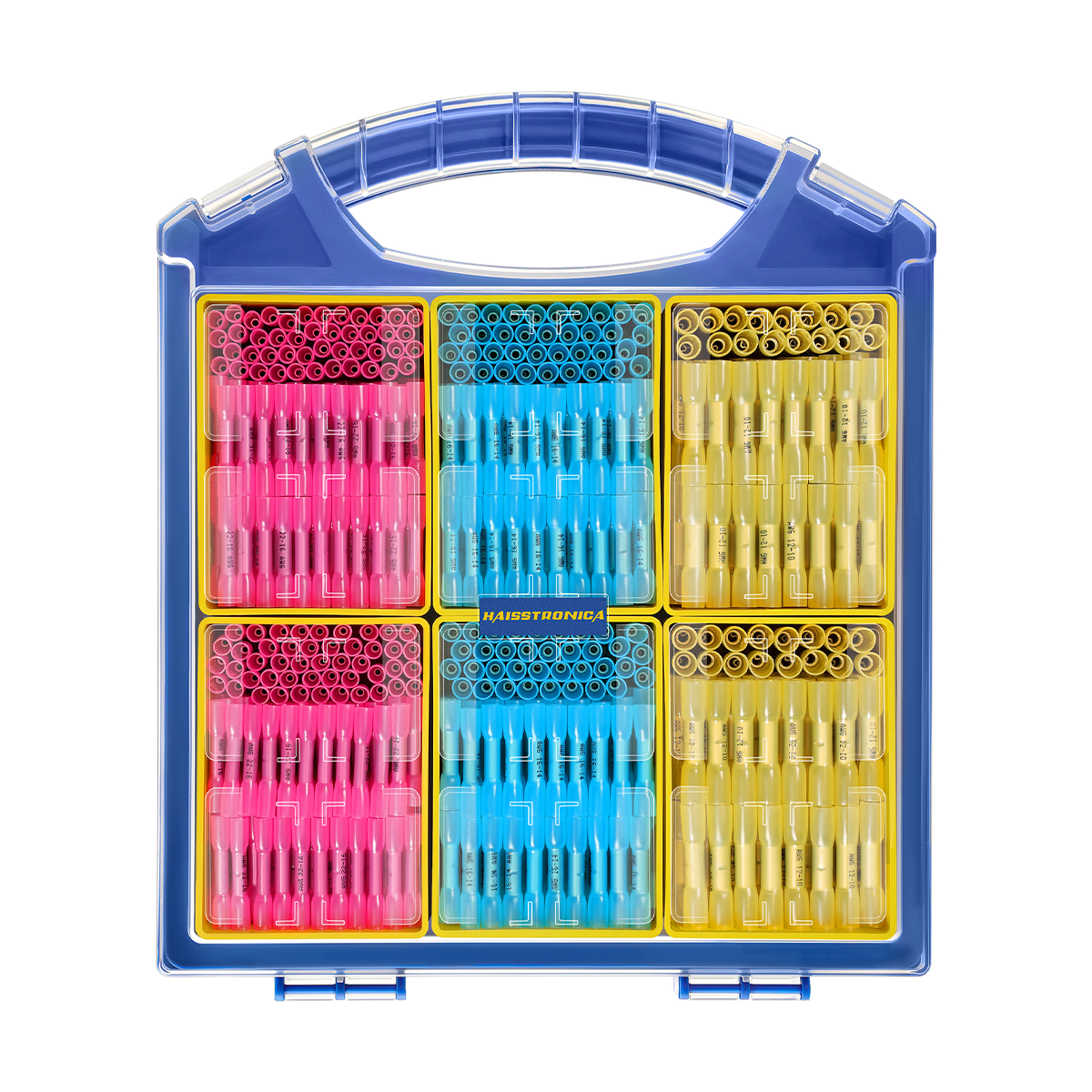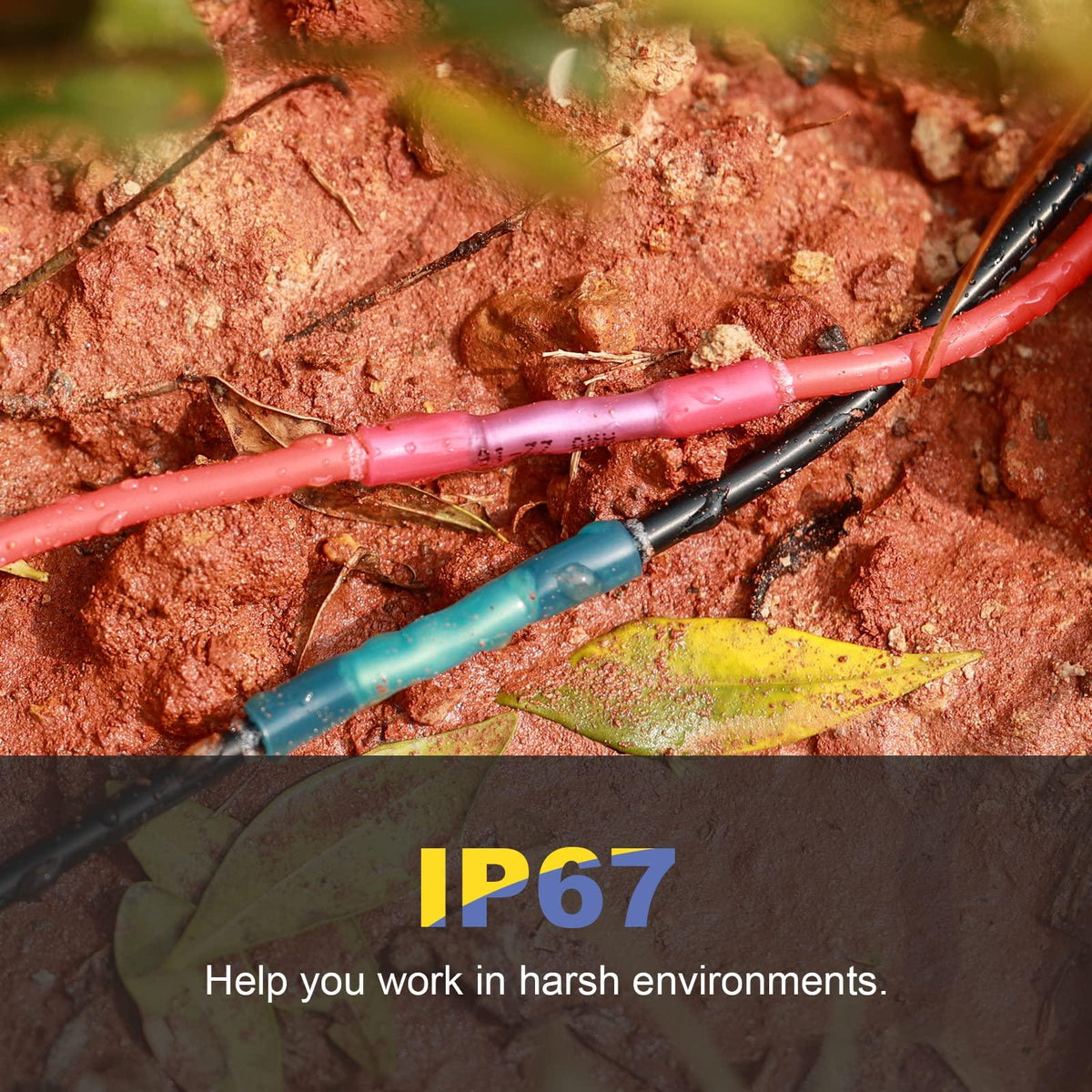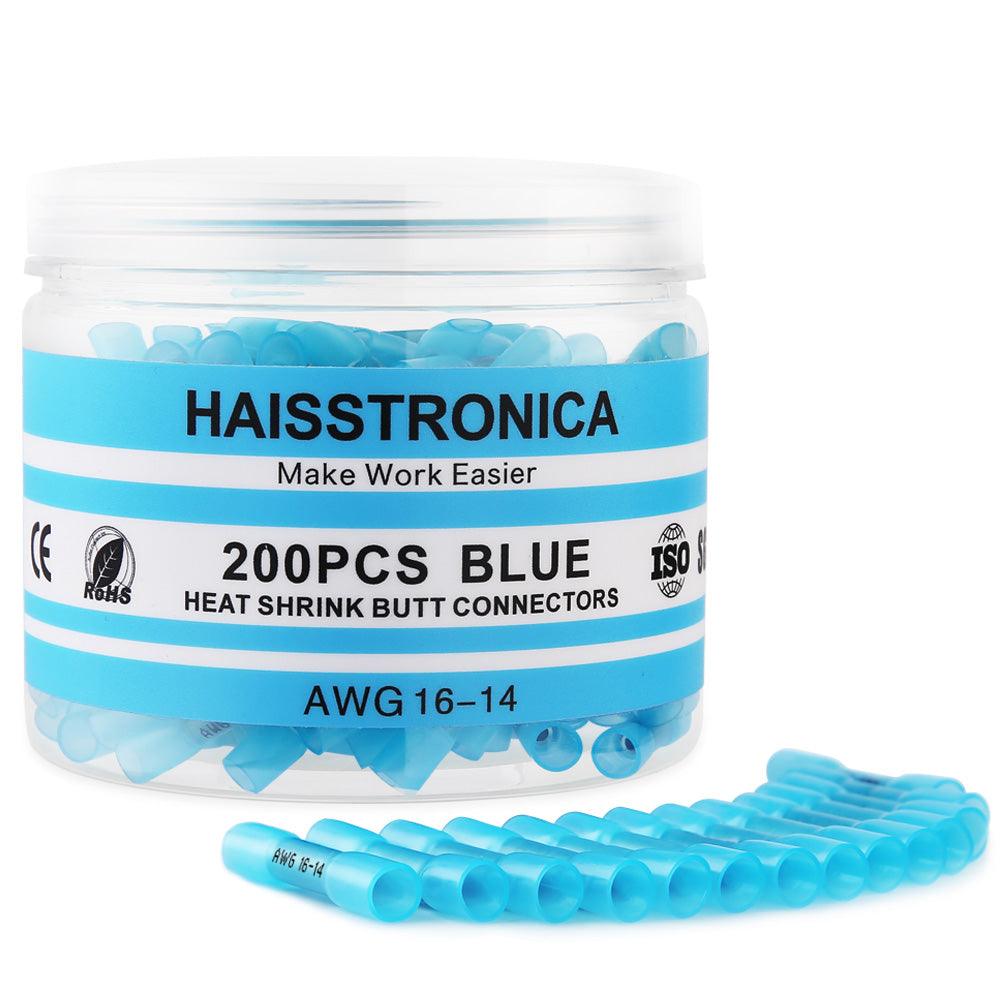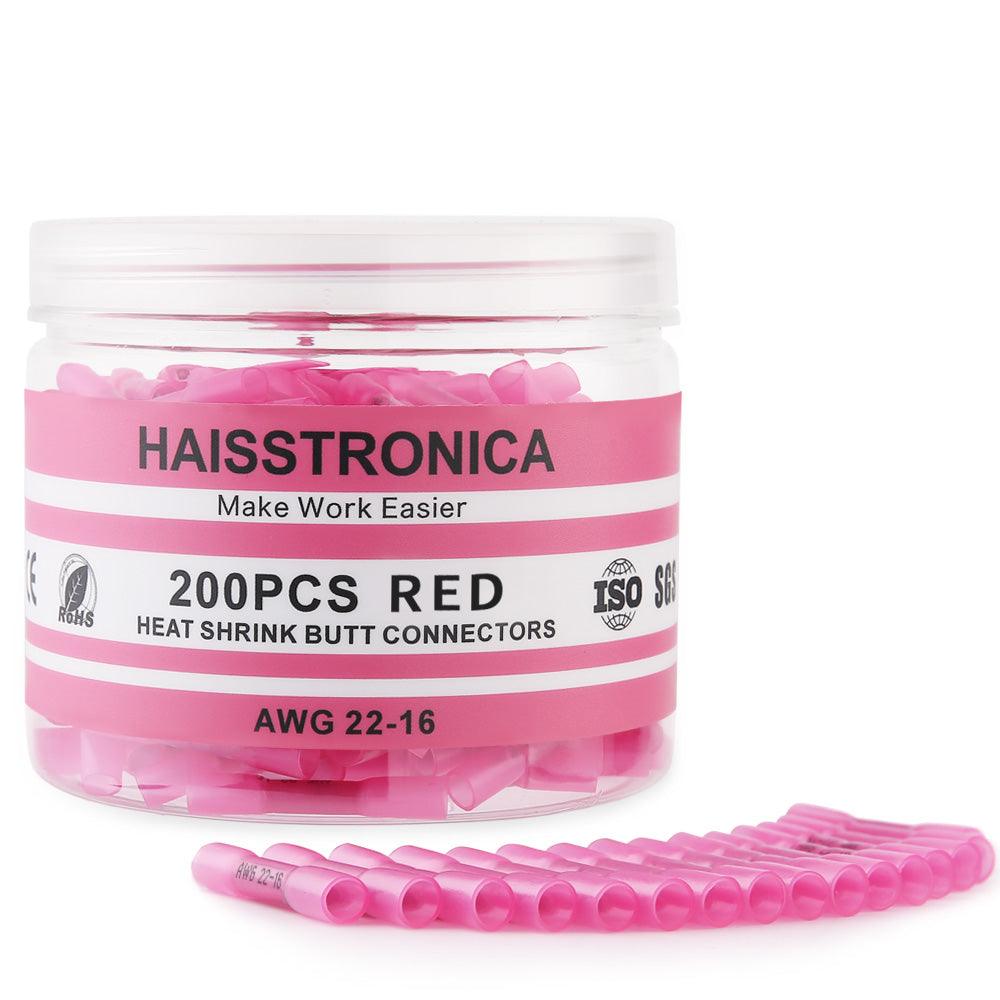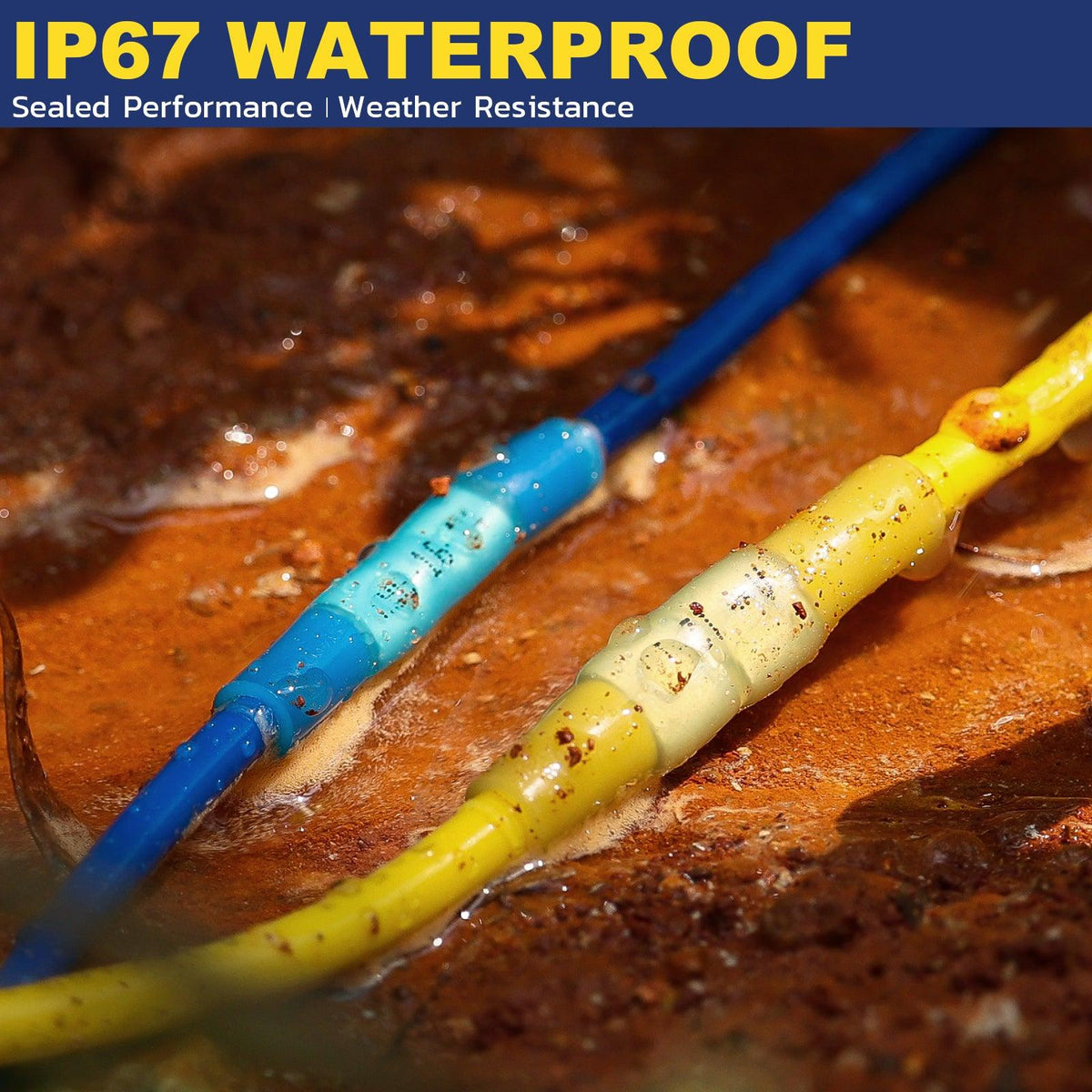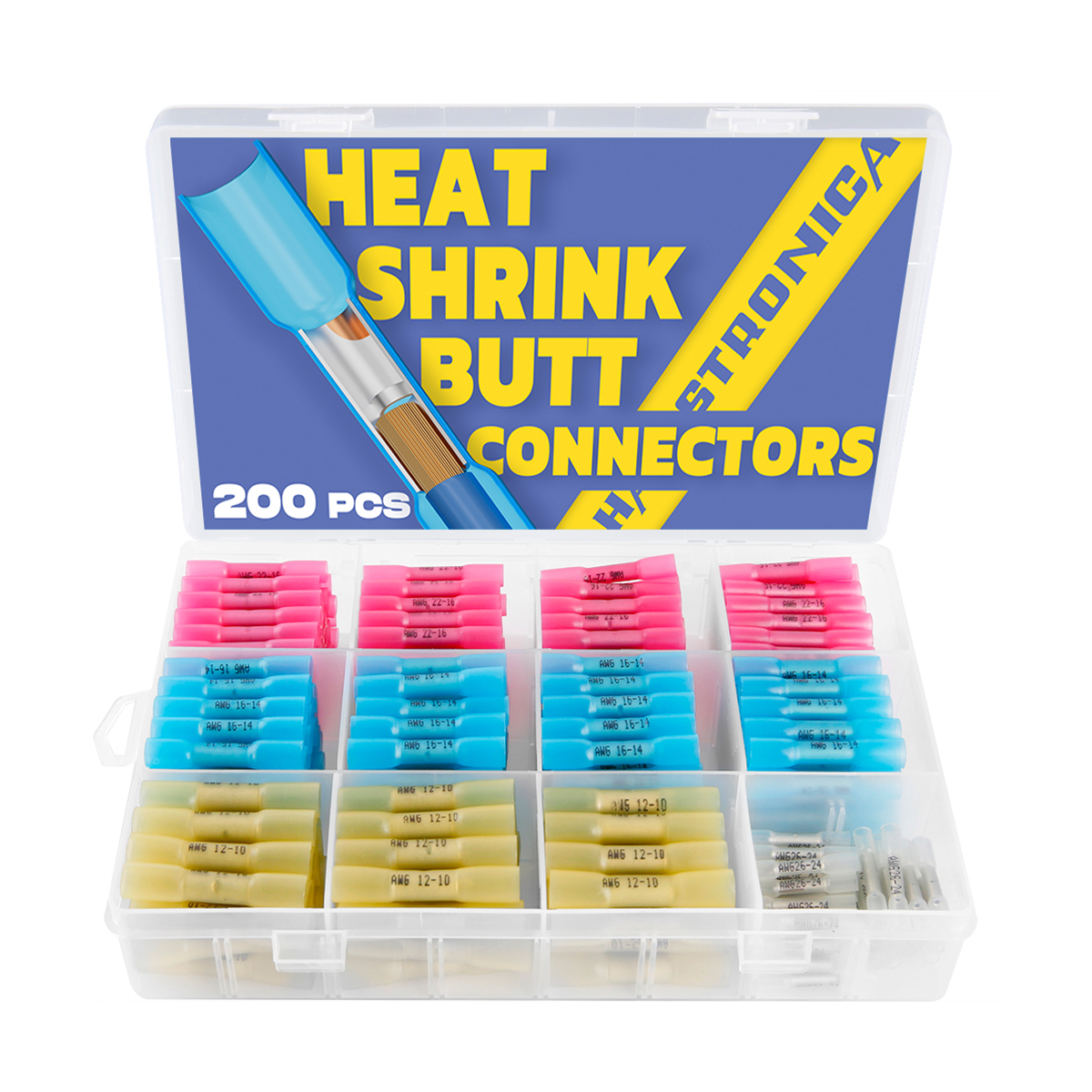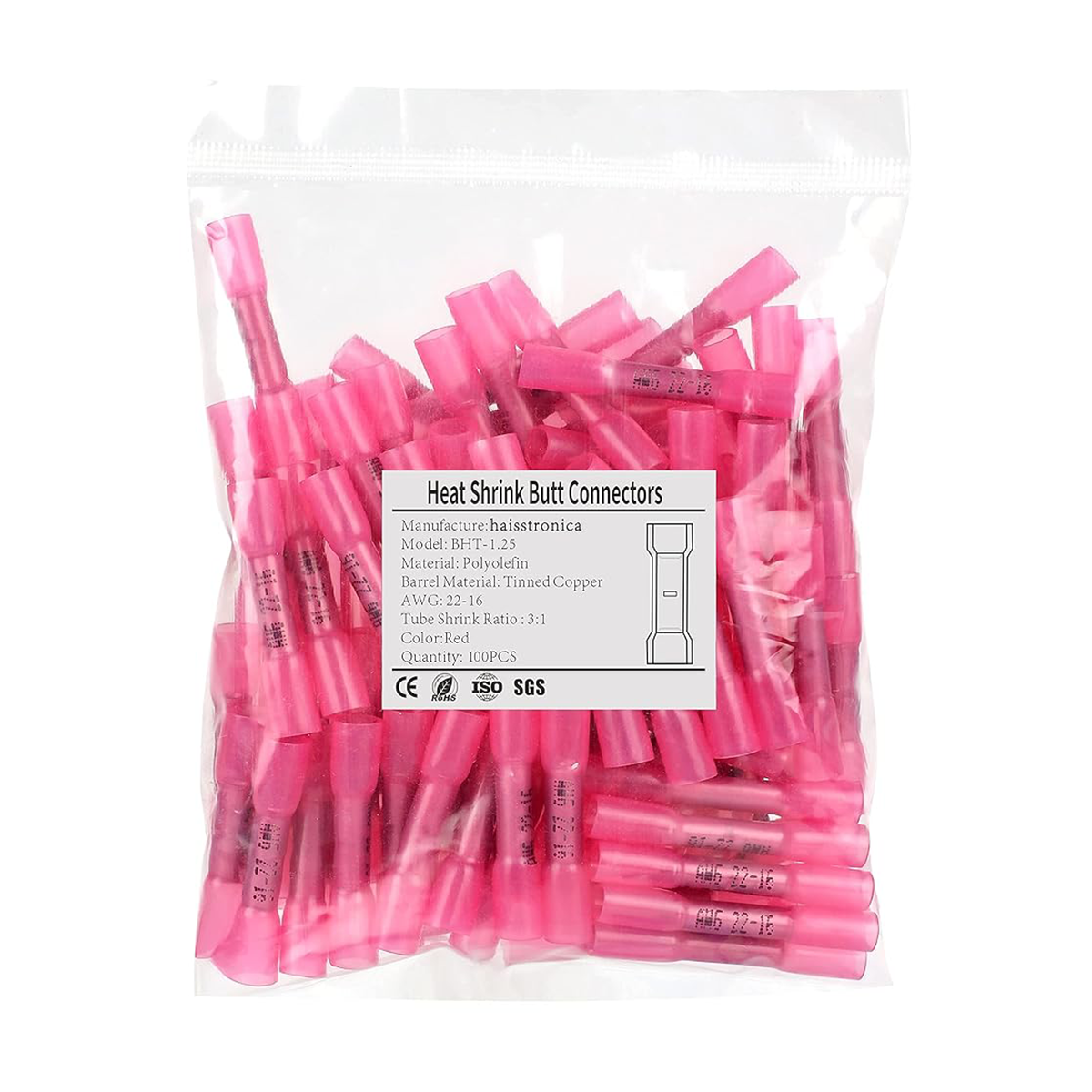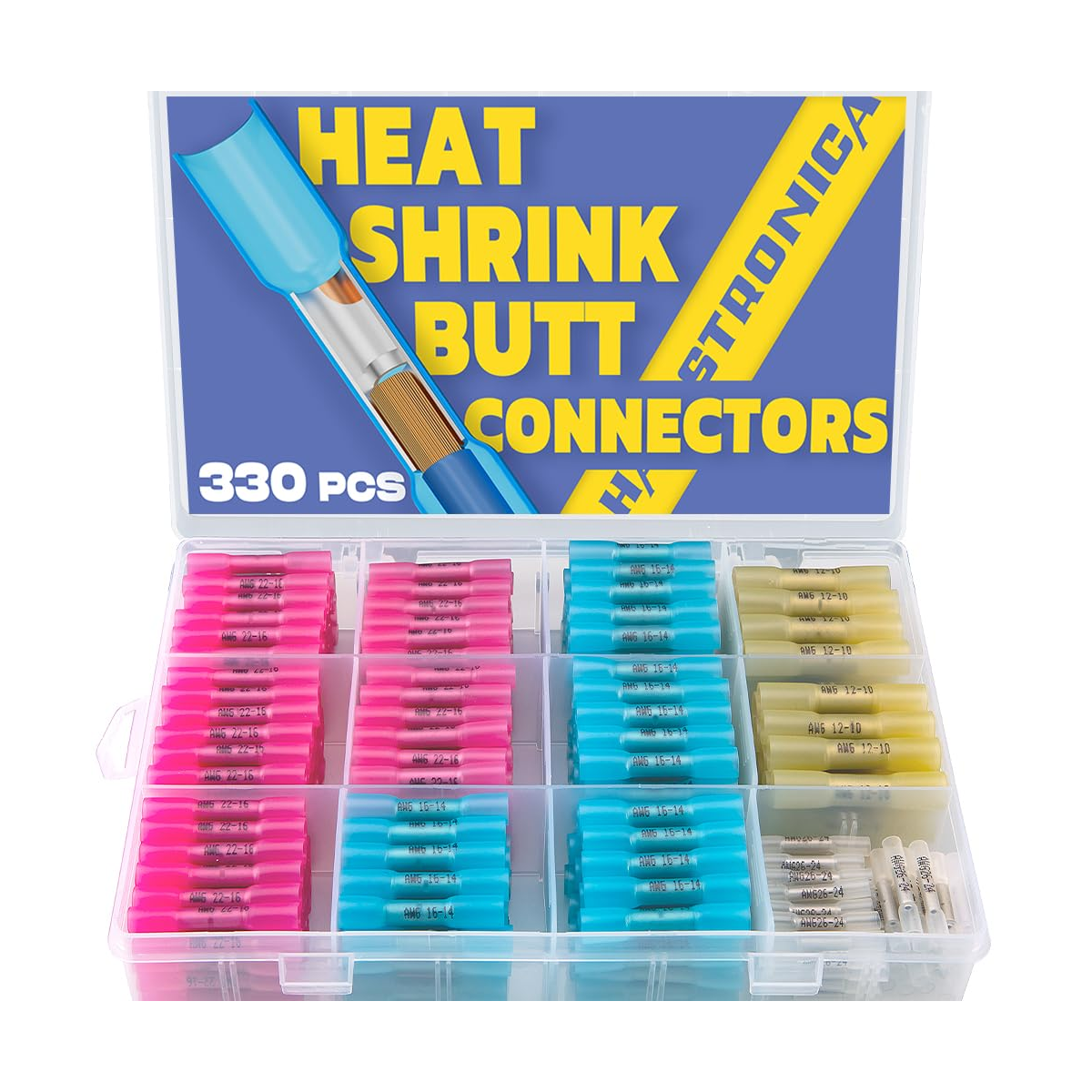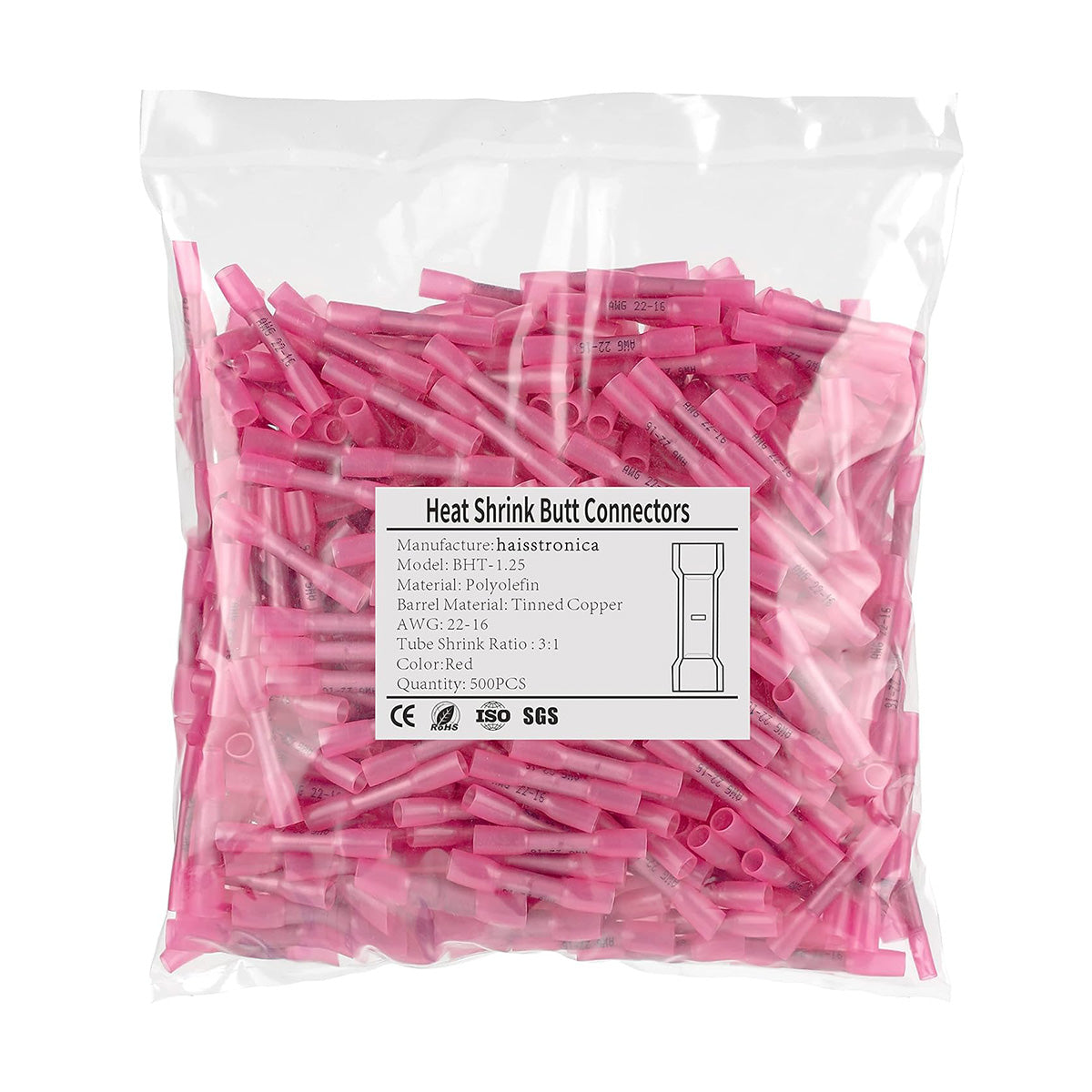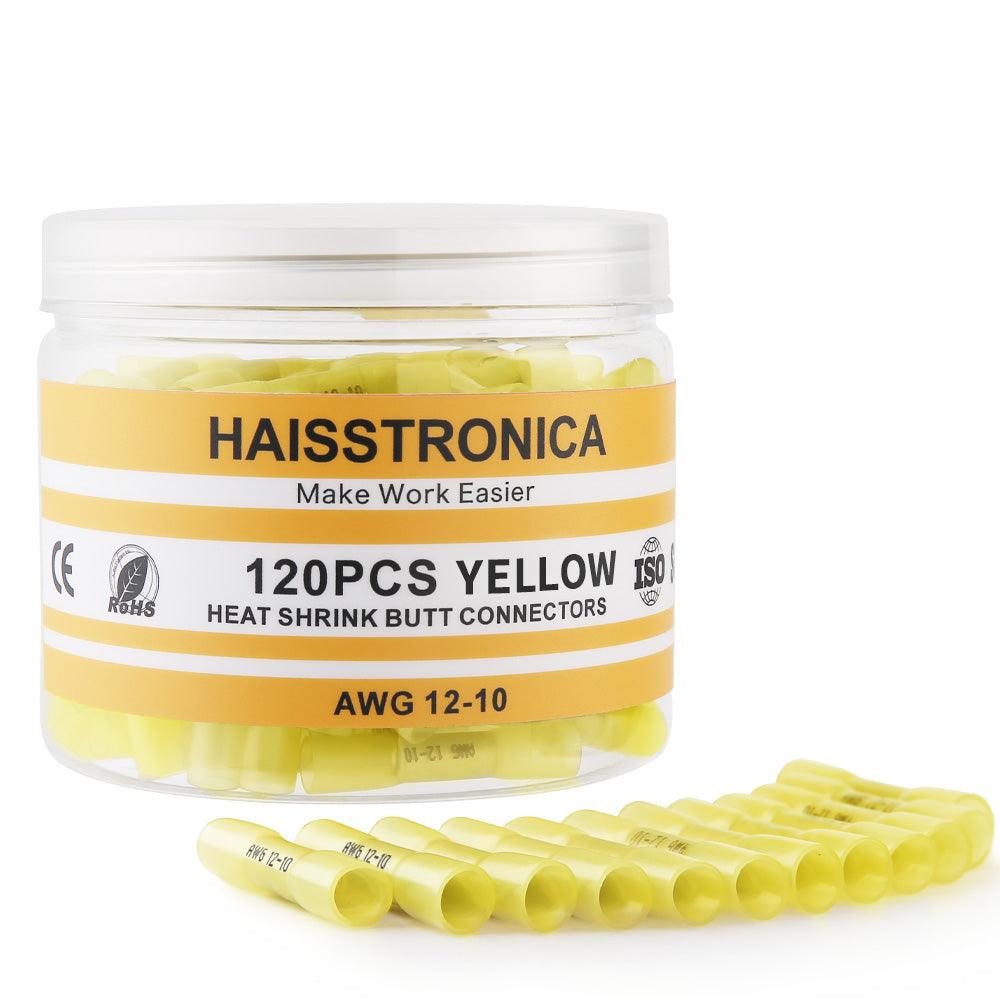If you’ve ever asked yourself “do crimps work on solid wire?”, the honest answer is: sometimes—if you use the right terminals and follow the right standards. Many crimp systems were engineered around stranded conductors, but there are proven terminal families and procedures that can crimp solid wire safely. In this guide, we’ll walk through what you can (and shouldn’t) crimp on solid conductors, why solid vs stranded crimp behavior differs, and when a compression lug for solid conductor is the better choice.
For consistent, repeatable results, a quality ratcheting crimping tool matters. Haisstronica’s pro-grade option is designed for heat-shrink terminals and repeatable force:
👉 Haisstronica Ratchet Wire Terminal Crimping Tool (AWG 22–10)
Read more: Cable crimping tool. Everything You Need to Know
What Can Be Crimped on Solid Wire — do crimps work on solid wire?
Short take: Certain terminal families are explicitly designed to accept solid conductors; others are stranded-only. Read the datasheet and follow the listing.
-
Terminals that allow solid conductors. TE Connectivity’s SOLISTRAND line is a common example—its literature states the series is “specially designed to terminate solid and stranded wire” and even mixed combinations (e.g., two wires in one splice within CMA limits). That’s a green light when you use the correct die and crimp height.
-
Terminals that are stranded-only. Many open-barrel contact systems (automotive and board-level) are validated and specified for stranded wire. You’ll often see “stranded only” in the wire spec tables for those product families and in crimp specs. Using solid wire there risks low pull-out and stress cracks.
-
Code and standard logic. The NEC 110.14 requires terminations to be “listed and identified” for the conductor class and material—translation: use a connector that says it’s rated for solid, and follow its instructions. Connector safety standards such as UL 486A-486B establish requirements for wire connectors and solderless lugs that are tested with the specific conductor classes (solid, compact, compressed, stranded).
-
Mission-critical exception (no solid). In aerospace workmanship standards, crimped contacts are strictly stranded-only. NASA-STD-8739.4 is explicit: “Crimped contacts shall be used with stranded wire only. Solid wire shall not be used with crimped contacts.” That’s a conservative reliability stance for high-vibration environments.
Bottom line: do crimps work on solid wire? Yes—if the terminal family is listed for solid, your wire crimping tool and die match the barrel geometry, and you verify crimp quality. If not, choose a compression lug for solid conductor or a screw-clamp terminal block rated for solid.
Buy it through pic or link: Ratchet Wire Terminal Crimping Tool For AWG 22-10 Heat Shrink Connectors
Common Failure Modes on Solid Wire — solid vs stranded crimp pitfalls
Crimp mechanics rely on elastic–plastic deformation of both the barrel and conductor to form a gas-tight “cold weld.” Solid wire behaves stiffer than stranded; that creates unique risks:
-
Stress cracking at the crimp interface. Because solid wire doesn’t redistribute strands under pressure, localized stresses can cause micro-cracks—especially with improper die geometry or over-crimp. Quality handbooks from Molex lay out why crimp height, bellmouth, and conductor brush are tightly controlled to prevent such defects.
-
Low pull-out due to barrel mismatch. Many open-barrel terminals are sized to flow around strands. Insert a solid conductor and you may get insufficient cold-flow and low retention. Always check the product’s crimp spec tables and tooling notes.
-
Thermal cycling loosening. Solid copper creeps differently under temperature swings. If the barrel isn’t designed for it (no serrations, wrong wall thickness), contact resistance can rise over time. SOLISTRAND-type barrels, which are specified for solid, mitigate this by design.
-
Work-hardening and conductor fracture. Re-crimping the same terminated end (a no-no) or using a die that pinches instead of properly compressing can notch a solid conductor and create a future break point. IPC/industry handbooks stress one-and-done crimps with correct die geometry and inspection.
-
Environment mis-match. High vibration (transport, machinery) punishes solid conductors more than stranded. That’s why some sectors (space/aero) ban solid in crimped contacts altogether.
How to reduce risk in a solid vs stranded crimp:
-
Use a listed terminal (e.g., SOLISTRAND) and its recommended die/profile.
-
Set your ratcheting wire crimper to spec’d crimp height and perform pull tests.
-
Add adhesive-lined heat-shrink to damp strain (when compatible).
-
For large gauge feeders, choose a compression lug for solid conductor that’s UL-listed for solid and use a calibrated hex/hydraulic crimping tool per the lug datasheet.
Read more: Cable crimping tool. Everything You Need to Know
Use-Case Notes — crimp solid wire, compression lug for solid conductor
Here’s where crimp solid wire can be appropriate—and where it isn’t.
1) Panel and appliance terminations (small AWG)
-
When it can work: Using uninsulated butt splices or ring/fork terminals rated for solid (again, SOLISTRAND is a common choice), with proper die and wire crimping tool. Verify pull-out and inspect for full barrel fill.
-
When to avoid: Open-barrel automotive contacts and most IDC/insulation-crushing styles unless the datasheet calls out solid compatibility (rare).
2) Field splices in building wiring
-
Code lens: NEC 110.14 requires listed methods for CU solid branch circuits. In many jurisdictions the accepted methods are twist-on connectors (wire nuts) or set-screw lugs inside listed devices, not generic crimp splices. If you crimp, the connector must be listed for solid conductors and installed with the specified crimping tool.
-
Good alternative: Compression lug for solid conductor on service/feeder conductors using a UL-listed two-indent or hex die sequence; torque to spec on the equipment stud.
3) Automotive/EV and machinery
-
Best practice: Use stranded conductors; most harness terminals (open-barrel, F-crimp) are engineered for stranded only. For any sensor or power pin that claims solid compatibility, demand a validation test (pull-out, resistance delta, thermal cycle).
4) Marine and harsh vibration
-
Prefer finely stranded tinned copper with adhesive-lined heat-shrink terminals. Agencies and workmanship standards for high-reliability environments (e.g., NASA) prohibit crimping solid wire because of vibration and fatigue concerns.
5) High-current terminations (battery/ground bars)
-
Use compression lugs specifically marked for solid or stranded as required, and crimp with the electrical crimping die callout from the lug manufacturer (hex, indent). UL 486A-486B covers these devices and their markings.
Buy it through pic or link: Ratchet Wire Terminal Crimping Tool For AWG 22-10 Heat Shrink Connectors
Choosing tools & verifying quality (the practical checklist)
-
Pick the right terminal family. If you need to crimp solid wire, select a terminal explicitly rated for solid—TE SOLISTRAND is the canonical example.
-
Match die geometry to the barrel. Open-barrel “F-crimp” dies for automotive pins ≠ closed-barrel splice dies. Follow the tooling part numbers in the terminal’s crimp spec.
-
Use a ratcheting, calibrated tool. A repeatable crimping tool produces consistent height and compression. Haisstronica’s ratchet tool is purpose-built for insulated/heat-shrink terminals in the AWG range most DIYers and pros use:
👉 Haisstronica Ratchet Wire Terminal Crimping Tool (AWG 22–10). -
Inspect every crimp. Check conductor brush/bellmouth, verify crimp height with calipers/micrometer, and do a sample pull test. See the Molex Crimp Quality Handbook for acceptance criteria.
Putting it all together (answers to the big four)
-
Do crimps work on solid wire?
Yes, if—and only if—your terminal family is listed for solid conductors and you use the specified die and process. -
What’s the safe default when the datasheet is unclear?
Assume stranded-only for open-barrel terminals; choose a compression lug for solid conductor or a screw-clamp terminal block listed for solid. -
Why is solid vs stranded crimp behavior different?
Solid wire has fewer interfaces and higher bending stiffness, so it cold-flows and fatigues differently; the wrong barrel geometry leads to stress cracking and low pull-out. -
Any contexts where crimping solid wire is outright banned?
Yes—NASA workmanship standards prohibit it for spaceflight hardware (stranded only). Some OEM specs in aerospace similarly restrict to stranded.
Our Top User-friendly Picks
Crimp faster and cleaner with the Haisstronica ratcheting tool engineered for heat-shrink terminals and AWG 22–10. The precision jaws deliver a uniform squeeze for a solid wire crimp connector every time, while the quick-release lever speeds resets. Our ergonomic grip reduces fatigue during long sessions. This is a true crimping tool electrical pros trust—built from heat-treated steel for durability and accuracy. Pair it with Haisstronica connectors for sealed, vibration-resistant joints, and rely on the smooth ratchet to prevent over- or under-crimps. When you need dependable electric crimpers, reach for Haisstronica to get shop-quality results anywhere.
Buy it through pic or link: Ratchet Wire Terminal Crimping Tool For AWG 22-10 Heat Shrink Connectors
Read more: Cable crimping tool. Everything You Need to Know
Conclusion
“Do crimps work on solid wire?” They can, but only when the entire system—terminal listing, crimping tools, die geometry, and inspection—supports it. If you’re unsure, the conservative, code-aligned path is to use a compression lug for solid conductor or a terminal block rated for solid. When you do crimp solid wire, stick to terminal families such as SOLISTRAND that explicitly permit it, and follow the crimp specification to the letter. That’s how you turn a theoretical yes into real-world reliability.
Ready to upgrade your toolkit for consistent, verified crimps?
👉 Get the Haisstronica Ratchet Wire Terminal Crimping Tool and pair it with the correct terminals for your conductor class.
